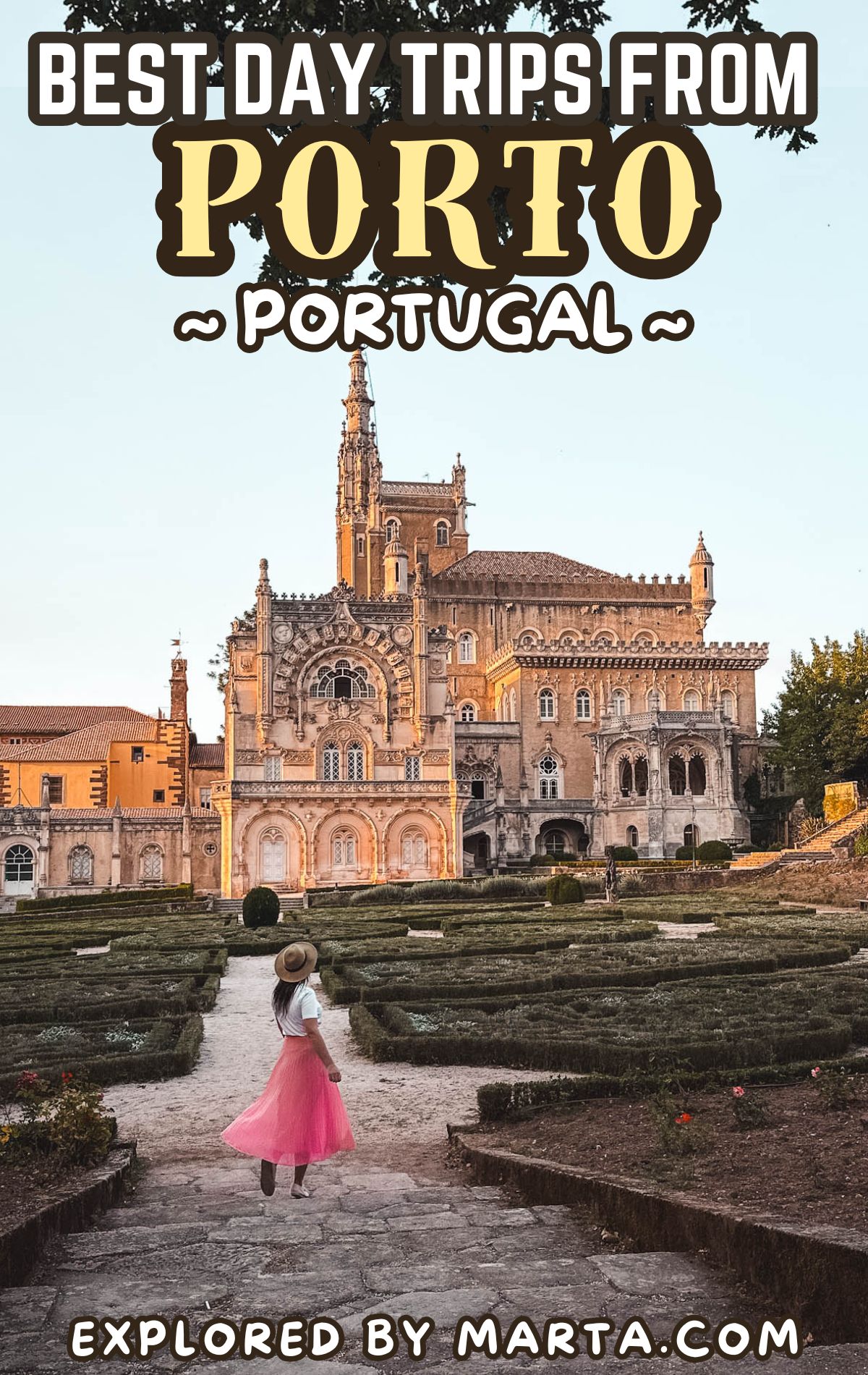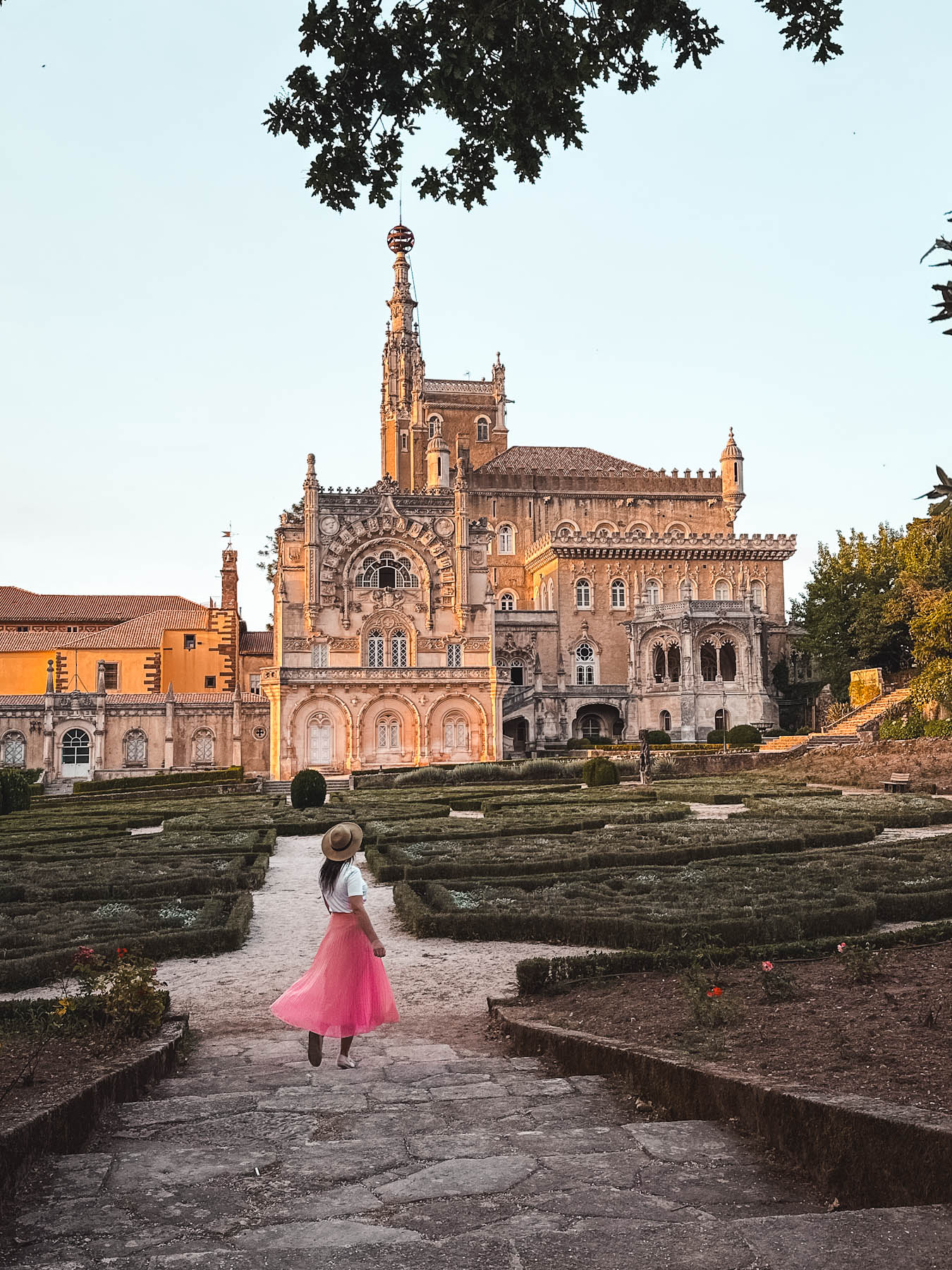21 best day trips from Porto, Portugal
This post may contain affiliate links. If you use these links to buy something I may earn a small commission at no extra cost to you! Thank you for your support!
Looking for the best day trips from Porto, Portugal? You’ve come to the right place. Thanks to its great location and easy transport connections, Porto makes it super convenient to visit some of Northern Portugal’s most beautiful and famous places.
Overall, we’ve spent months living in and exploring Northern Portugal, and I feel like we’ve discovered and visited everything there was to see.
In this blog post, you’ll find all the most popular day trips from Porto, including all the famous landmarks, medieval towns, nature spots, and vibrant cities in Northern Portugal, all with photos, descriptions, and locations on Google Maps. Happy travels!
1. Aveiro, the Venice of Portugal

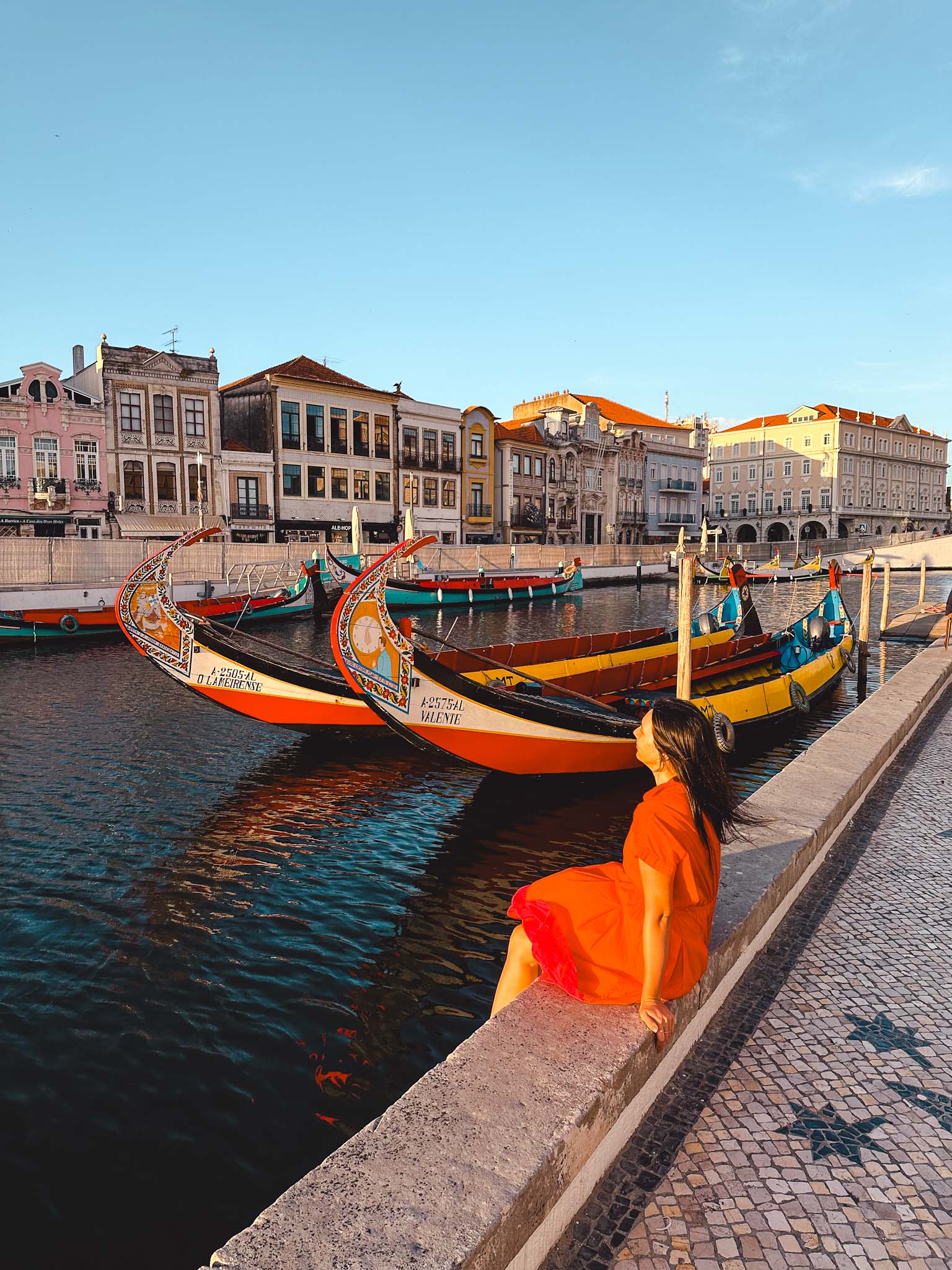
Aveiro is one of my favorite cities we visited in Portugal! It is also known as the ‘Venice of Portugal’, and I think it might as well be one of the most picturesque places in the country!
Aveiro boasts beautiful Art Nouveau buildings and a city center full of water canals, where you can take a ride in the iconic moliceiro boats – the town’s traditional wooden boats, similar to gondolas in Venice (hence the nickname, Venice of Portugal)!
Located just about an hour south of Porto, Aveiro makes for a perfect day trip from Porto. We stayed in this city for a couple of days, exploring everything Aveiro had to offer – from its postcard-perfect architecture to the vast salt flats next to the city!
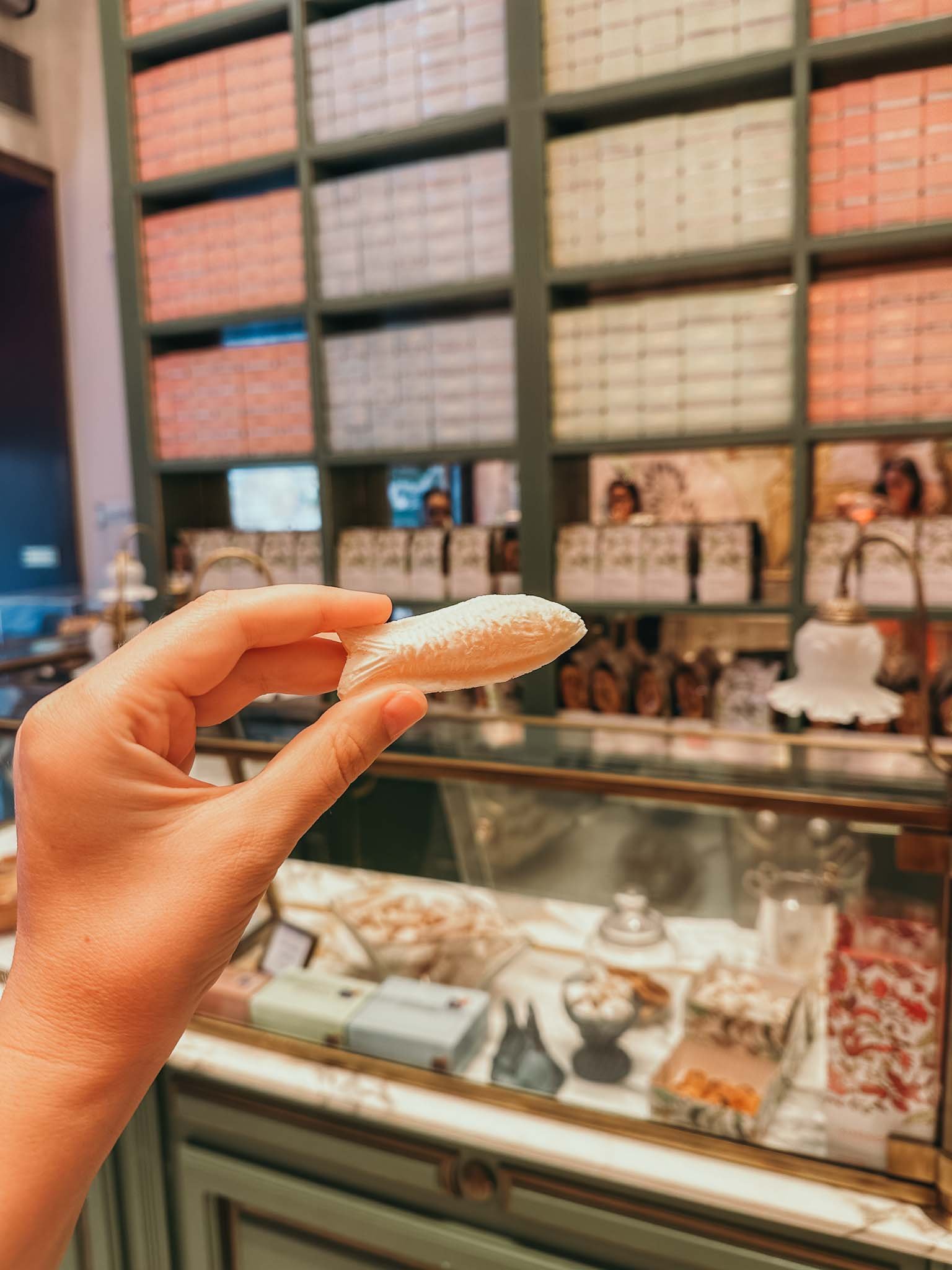

And you simply have to take a boat ride through the city’s canals! These beautifully painted boats were once used to harvest seaweed from the lagoon, but today it is a tourist attraction and one of the best ways to see the city!
If you love sweets, you absolutely have to try ovos moles, Aveiro’s most iconic sweet treat. They are made of a soft, paste-like mixture of egg yolk and sugar, encased in a rice paper shell shaped like a fish or a seashell. Just stop by a sweets shop and try one!
However, my favorite place in Aveiro was actually a short drive from the center, and it was Costa Nova, a charming beachside village known for its candy-stripped houses! For that, it is one of the most famous villages in Portugal.
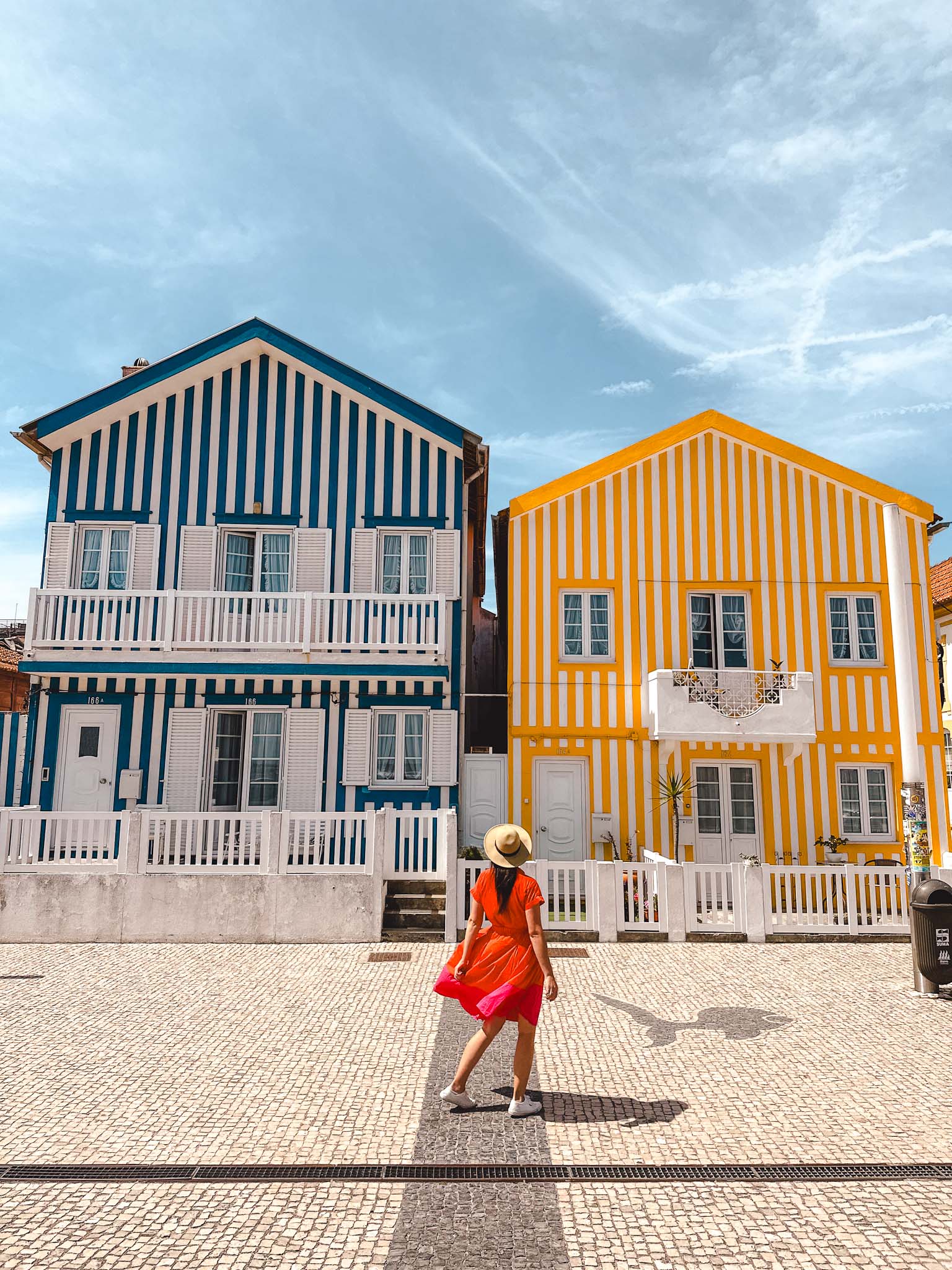

These colorful houses (they are called ‘palheiros’) were once used by fishermen to store their fishing gear. Now, some of them are residential properties. I highly recommend stopping by this unique, postcard-perfect place before you stroll to the beach.
We took way too many photos of those cute houses, haha!
Aveiro is one of those places that is full of character and is very relaxing at the same time. The city is near Porto, so it receives quite a few tourists during the day, but there’s something special about this place that makes you want to stay a little longer. If you can, do it!
Location: Aveiro
2. Douro Valley, the famous Portuguese wine region

The Douro Valley, the birthplace of Port wine, is one of the most beautiful regions in Northern Portugal and an absolute must-visit for anyone traveling through the country.
The Douro Valley is known for its terraced vineyards, scenic river views, and charming wine estates. And since 2001, it has been listed as a UNESCO World Heritage Site.
One of the best ways to experience this region is by taking a scenic drive along the N222 road, which winds along the river, and stopping by scenic viewpoints overlooking the vineyards and the river below.
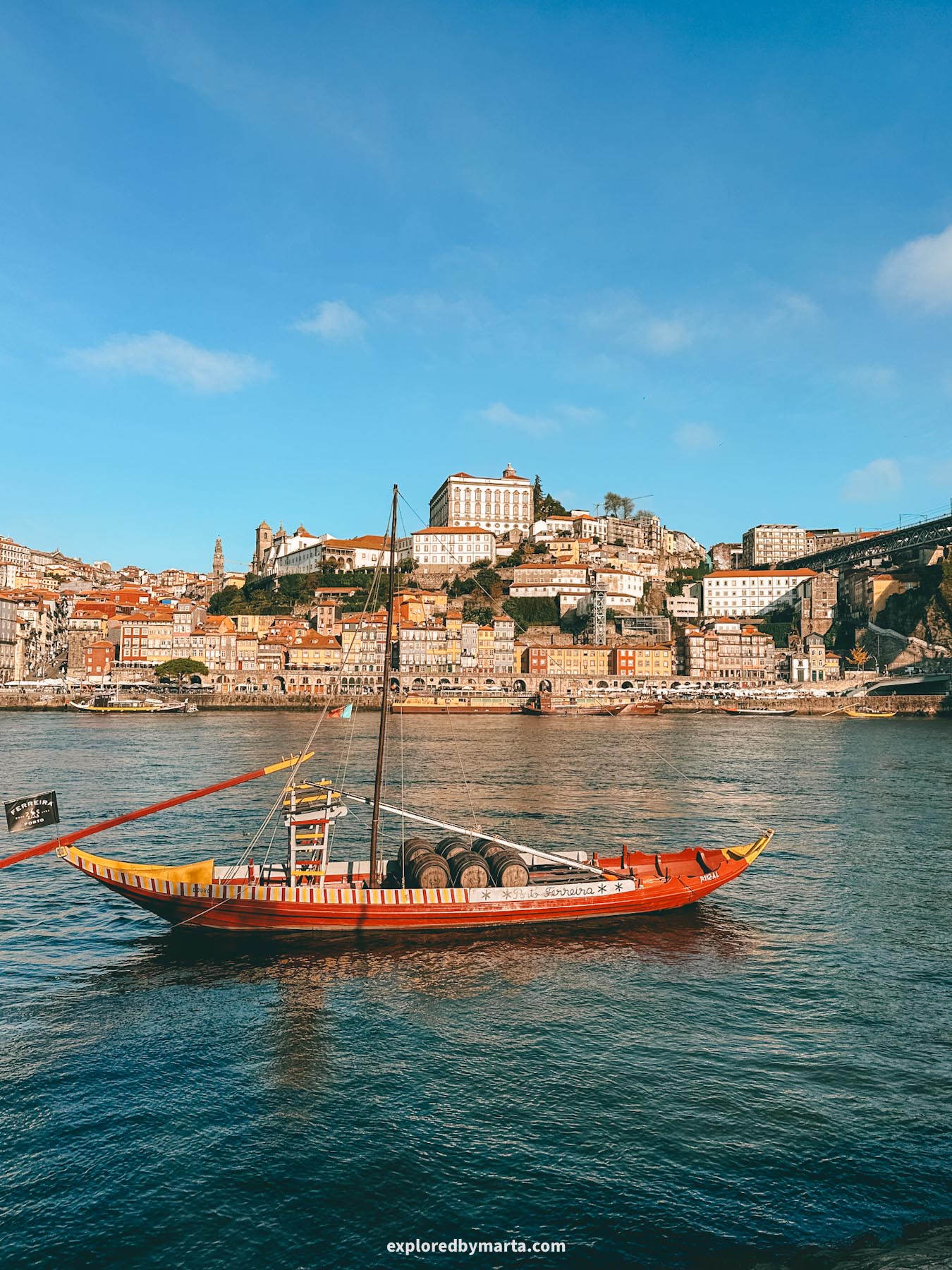

Two of the most popular stops along the way are Peso da Régua and Pinhão – small towns at the riverfront offering scenic boat rides and river cruises along the Douro River. Just drive there and go to the pier – there will likely be somebody who will grab you immediately, haha.
However, some of my favorite viewpoints along the way include Miradouro São Leonardo de Galafura, Miradouro da Boneca, and Miradouro da Portela, offering some of the most beautiful views of the endless rows of terraced vines cascading down the hillsides.
If you don’t have a car, there are plenty of group trip options to choose from right from Porto, with transportation, wine tasting, lunch, and a river cruise included. You just have to choose one and arrive at the pickup point. Enjoy!
3. Guimarães, the birthplace of Portugal
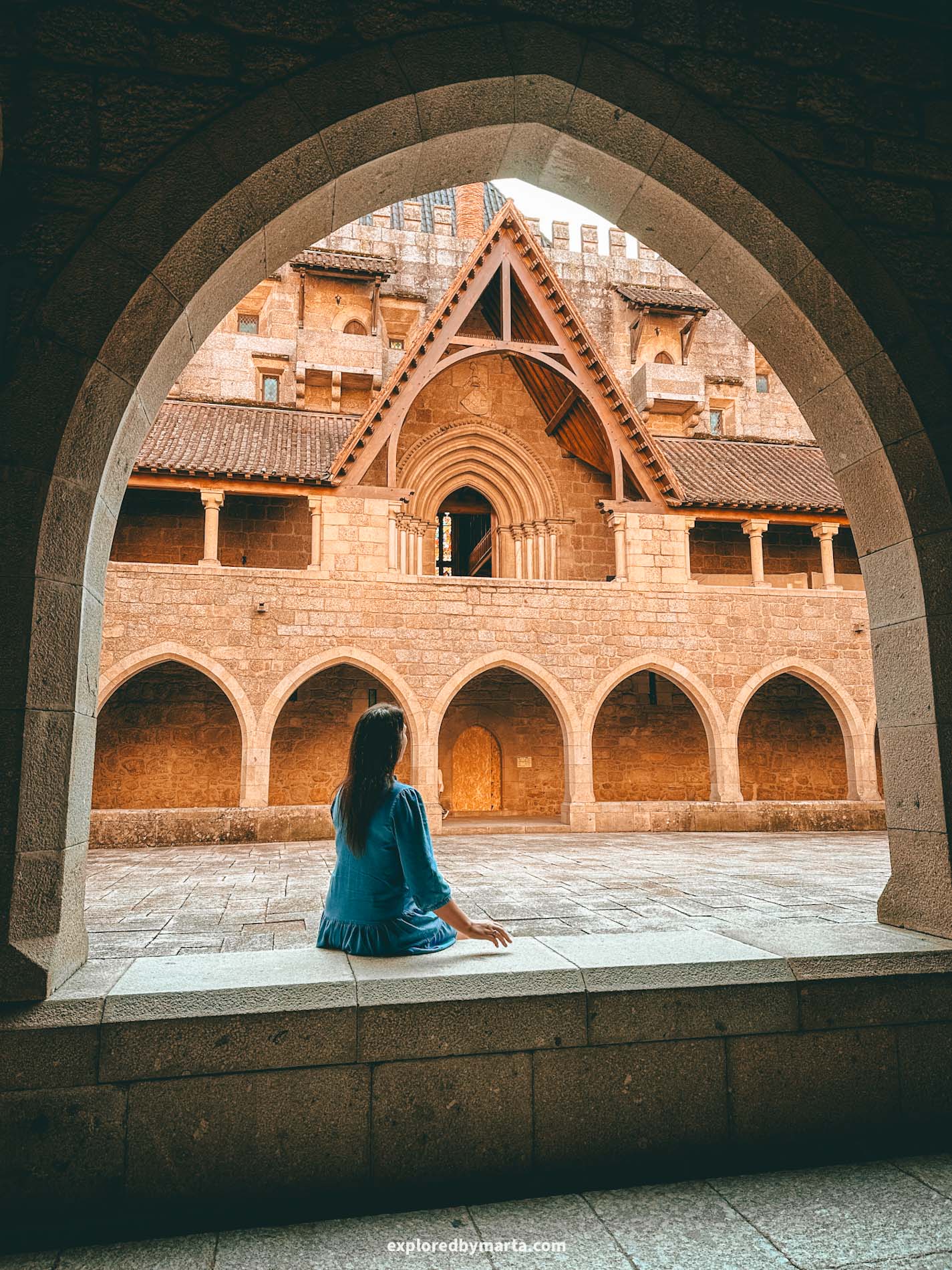
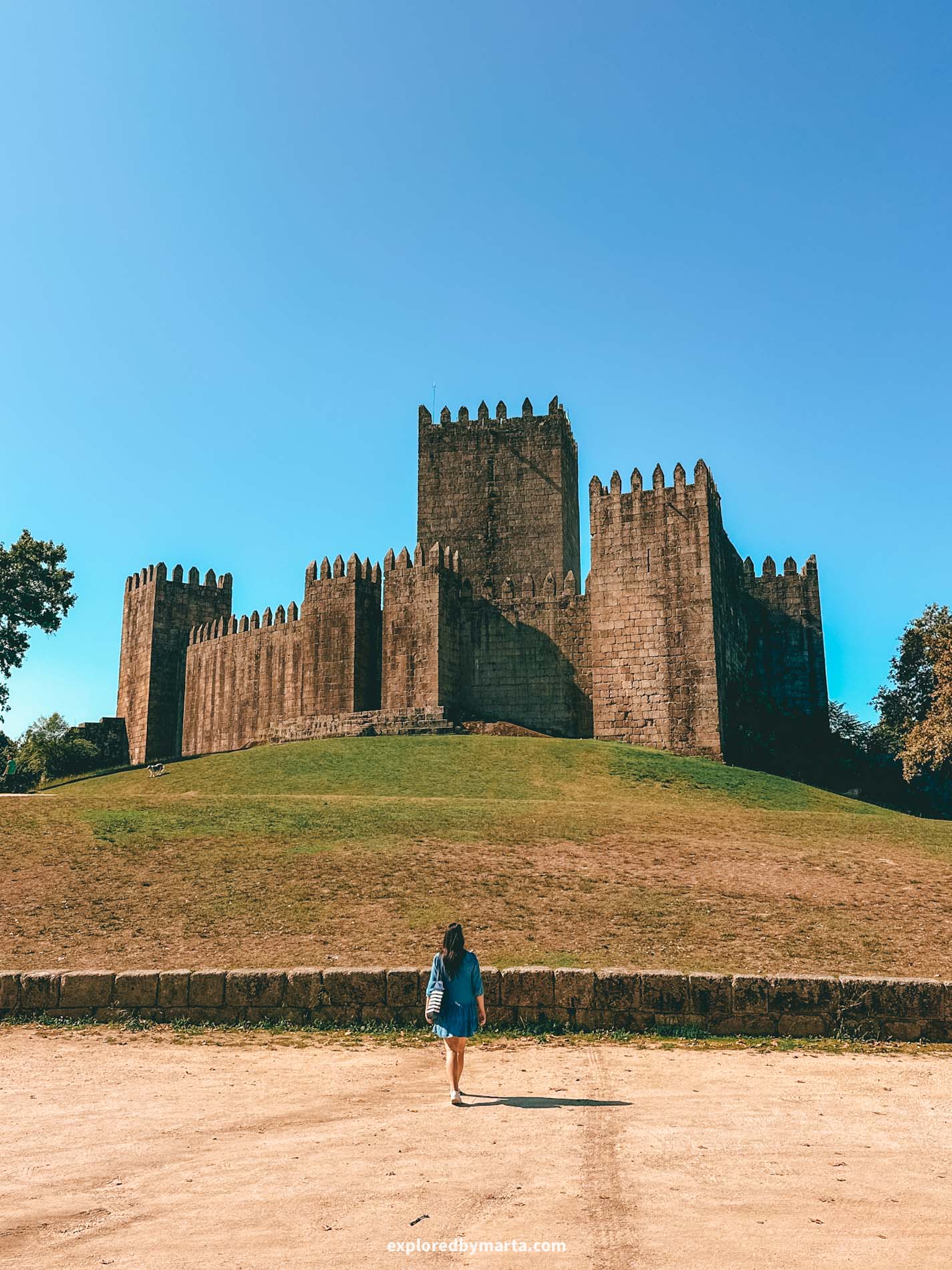
Another wonderful must-visit city in Northern Portugal is Guimarães. It actually might be one of my favorite cities in Portugal. I absolutely loved its medieval charm, cobblestone streets, palaces, castles, and medieval cathedral!
If you love medieval vibes, this will be one of your favorite day trips from Porto!
It’s very easy to get to Guimarães from Porto. The city is only about an hour away by train, with regular departures from São Bento or Campanhã train stations. You’ll arrive right in the center of Guimarães, just a short walk from most of the main attractions.
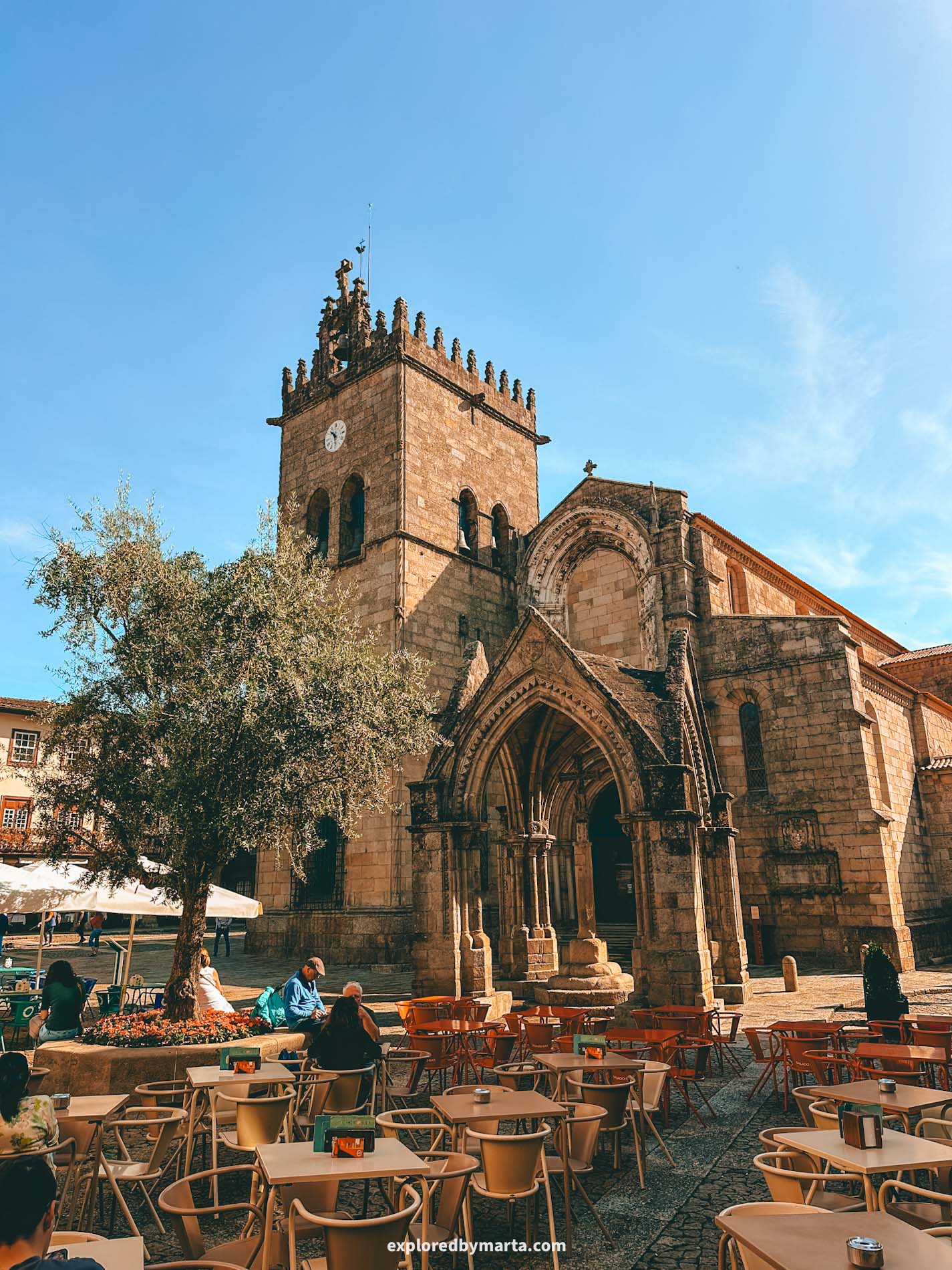
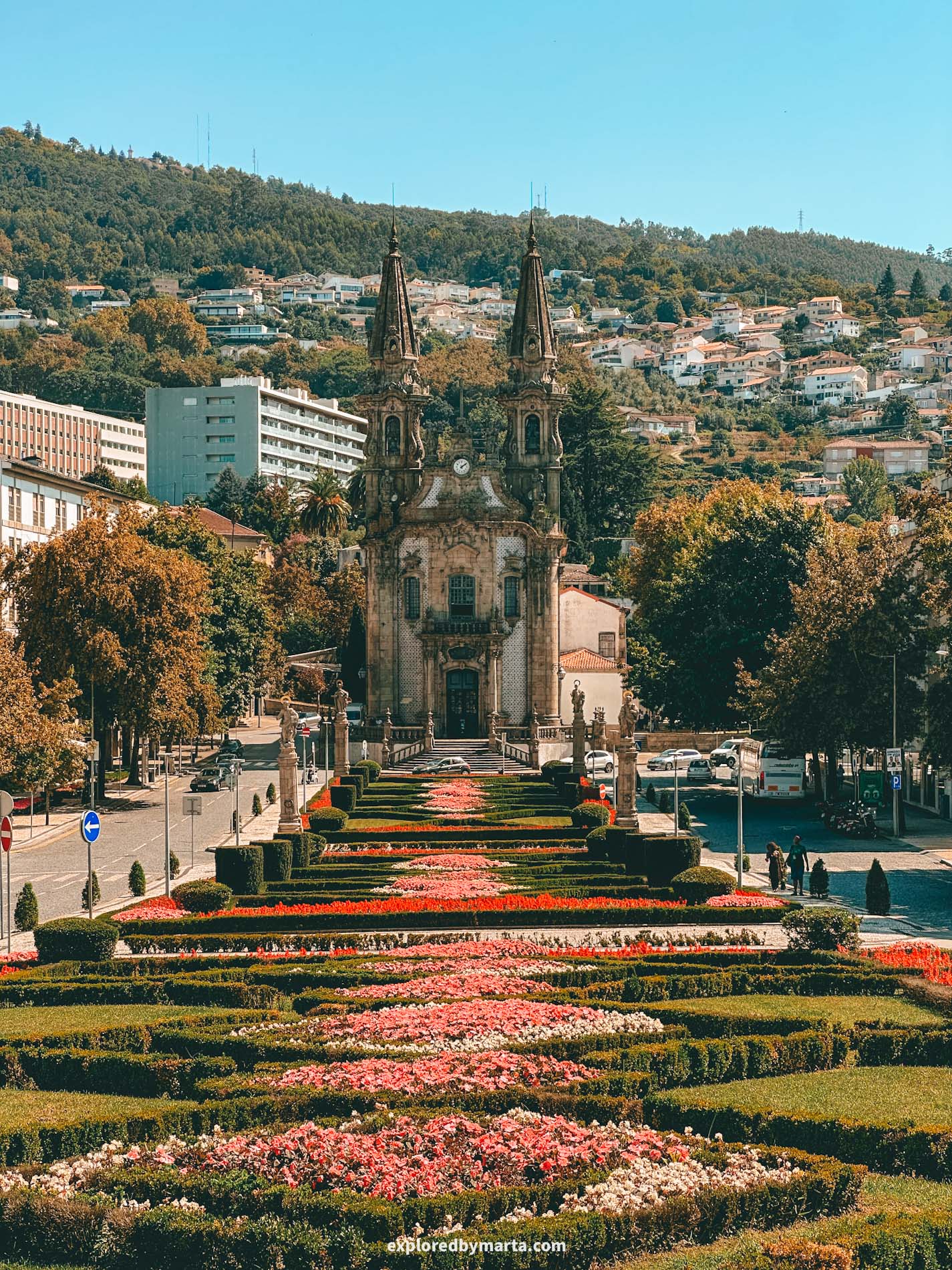
So why visit Guimarães?
Guimarães is one of the most historically important cities in the country – it is often called the birthplace of Portugal! The old town of Guimarães is a UNESCO World Heritage Site, filled with cobblestone streets, medieval squares, and beautiful architecture.
The city’s main attractions include the Guimarães Castle, where the first king of Portugal was raised, and the Palace of the Dukes of Bragança, a magnificent medieval residence built in the first half of the 15th century for Afonso, 1st Duke of Bragança (one of the king’s sons).
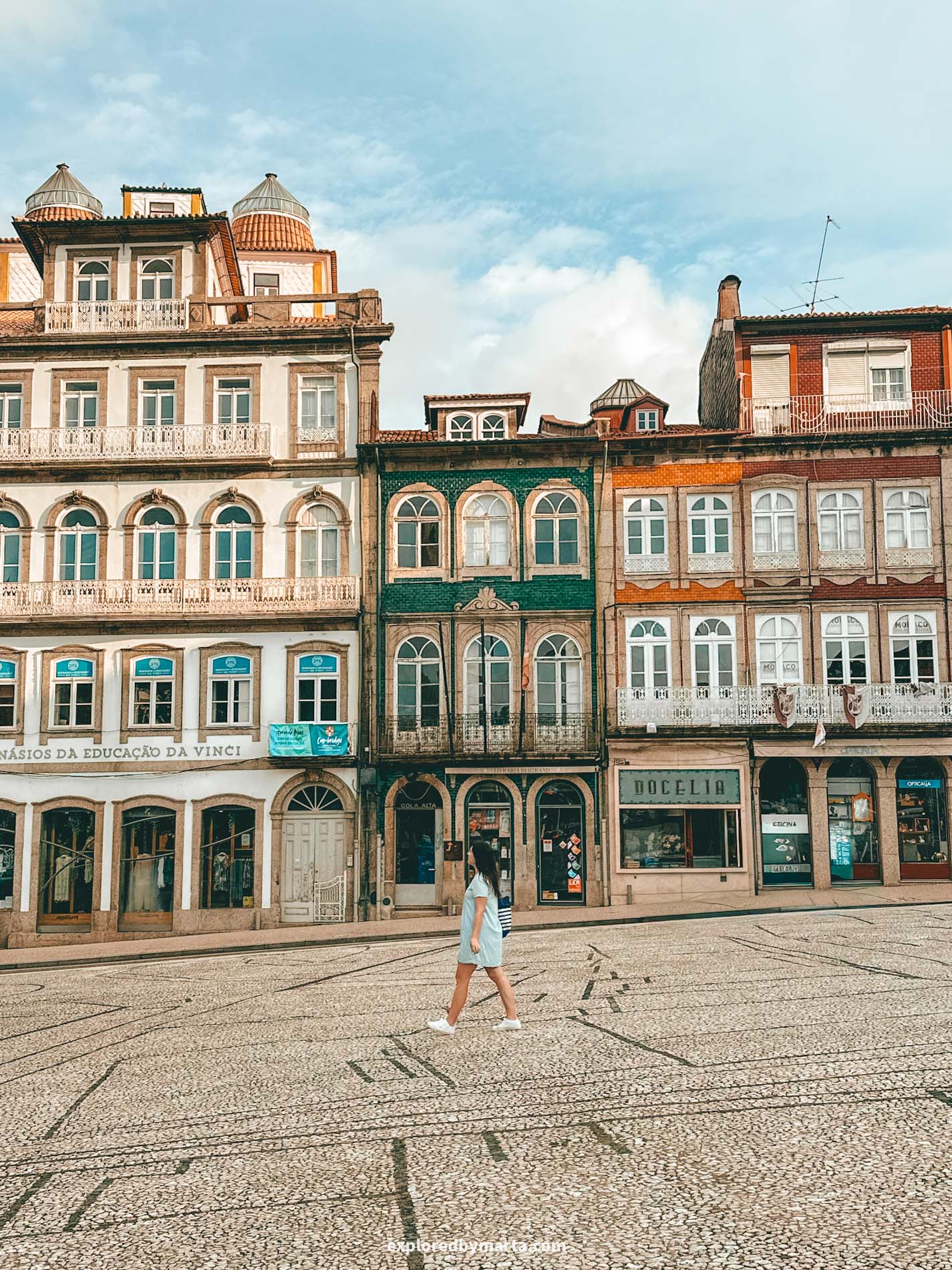
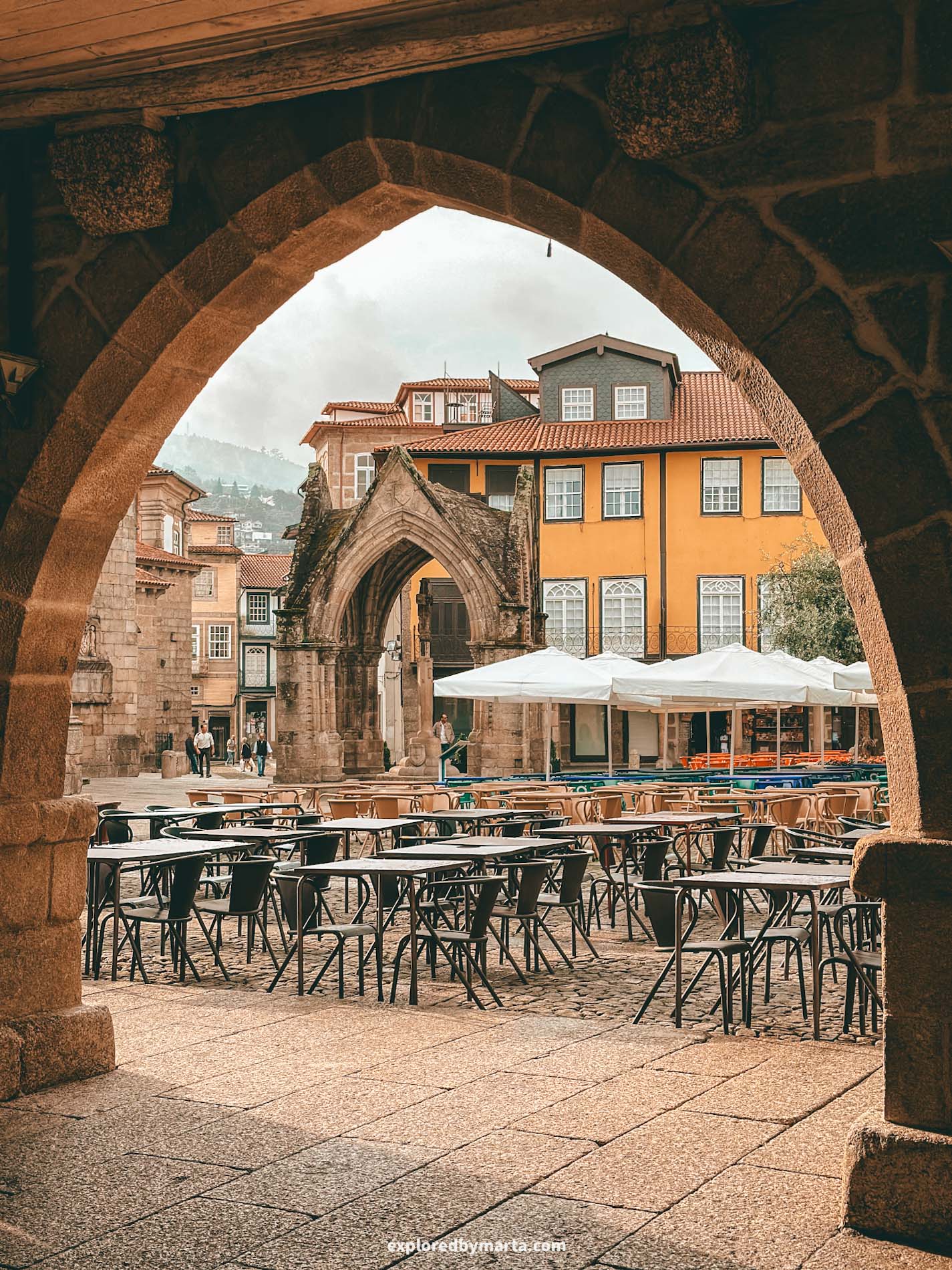
Other top things to do in Guimarães include walking the top of the medieval city walls, strolling through Largo da Oliveira, one of the prettiest squares in Portugal, visiting the Igreja de Nossa Senhora da Oliveira, and admiring the city view from Penha Mountain.
And don’t forget to drink a glass of Vinho Verde (local wine from this region) in one of the city’s charming squares!
We spent over a week in the beautiful Guimarães, and it truly lived up to the hype! We stayed in the old town, which only made it all even better. I hope you get to visit this charming place where Portugal was born all those centuries ago!
Location: Guimarães
4. Braga, home to the famous Bom Jesus do Monte
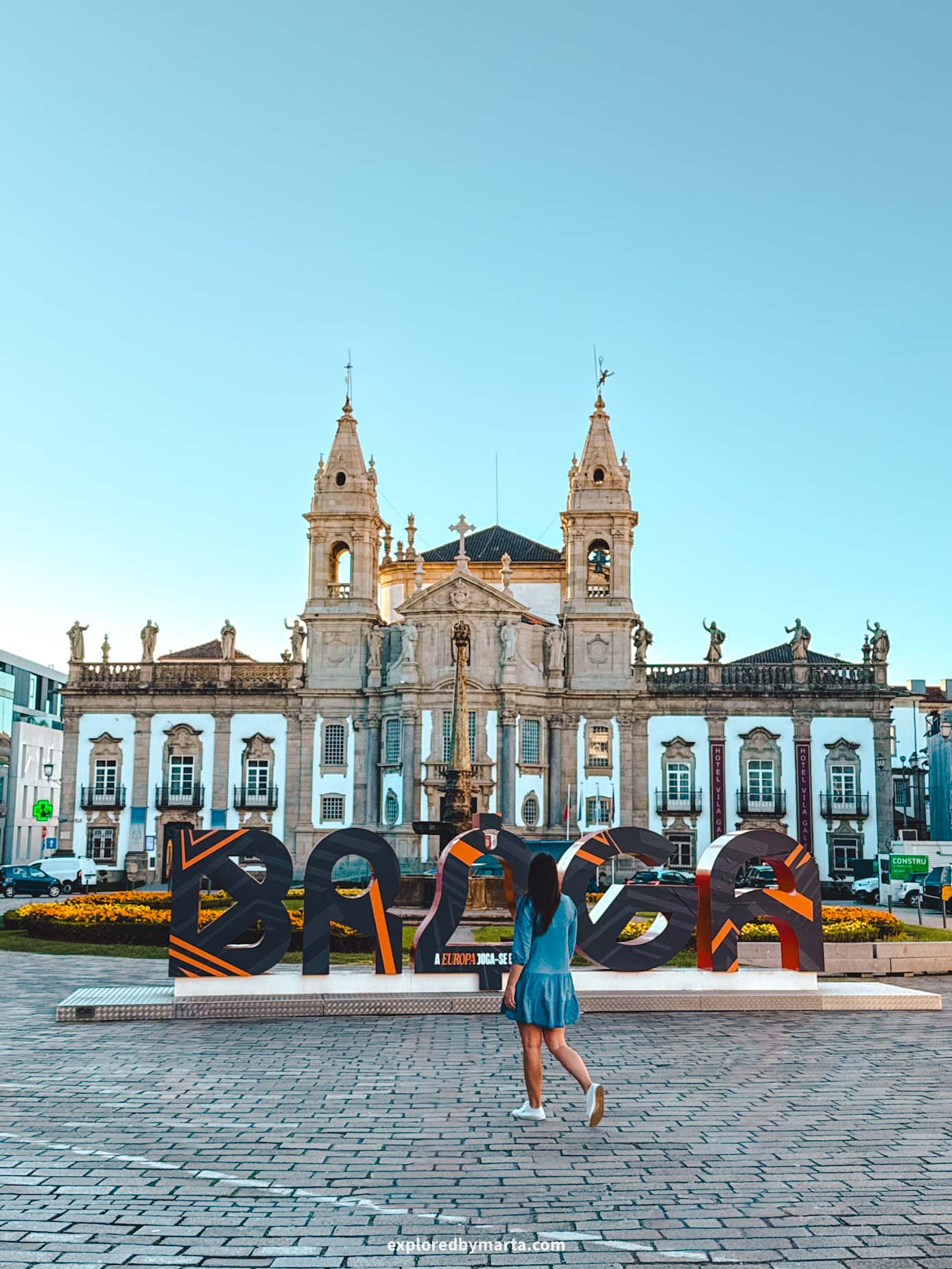
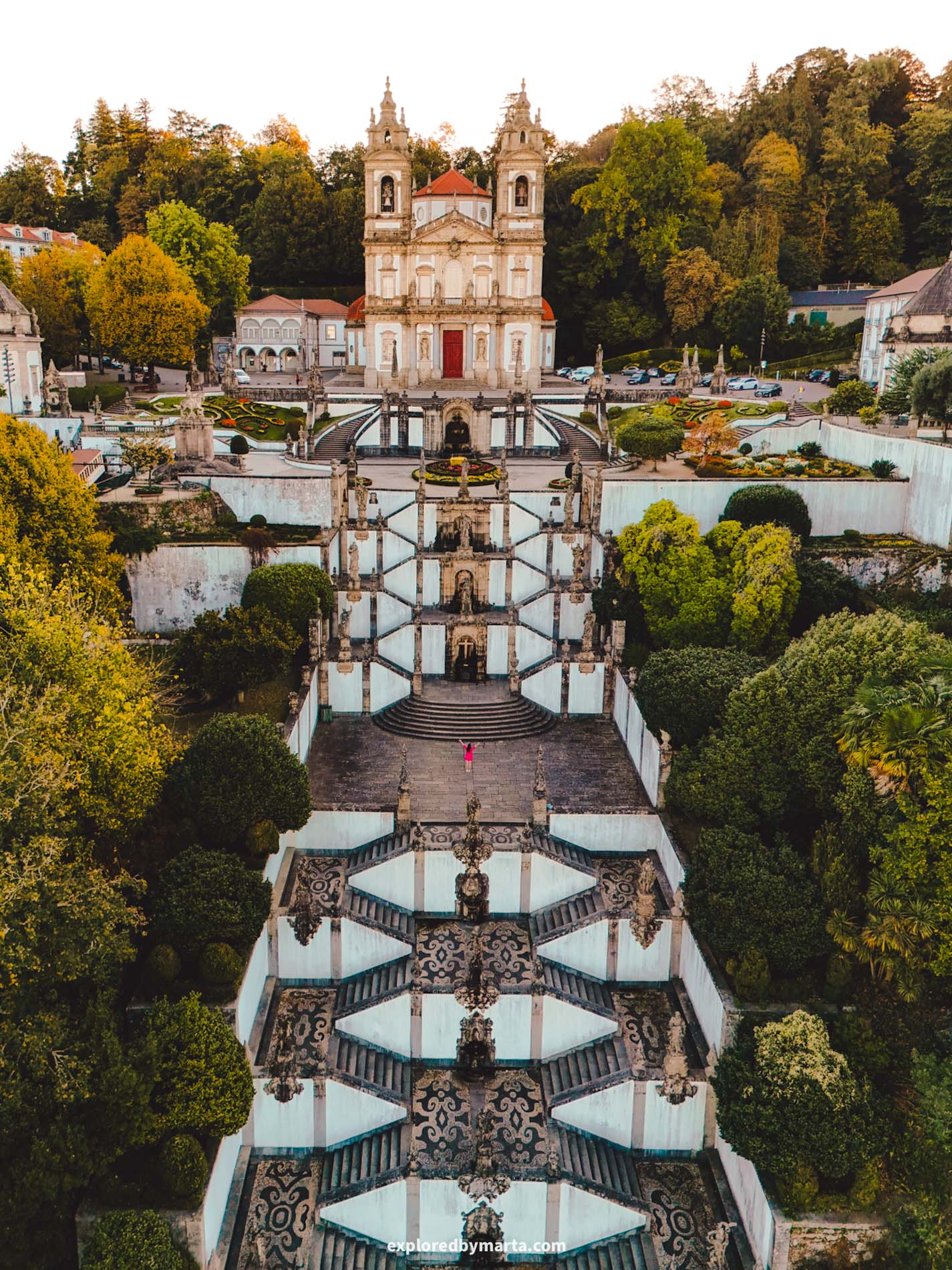
Braga is one of the oldest and most iconic cities in Portugal, often called the ‘Rome of Portugal’, because of its many churches and deep religious history.
Located just an hour away from Porto, Braga is the perfect destination for a day trip from Porto.
We visited Braga during our road trip through Northern Portugal and ended up staying for over a week because there was simply so much to see and do!
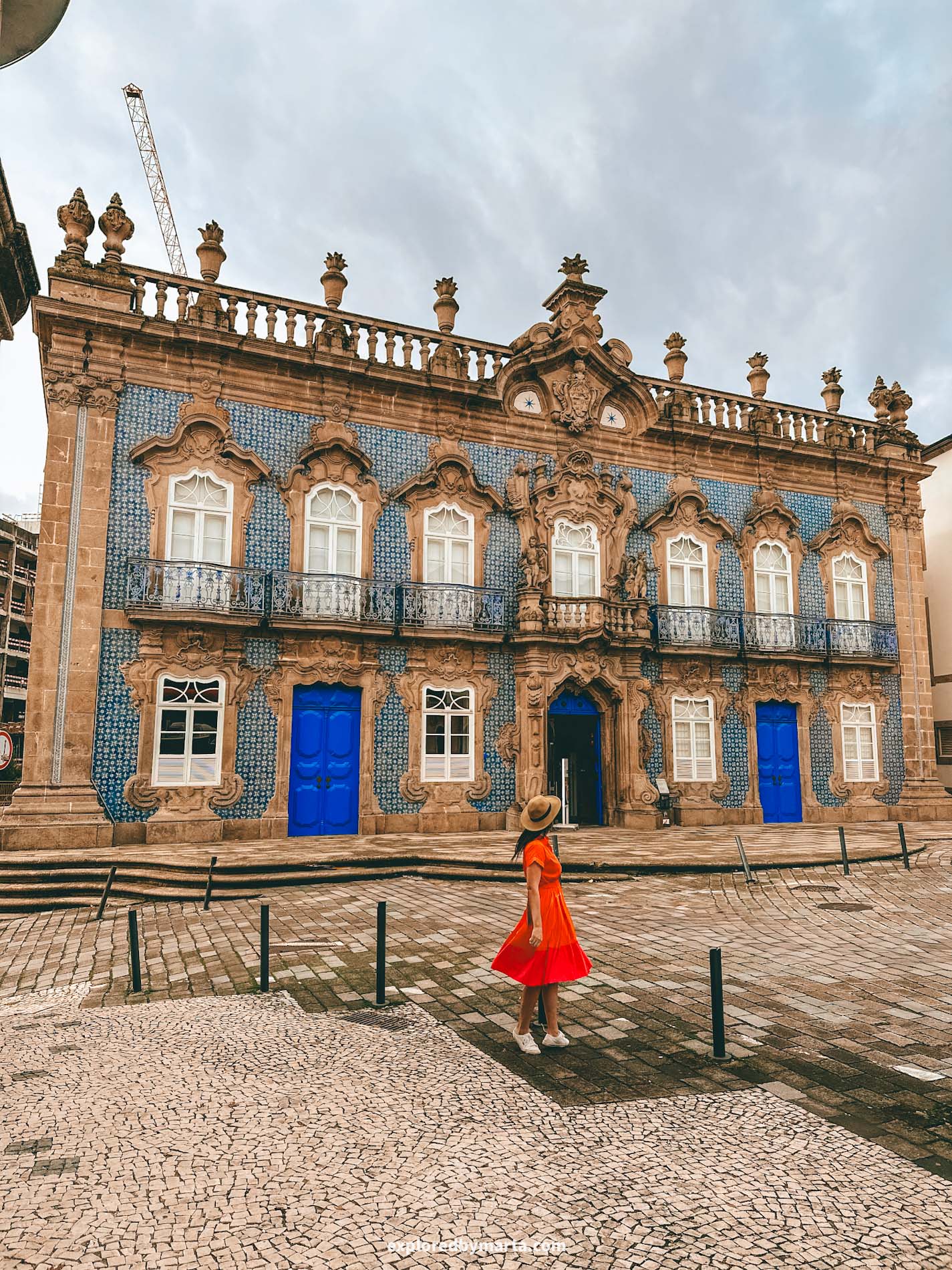

Probably the most famous landmark in Braga (and one of the most famous ones in Portugal) is the Bom Jesus do Monte Sanctuary, a UNESCO World Heritage Site and one of the most popular pilgrimage sites in Portugal.
The sanctuary on a hill is known for its iconic baroque staircase, which is lined with fountains and statues, and offers stunning views over the beautiful city. It’s a must-visit place in Braga and in Northern Portugal.
If you only visit one place in Braga, this has to be the one!

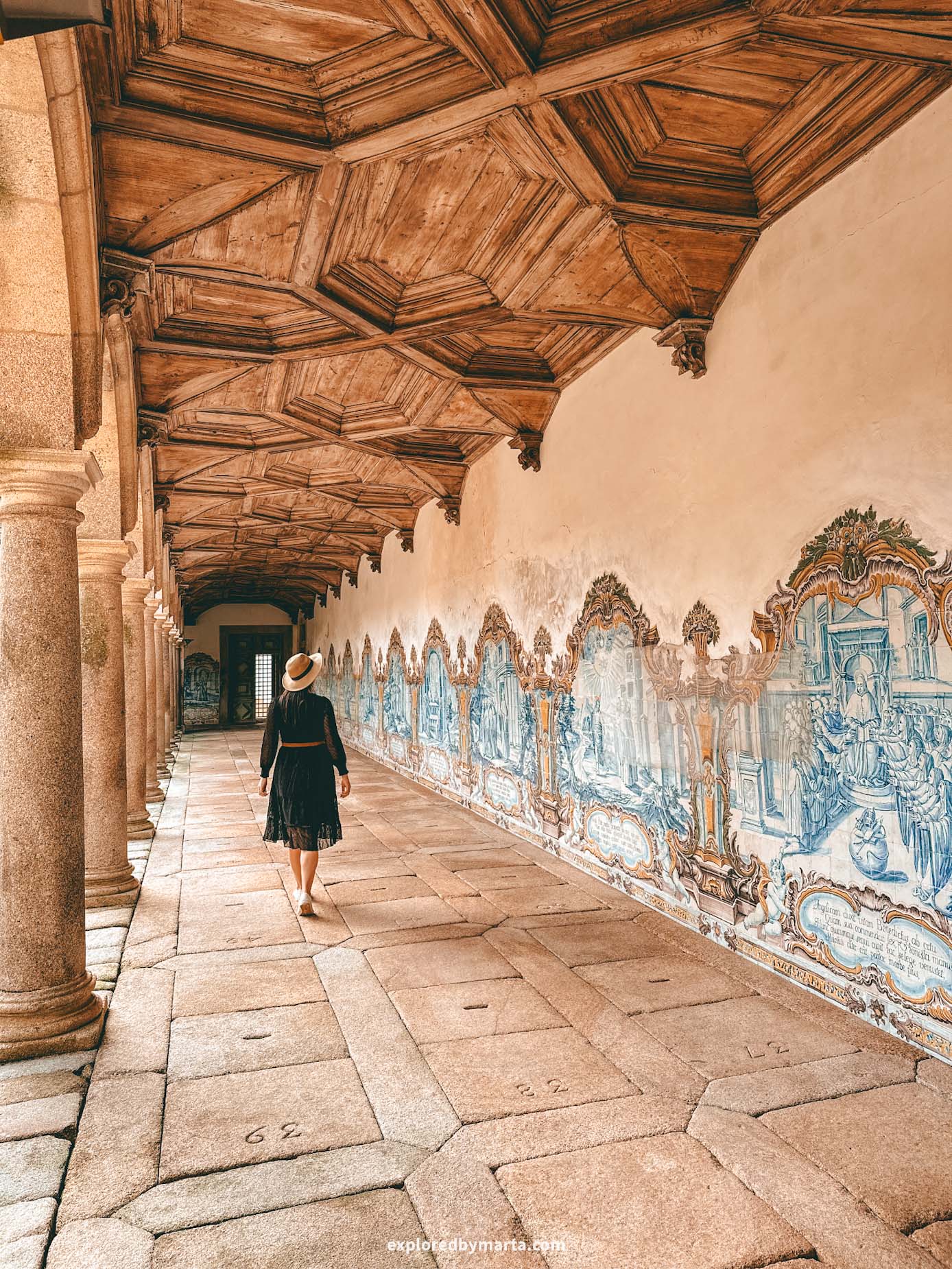
But there’s a lot to see back in the historic center. You also shouldn’t miss the Sé de Braga, the oldest cathedral in Portugal, which dates back to the 11th century.
It is all you expect from a medieval cathedral – moody, dark, and dramatic.
But next to Braga’s main square, Praça da República, you will find the Jardim da Avenida Central, a stunning avenue full of flowerbeds.


Braga is also home to the Arco da Porta Nova, one of the city’s most photographed landmarks, and the beautiful Jardim de Santa Bárbara garden. Strolling through Braga’s many city gardens was one of my favorite things we did in Braga. If you can, spend at least a full day here!
The city holds a couple of more historical landmarks, like the Biscainhos Museum, Monastery of São Martinho de Tibães, and Palácio do Raio – each place carries its own historical charm.
And did you know Bom Jesus do Monte is not the only mountaintop sanctuary in Braga? Yes, check out the Sanctuary of Our Lady of Sameiro (photo above). We watched one of the most beautiful sunsets from that hilltop!
Location: Bom Jesus do Monte
5. Peneda-Gerês National Park


Peneda-Gerês National Park is hands down one of the best places to visit in Northern Portugal. It’s actually the only national park in the whole country, so if you love wild nature, you should definitely consider planning a day trip from Porto to Peneda-Gerês!
The national park is vast. If you love nature, this is the perfect place to go to slow down, disconnect, and enjoy the outdoors. The perfect contrast to the buzzing cities in Northern Portugal.
One of the best ways to experience Peneda-Gerês is to go on a road trip and explore its many panoramic viewpoints along the way. Some of my favorites include Miradouro de Fafião, Miradouro da Pedra Bela, Miradouro das Rocas, and Miradouro Voltas de São Bento.
There are also countless hiking trails throughout the park, from easy scenic walks to longer, more adventurous routes. Some of the most popular ones are the Seven Lagoons Trail, Calcedónia Trail, and Trilho dos Miradouros Trail.
Peneda-Gerês National Park also features some amazing waterfalls. The most beautiful ones are Cascata do Arado, Cascatas de Fecha de Barjas, Cascata de Pincães, as well as Poço Azul do Gerês, where you can even go for a swim in the rock pools.
Peneda-Gerês National Park is all about the forests, granite peaks, and waterfalls. But if you have little time, driving through the park is an experience on its own, too – the winding mountain roads, stone bridges, and scenic views are all there to see along the way!
6. Lamego, the hidden gem in Northern Portugal
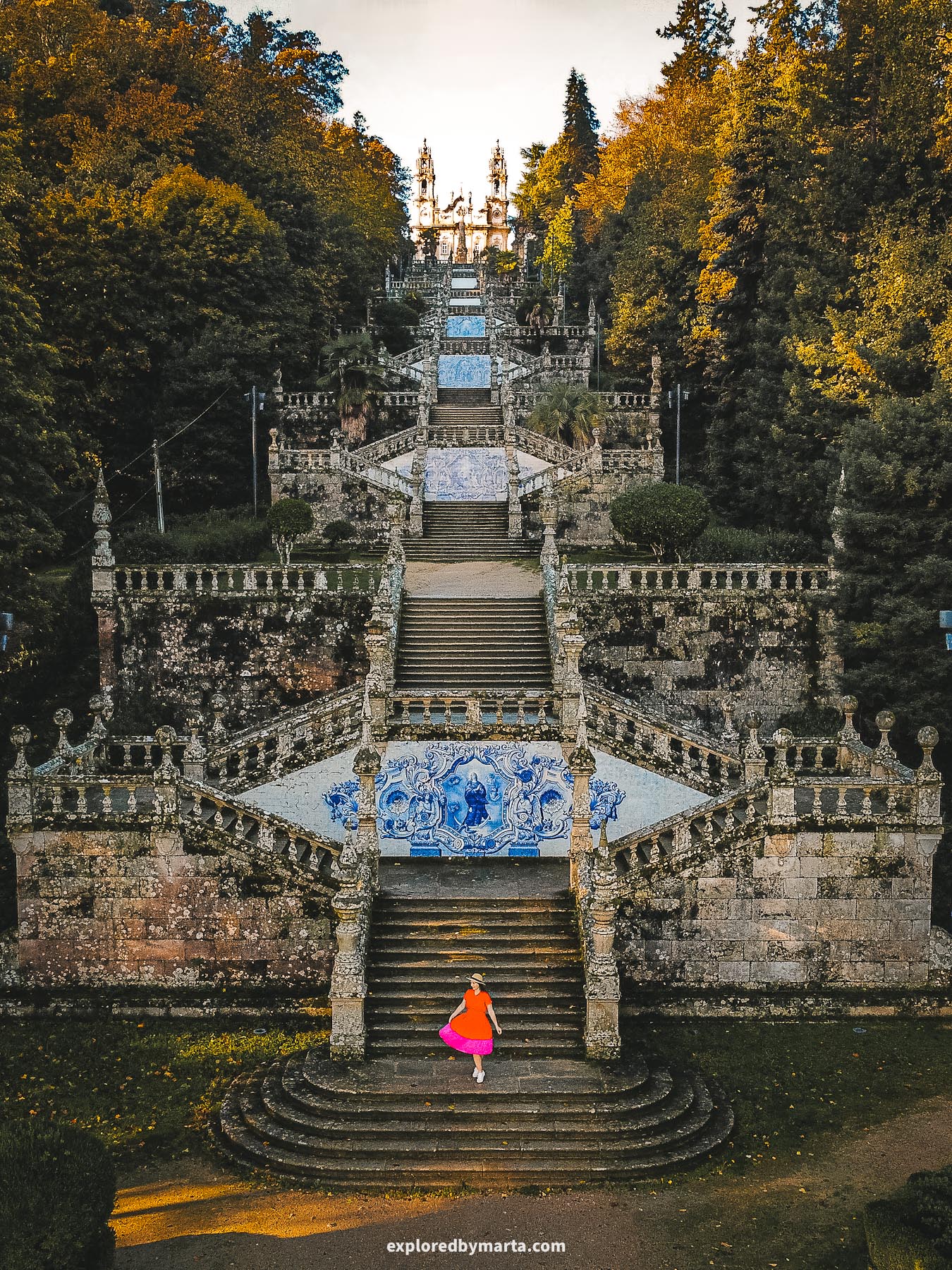
Santuário de Nossa Senhora dos Remédios, or Sanctuary of Our Lady of Remedies, located in Lamego town in Northern Portugal, was one of my favorite hidden gems we found in Portugal.
Lamego is a beautiful historic town in northern Portugal, somewhere in the heart of the Douro Valley, and it is known for its baroque architecture, religious heritage, and, of course, the production of wines.
But it is this fabulous sanctuary that attracts the most people to Lamego. The sanctuary sits on top of Santo Estêvão Hill and was built between the 18th and 20th centuries.


The sanctuary can be accessed from the town by a long Baroque staircase of 686 steps, but you can drive up there by car as well. It is one of the best churches you can visit in Portugal!
If you are able, I highly recommend climbing the stairs. To me, it was the best part of the experience. We climbed all the way up there, explored the sanctuary, and then climbed back down.
Building sanctuaries on top of hills and then adding majestic, long staircases up to them is not uncommon in Portugal. We found a couple of similar spots around Portugal. But this iconic staircase in Lamego with statues and azulejos tiles was my favorite of them all!
Location: Santuário de Nossa Senhora dos Remédios
7. Granaries of Lindoso and Soajo
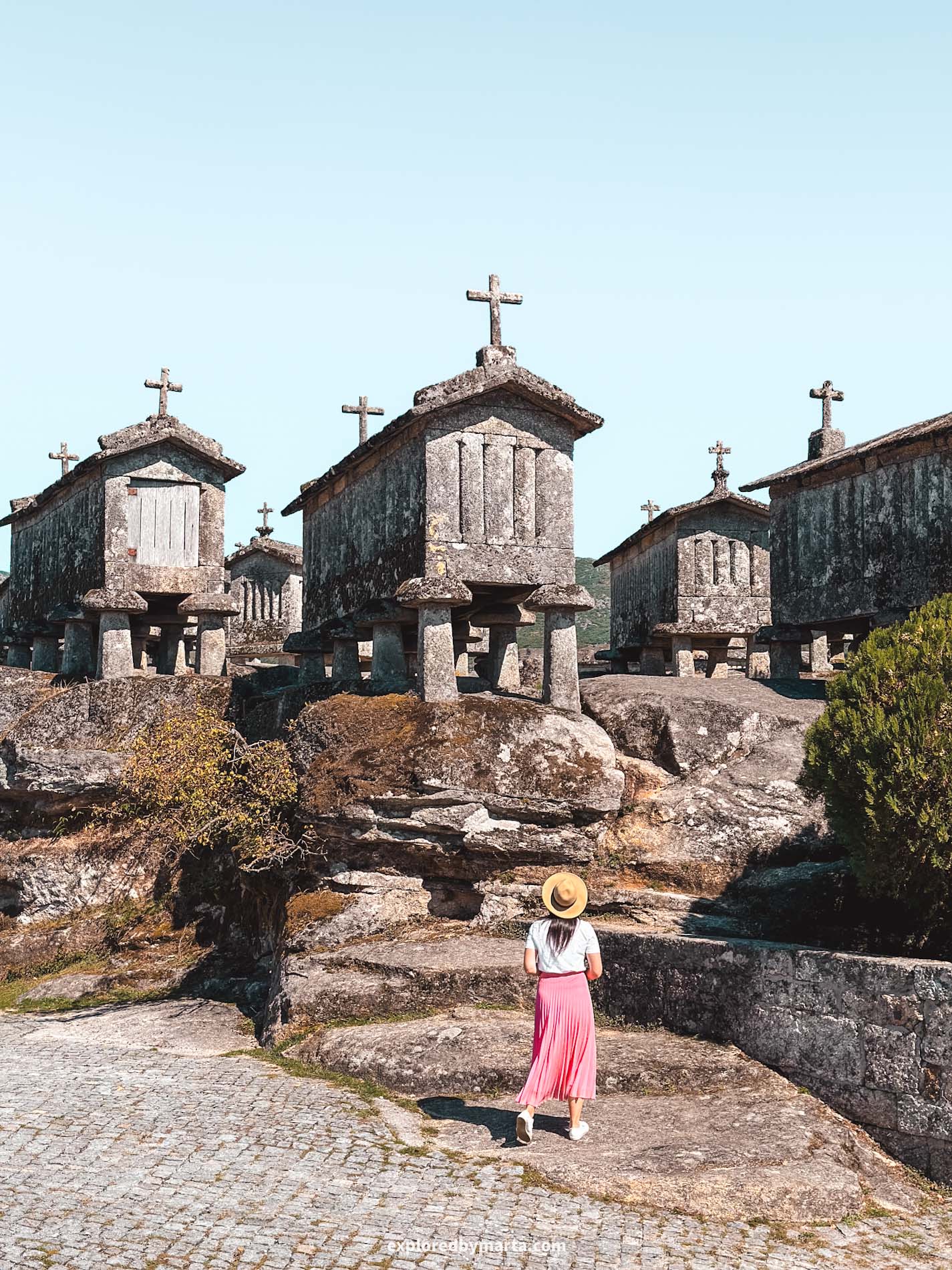
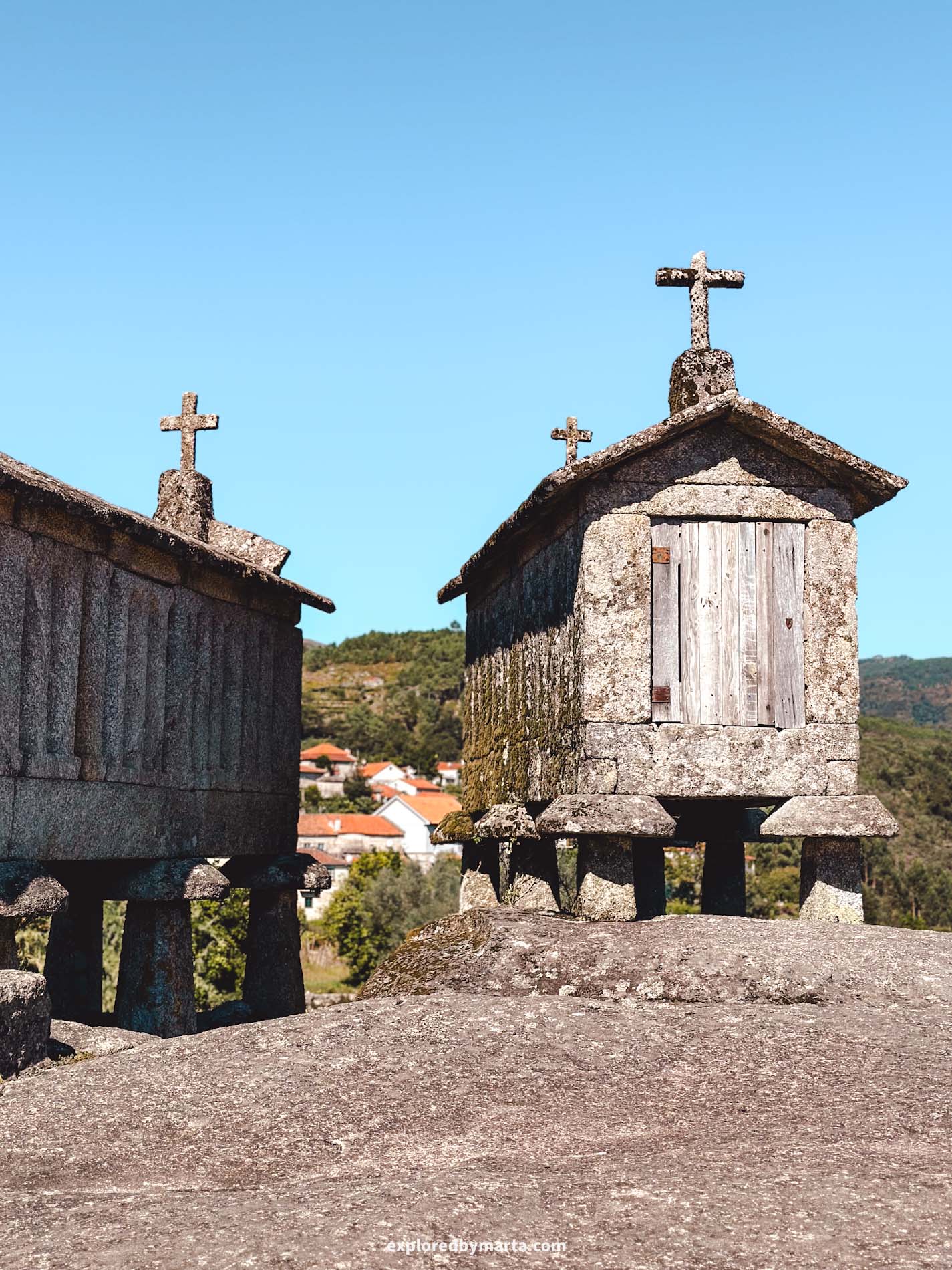
If you are going on a road trip to the Peneda-Gerês National Park and love unique places, make sure to stop by Lindoso and Soajo to check out these unique granaries!
I really didn’t know what these things were. They looked like stone tombs to me with those crosses on top, to be honest. Turns out these are grain storage units typical in Northern Portugal and Spain!
If you, too, like learning about unique places, then Soajo or Lindoso, two nearby municipalities in Northern Portugal, are great places to stop by! You can explore these granaries for free – they’re just there, out in the open!
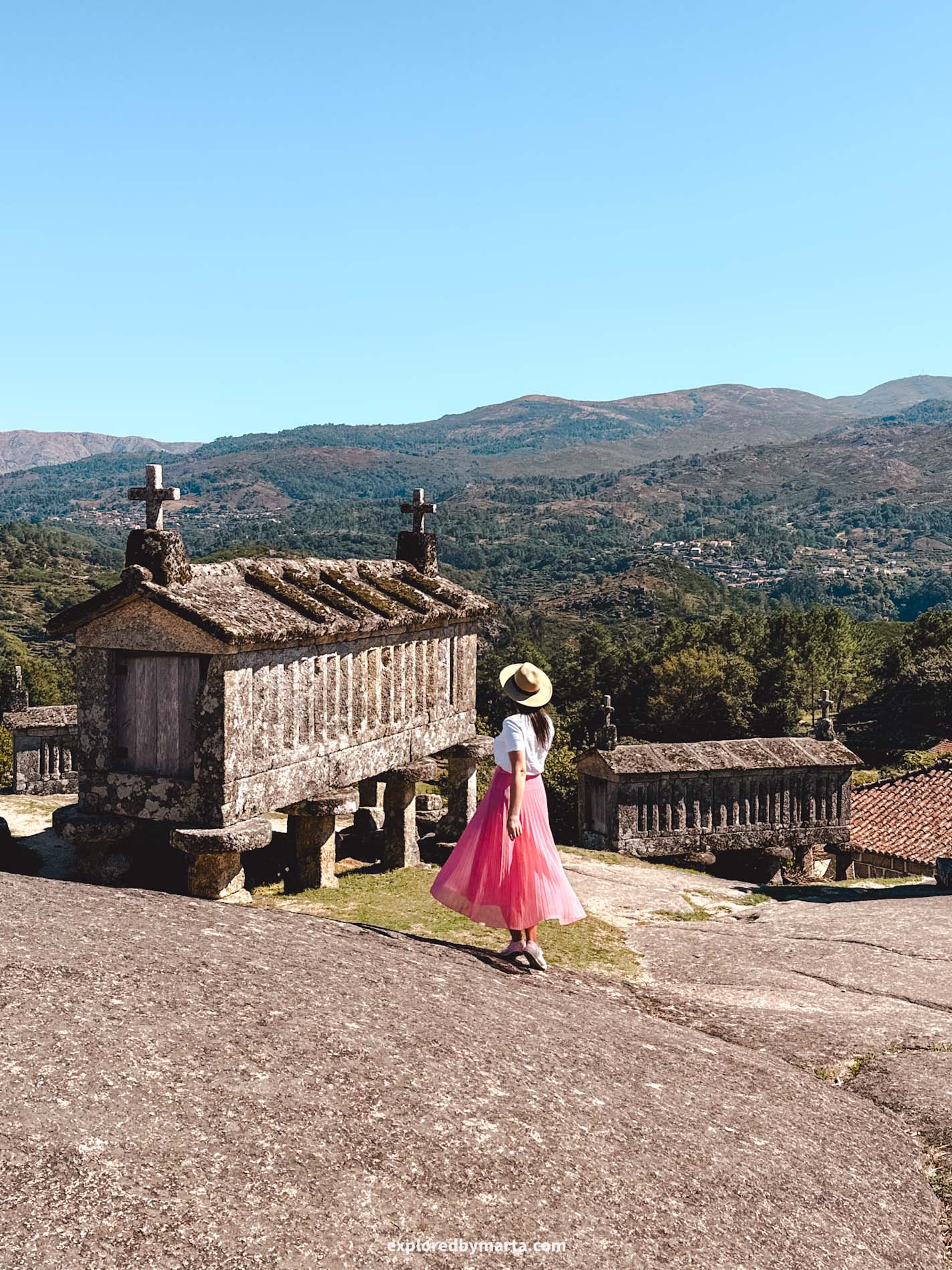
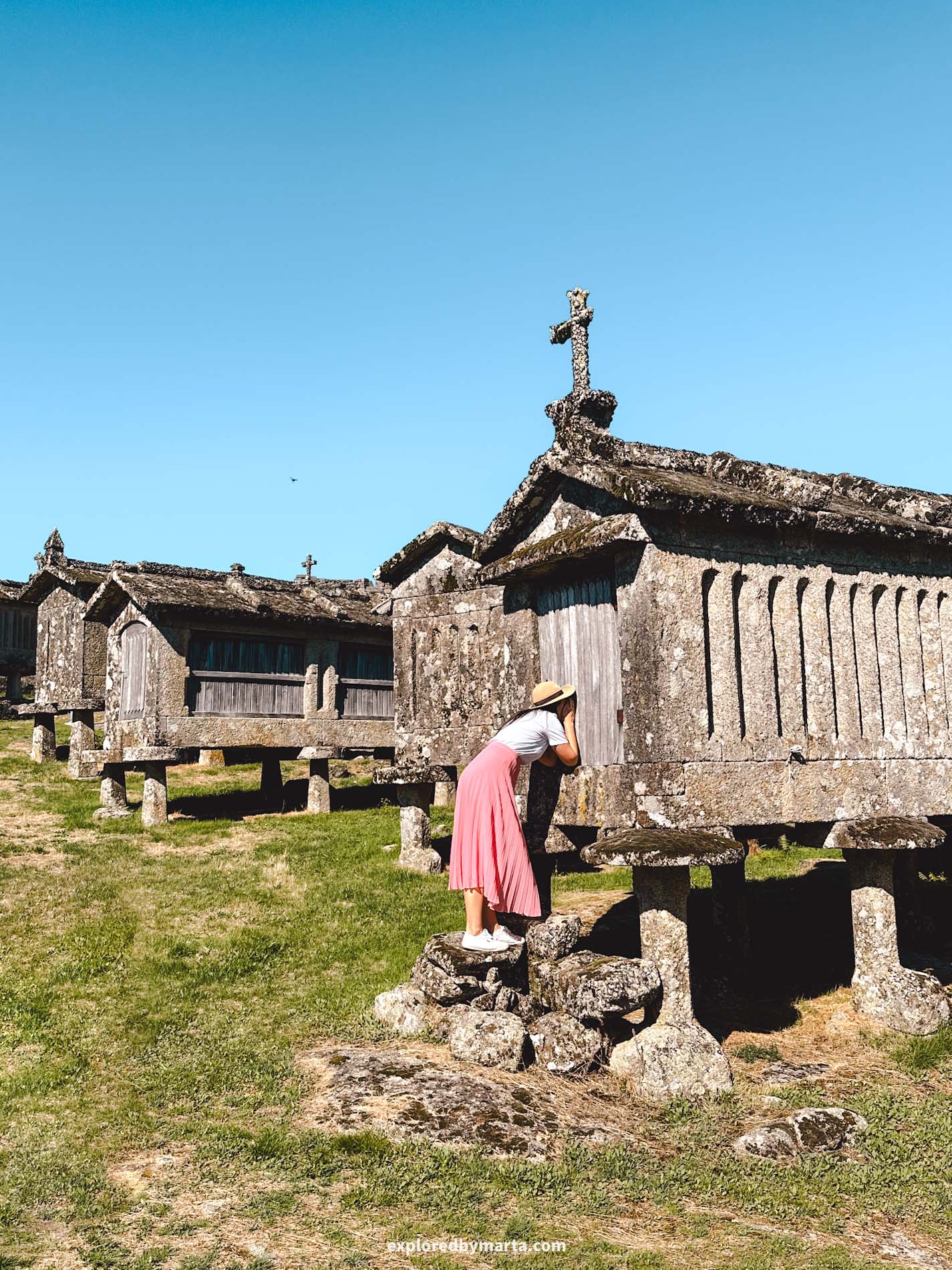
The granaries (‘Espigueiros’ in Portuguese) are built of stone and wood and placed on stone columns above ground so that the crops can ventilate and dry, and also to keep birds and rodents away from the crops.
We even saw corn inside some of them, which means that locals are still using them! Or were they placed there on purpose just to entertain tourists? I don’t think so. I saw that many of them were full of things.
I really like these kinds of places. I think this was one of the most unique places we visited in Portugal, where I actually learned something new and saw something I hadn’t seen before! To me, this is what traveling is for!
Location: Granaries of Soajo – Granaries of Lindoso
8. The iconic 516 Arouca Bridge and Paiva Walkway

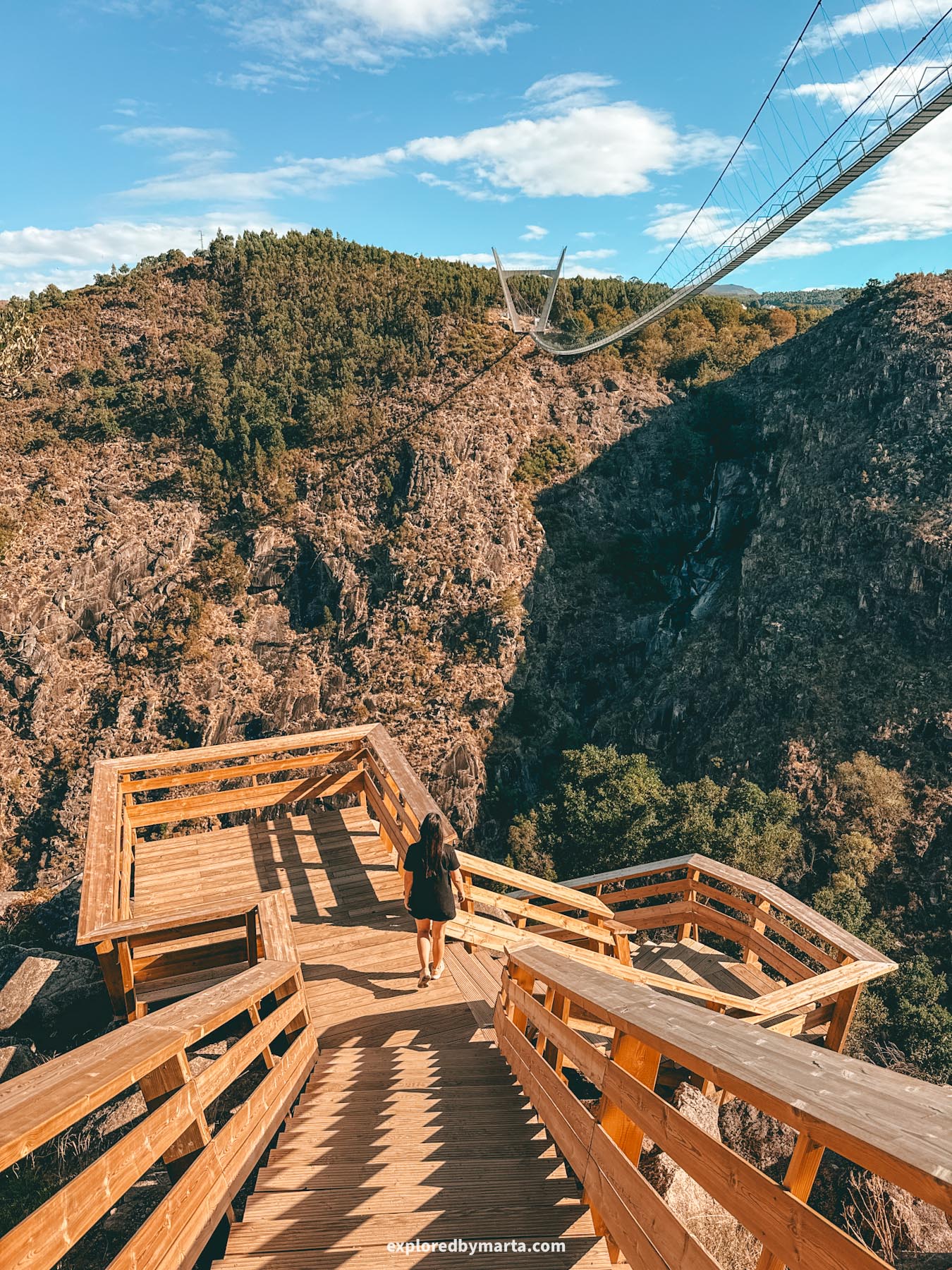
The 516 Arouca Bridge and the Paiva Walkways (Passadiços do Paiva) are two of the most exciting and picturesque places you will find in Northern Portugal.
Located near the small town of Arouca, about 1.5 hours by car from Porto, this area is a paradise for adventure lovers and anyone who enjoys hiking and nature.
The 516 Arouca Bridge is one of the longest pedestrian suspension bridges in the world. It stretches an impressive 516 meters across the gorge of the Paiva River and hangs 175 meters above the water.
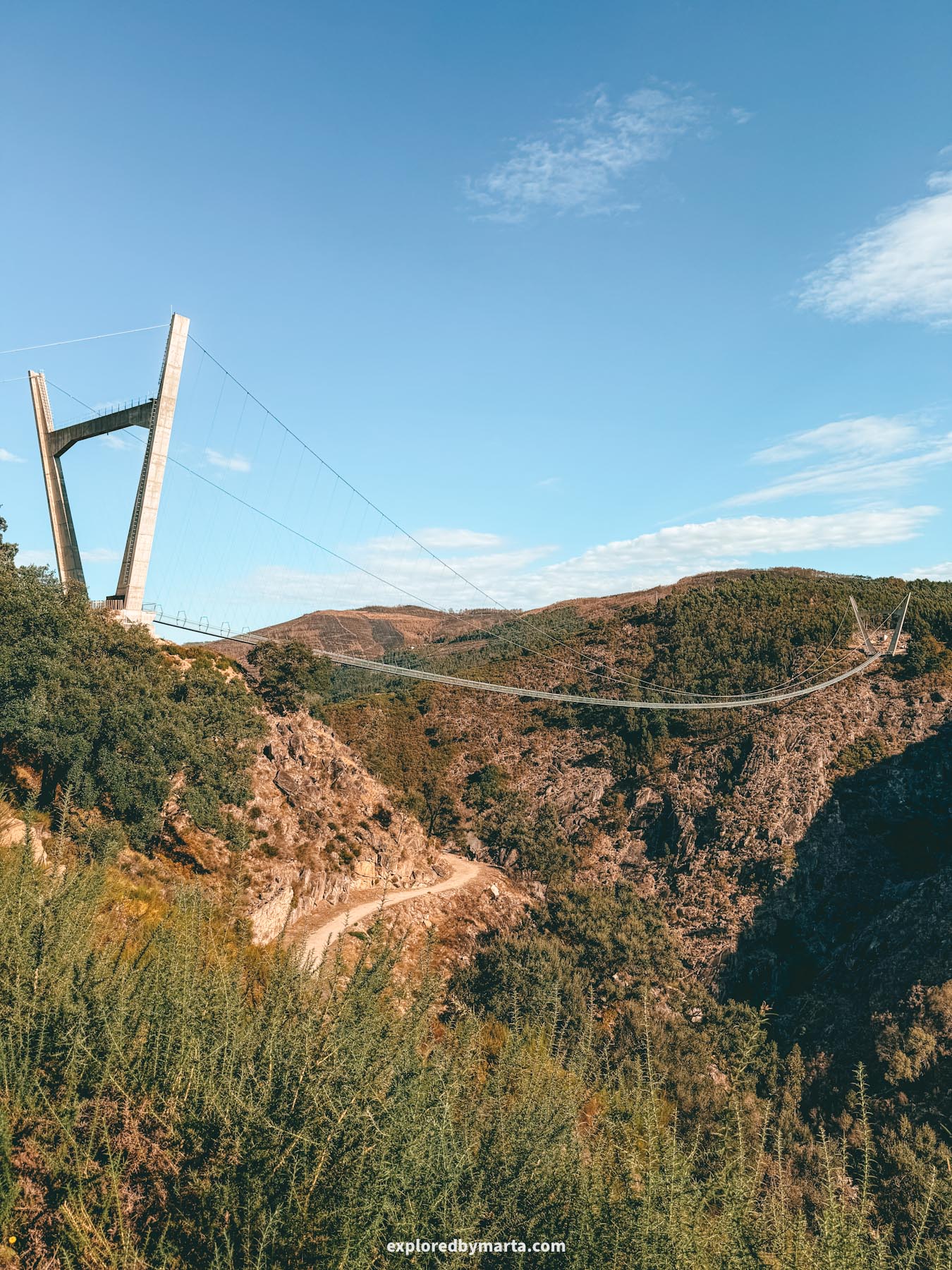

The bridge is located within the Arouca UNESCO Global Geopark, which is known for its geological and natural diversity. As you cross the bridge, you’ll also see the impressive Aguieiras Waterfall (one of the highest in the country)!
Located right by the bridge is another place made for the nature lovers – the beautiful Paiva Walkways. It’s a wooden trail that winds along the Raiva River for about 8 kilometers. They are well-maintained and offer fantastic views along the way.
Both of these attractions were built for tourism purposes, and you have to pay an entrance fee to visit both of them – either together or separately.
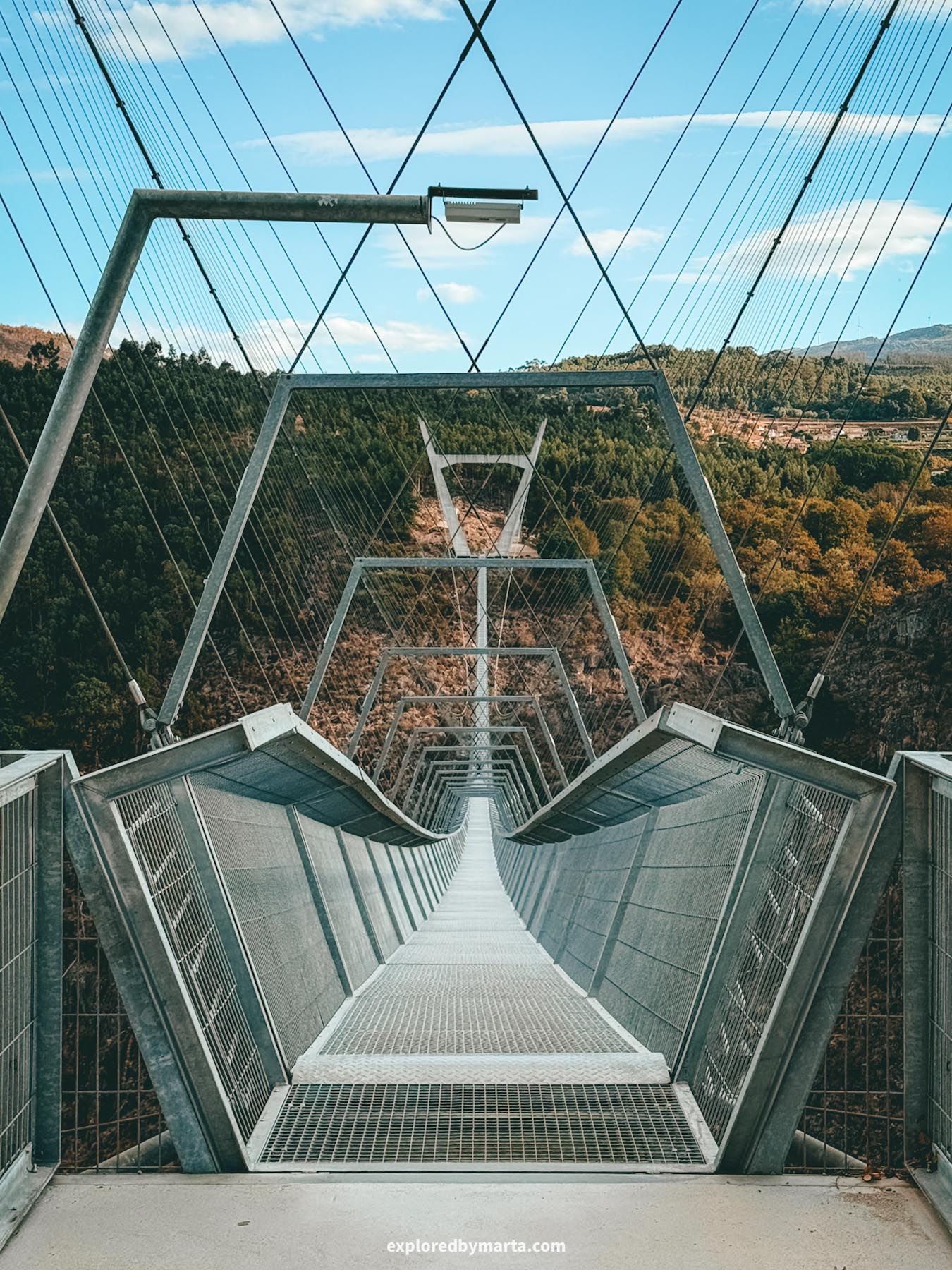
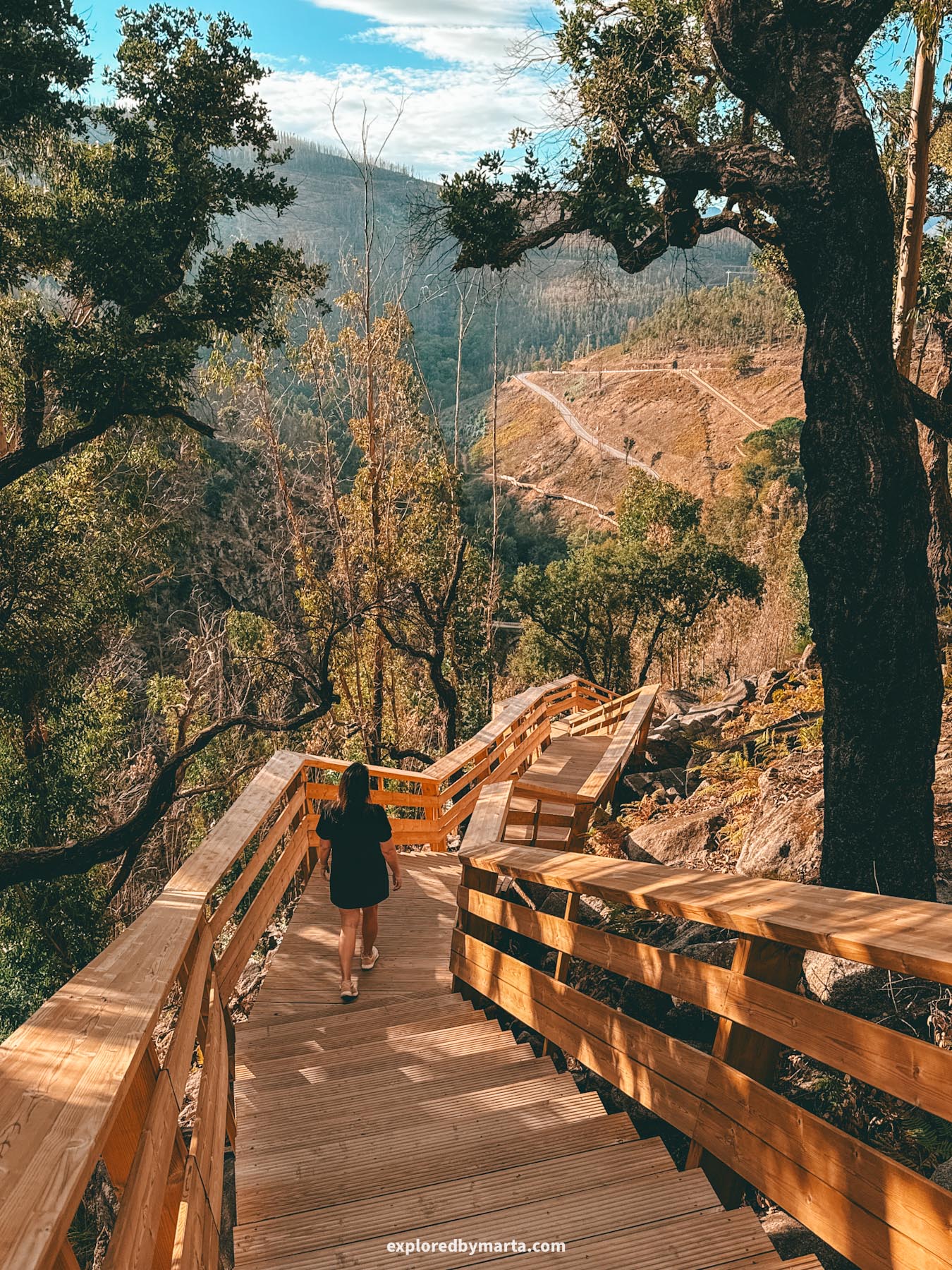
Normally, you’d buy a ticket to the bridge (which already includes the entrance to the walkways), go there at your designated time, cross the bridge there and back, and then embark on the Paiva Walkways hike.
If you don’t have time for a hike, you’d probably only do the bridge.
We allocated the whole day for this, so we arrived early in the morning for the first time slot, parked our car by the river, then walked along the river until we reached the entrance of the Arouca Bridge.
Crossing the bridge takes place in groups as a guided tour, but there’s enough time to enjoy it and take photos. The guide is there to explain everything. You’ll cross the bridge twice – there and back.
After the bridge, we headed to the wooden walkways. During our visit, part of the trail was under construction, so we only walked about 4 kilometers along the walkway there and the same way back to our car.
It is a very beautiful walk in nature! Comfortable shoes, sunscreen, and water are a must. The full trail takes around 2.5 to 3 hours to complete, depending on your pace and how often you stop for photos. It was a memorable experience for sure!
Location: 516 Arouca Bridge – Paiva Walkways
9. Viana do Castelo
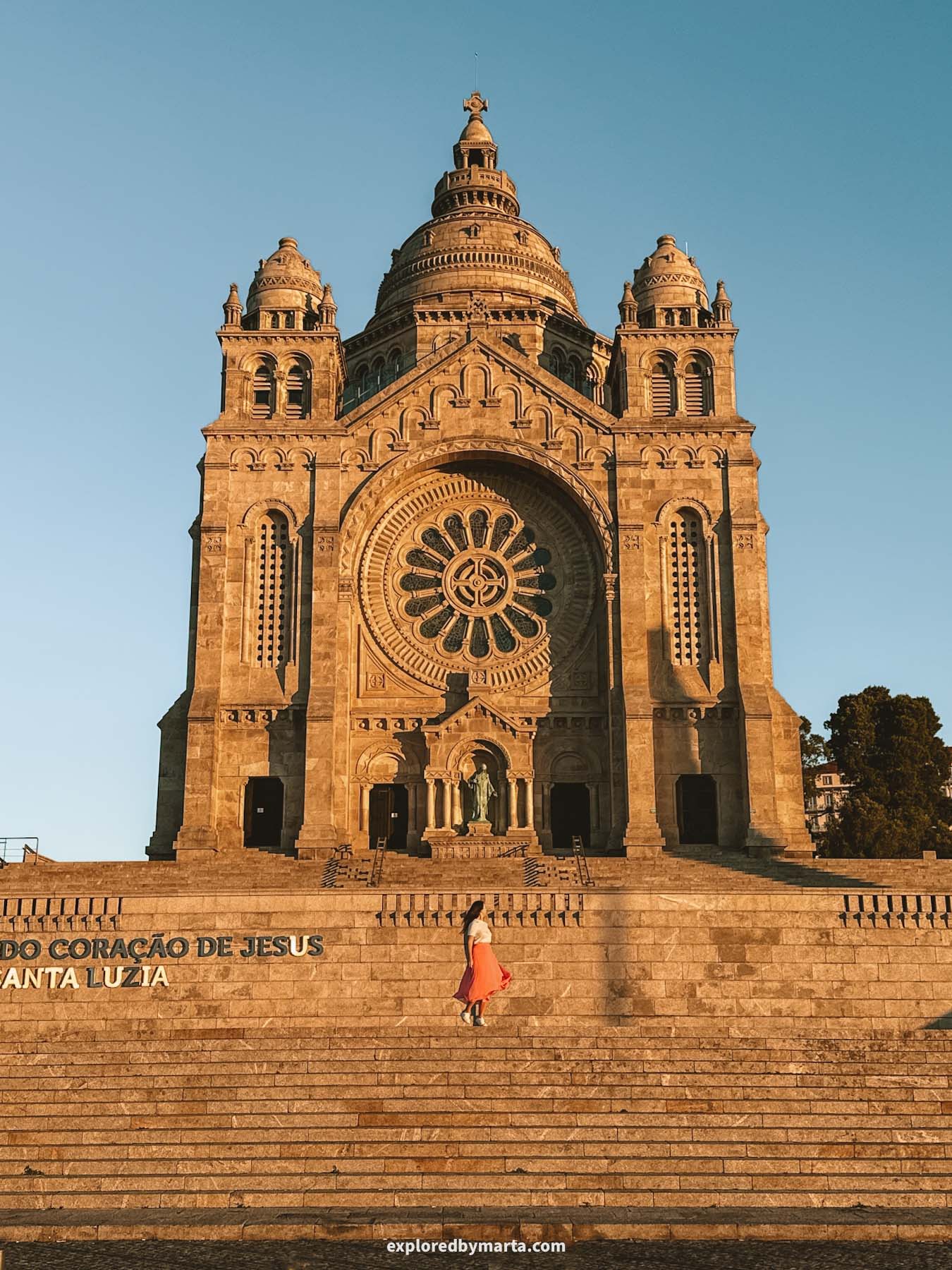
Let’s head to the North! If you love charming coastal towns with a mix of sea views, history, and authentic Portuguese culture, you’ll definitely enjoy visiting Viana do Castelo!
Located about an hour north of Porto, this picturesque town sits next to the Atlantic Ocean and the mouth of the Lima River. It’s famous for its beautiful setting, combining golden beaches with green hills, and strong medieval heritage.


One of the highlights here is the stunning Santuário de Santa Luzia, a basilica perched on top of a hill overlooking the city. You can reach it by funicular or car (or you can climb up there by stairs), and the panoramic views from up there are absolutely worth it!
We actually came to the sanctuary multiple times during our travels around Northern Portugal. The best time to come here is in the morning – you’ll get to watch sunrise in all its glory from the mountaintop!
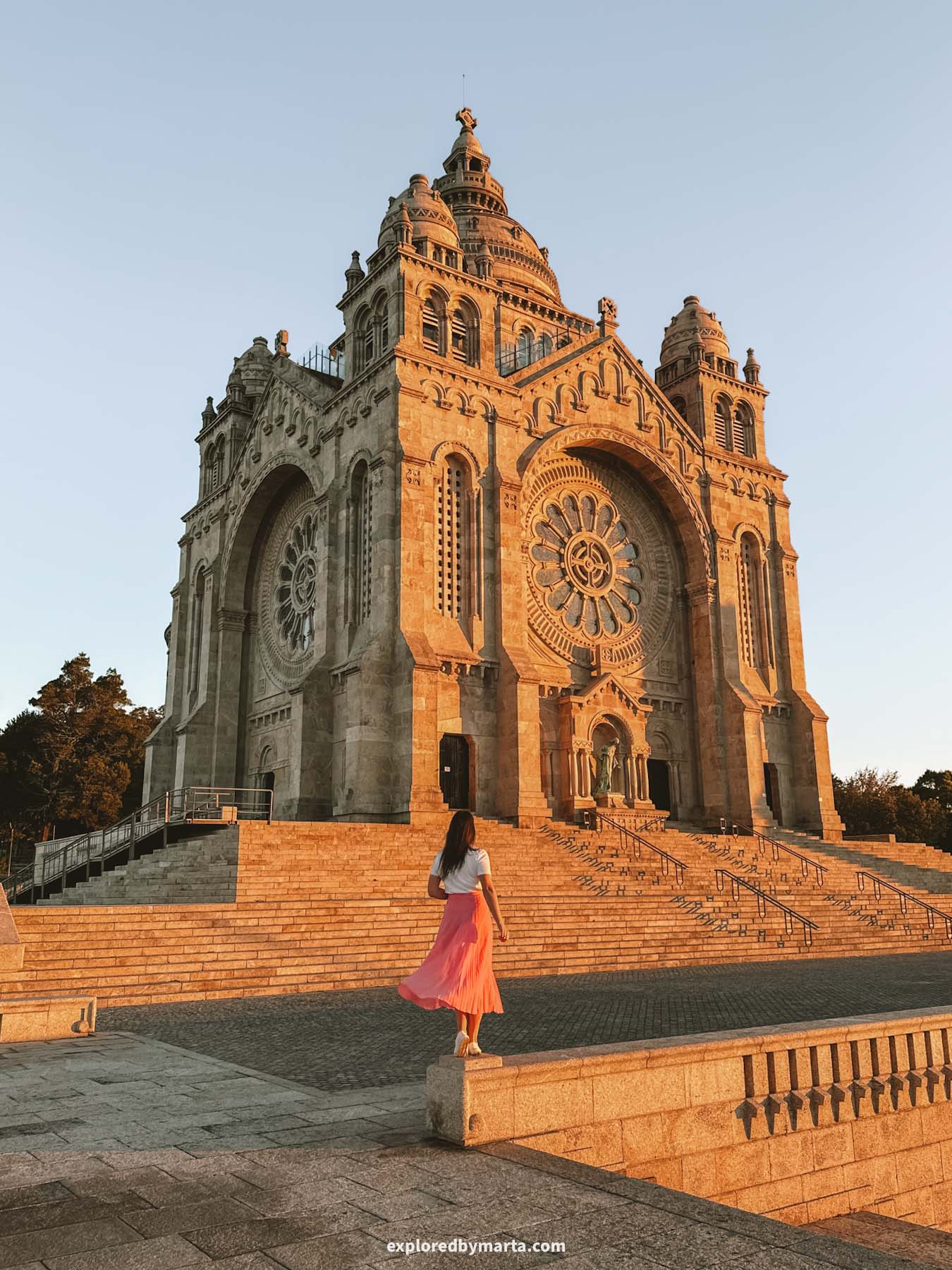

Watching the sunrise from the Mount of Santa Luzia was one of my favorite memories from our travels in Portugal! We also came back here another day to check out the interior of the beautiful sanctuary – it is truly…heavenly!?
The town itself is filled with charming streets, traditional tiled houses, and lively squares. Viana do Castelo is also known for its rich folk traditions and colorful festivals, especially the Romaria de Nossa Senhora d’Agonia, one of the most famous celebrations in Portugal.
Location: Santuário do Sagrado Coração de Jesus
10. Ponte de Lima, the oldest small town in Portugal

Just a 25-minute drive East from Viana do Castelo, you’ll find one of the most significant places in Northern Portugal!
Welcome to Ponte de Lima, one of the northernmost towns in Portugal, sitting just a short drive from the border with Spain. But more importantly, Ponte de Lima is considered the oldest town in Portugal.
Although many towns and settlements existed back in the 12th century, it was Ponte de Lima that received the first town charter. This charming medieval town got its name from the stone bridge that stretches over the Lima River.
Its name translates as exactly that, the Lima River Bridge.
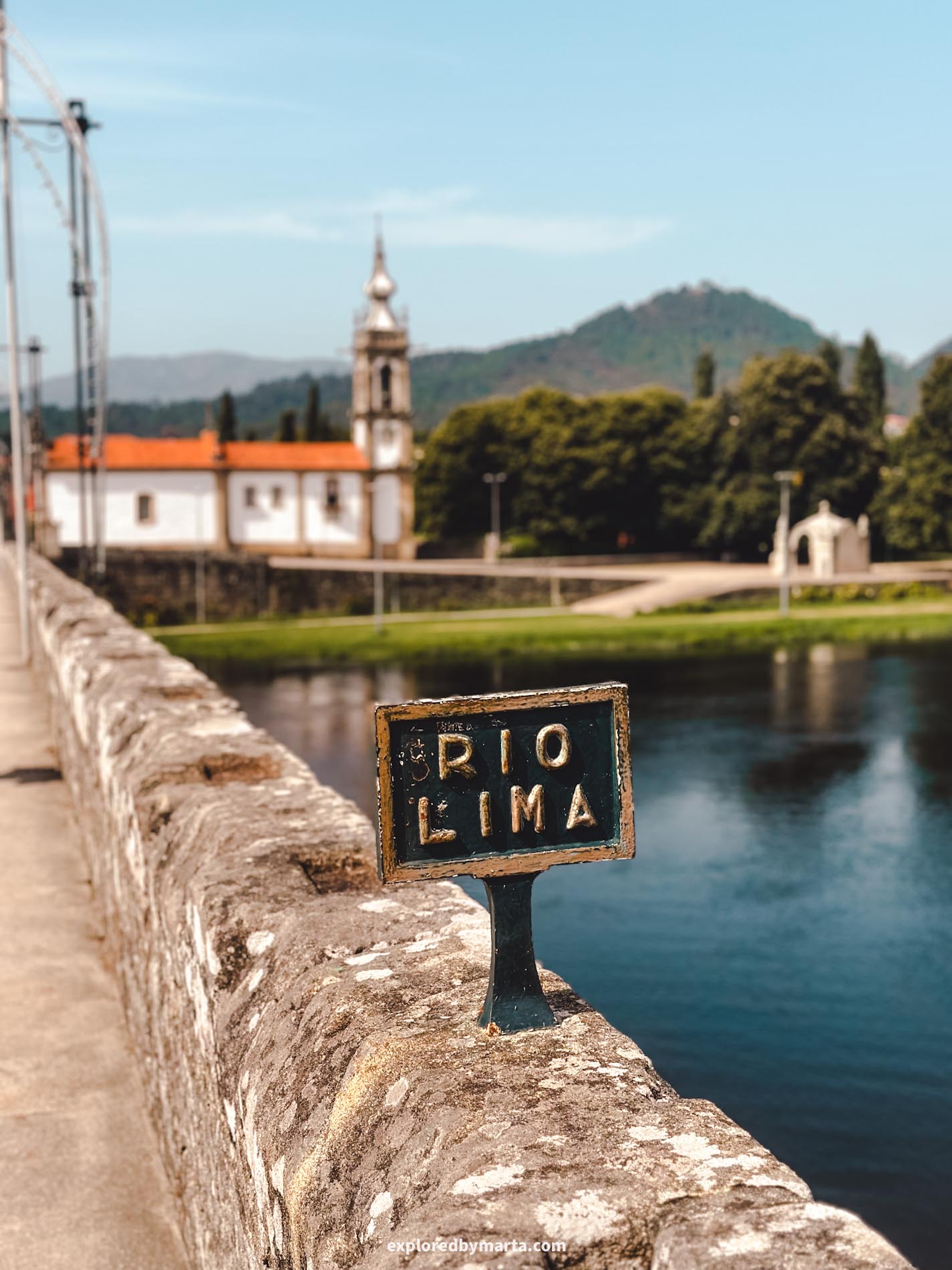

We came here on a sunny afternoon in the early days of October. We much appreciated the large parking lot they have next to the river.
Ponte de Lima only has about 2800 inhabitants and is rather quiet, unless you come here during a September festival or one of the market days.
We strolled around the old town, its cobbled streets, stopping by the main church, its two 14th-century defensive towers – Torre da Cadeia Velha, and Torre de São Paulo – and stopping by Largo de Camões, a riverside square filled with street cafés and a fountain.
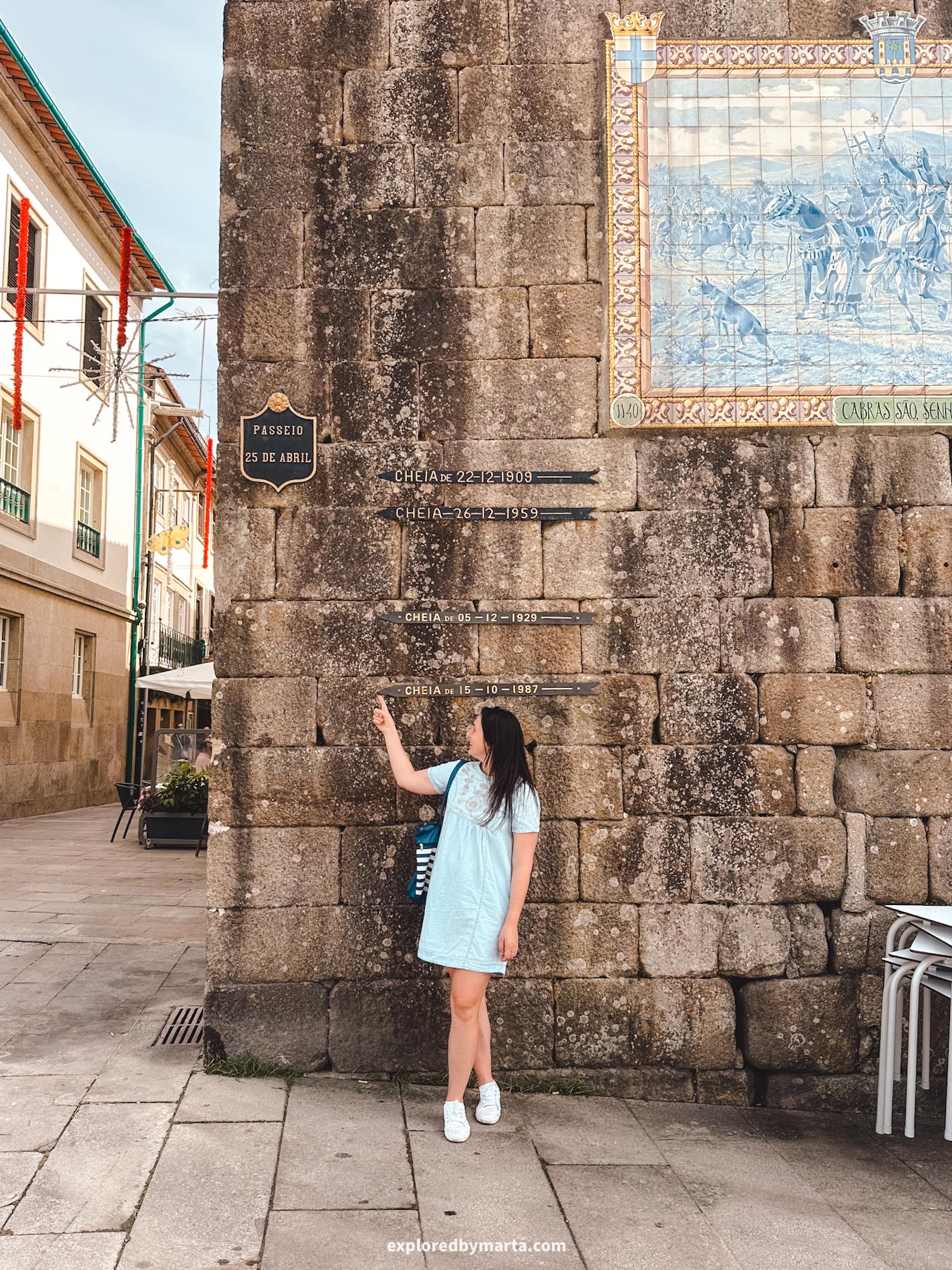
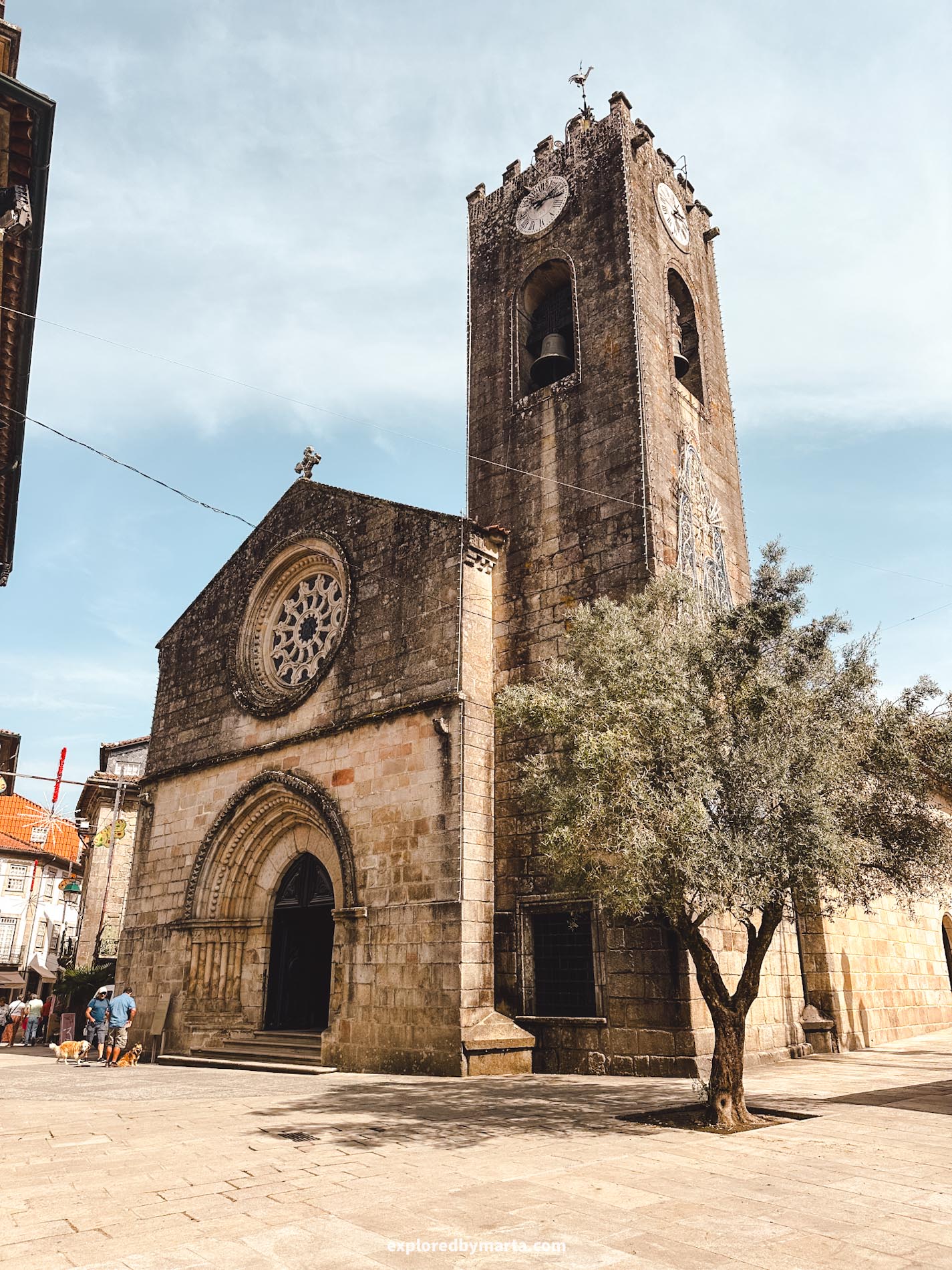
Probably my favorite part of Ponte de Lima was crossing its iconic bridge. It is made up of 31 stone arches, and some of them even date back to Roman times, but others were added later, in the Middle Ages.
If you walk along the riverbanks, you’ll find human-sized statues of Roman soldiers standing in formation on one side of the river and their commander on a horse right across the river. Those statues are tied to a Roman legend.


It says that the troops were afraid to cross the river as they believed it was the river Lethe, from Greek mythology, and crossing it would result in losing their memories.
So the commander on a horse went first, crossed the river, and then called their names one by one from the other side of the river to prove that he hadn’t lost his memory.

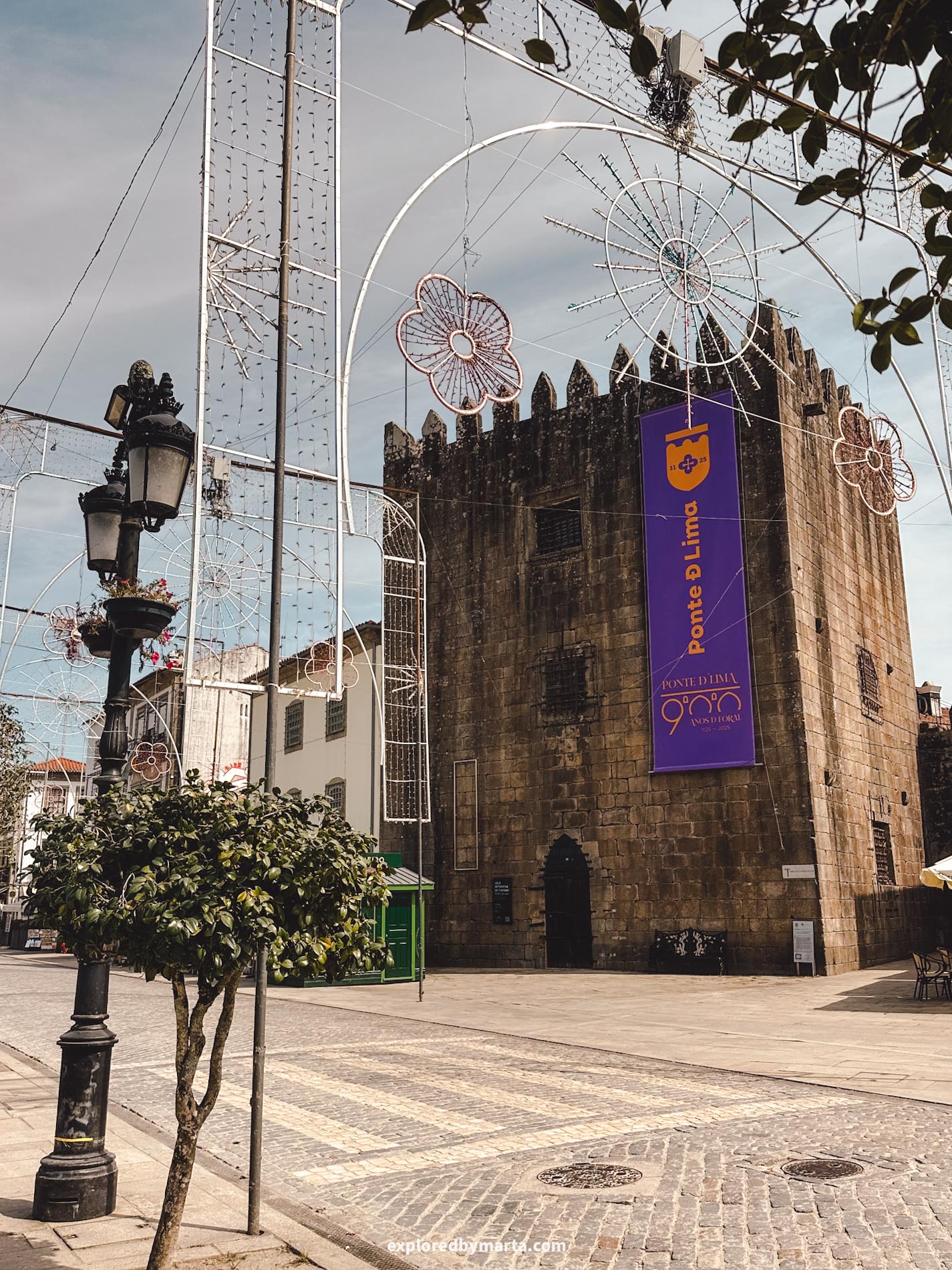
Another thing you will notice right away in Ponte de Lima is the constant presence of pilgrims walking the famous Camino de Santiago towards Santiago de Compostela in Spain. Ponte de Lima sits along The Portuguese Way, a route that starts in Lisbon.
Overall, Ponte de Lima felt authentic, charming, and timeless. The town combines long-lost history with the relaxing vibes of a modern-day small town, with locals sitting in the squares sipping drinks and kids running around.
If you are looking for authentic medieval Portuguese towns with a rich historical heritage, then this might be the one for you!
Location: Ponte de Lima
11. The oceanfront Capela do Senhor da Pedra

The oceanfront Capela do Senhor da Pedra, one of the most picturesque chapels in Portugal, is a bit of a hidden gem, but it’s also not. Locals know about it very well, but not many tourist guides mention this unique place.
So why is it unique? The tiny 17th-century chapel is built on a rock outcrop in the most photogenic setting – right on the edge of the ocean in Miramar, a short ride south from Porto (you can reach it by train).
When the wind is bigger and the tide is high, the chapel is surrounded by dramatic waves that come crashing down against the rocks. It looks pretty epic! This place is both peaceful and wild!
But on a nicer day, this is a great place to spend time at the beach. There’s a nice promenade nearby with cafés and small restaurants.
However, I’d also consider coming here in the morning for sunrise hues or in the evening to watch the sun go down into the ocean with waves painted in golden sunset views.
Either way, I hope you get to visit this very special little chapel by the ocean!
Location: Capela do Senhor da Pedra
12. Coimbra, the old capital of Portugal
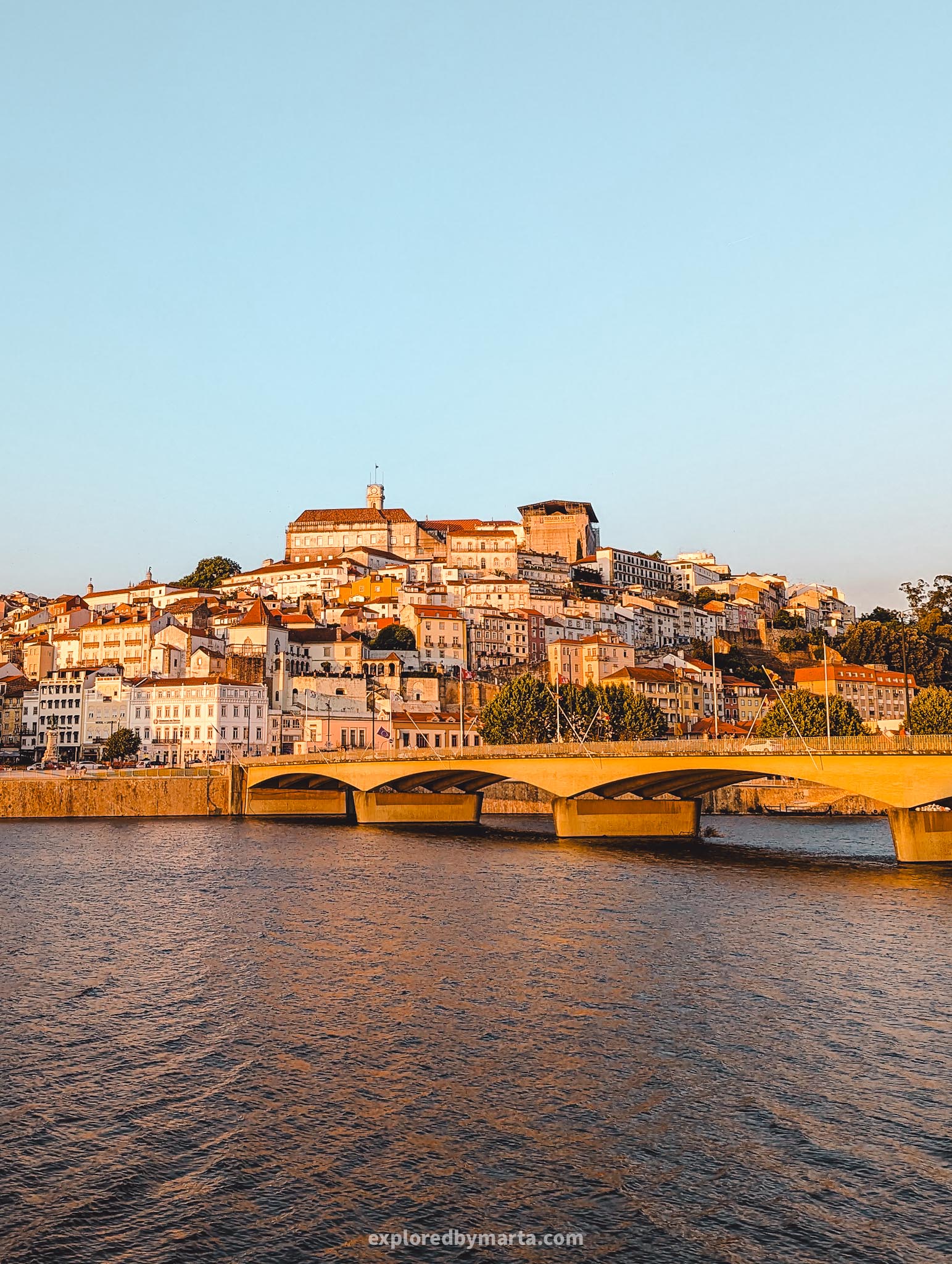
If you are curious to learn more about Portugal and its history, this destination is right up your alley!
Coimbra is the fourth largest city in Portugal and served as the Portuguese capital from the 12th to the 13th centuries. This majestic city is also home to the first Portuguese university – the University of Coimbra. Coimbra sits on a hill next to the picturesque Mondego River.
Besides the University of Coimbra, which is listed as a UNESCO World Heritage Site, there are a couple of popular places and historic monuments inside the city that are worth visiting.


One of the most well-known landmarks is Monasterio de Santa Cruz – a 12th-century monastery that houses the tombs of the first two kings of Portugal – Alfonso I de Portugal and his son, Sancho I of Portugal.
Other places of interest in Coimbra include Almedina Gate and other old city gates, Praça da República Square, the Old Cathedral, the Botanical Garden, and the Joanine Library, often regarded as one of the most beautiful libraries in the world.
We actually rented an apartment and stayed in Coimbra for a while during our travels. It really is as charming as it looks. And long evening walks along the riverside were my favorite things we did while staying there.
Location: University of Coimbra
13. Castle of Santa Maria da Feira
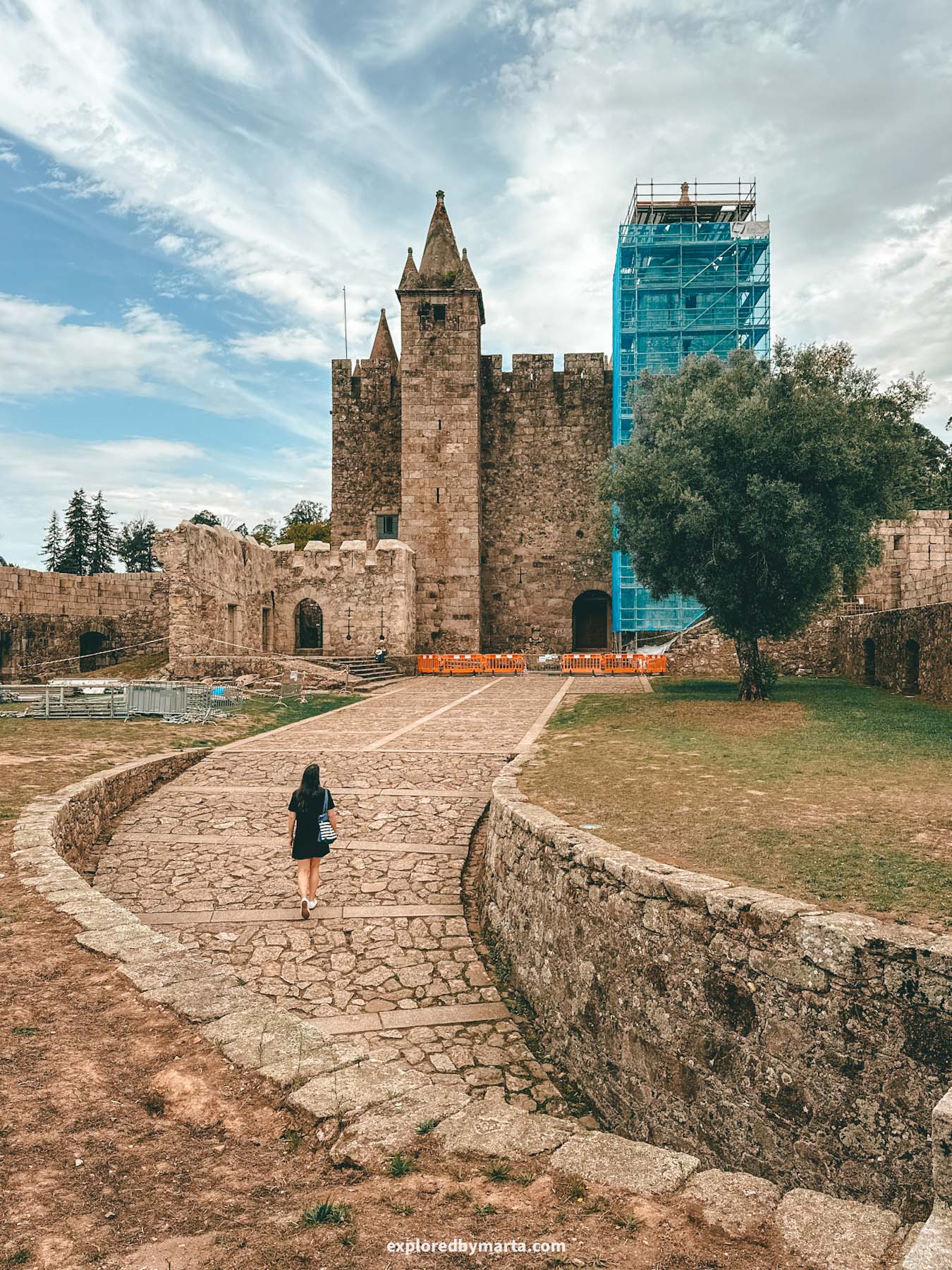
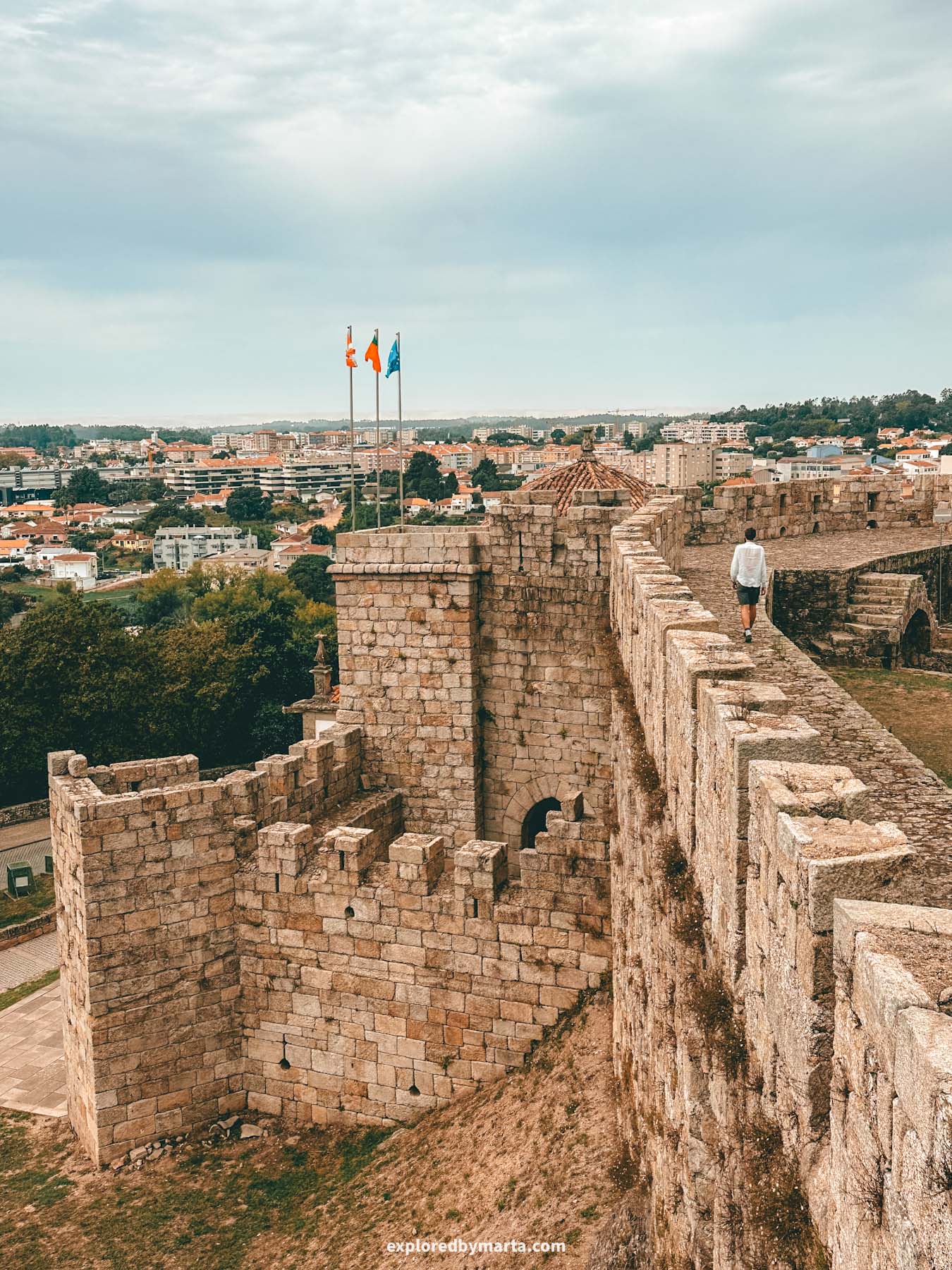
If you enjoy exploring medieval castles, a visit to the Castle of Santa Maria da Feira makes a great addition to your list of day trips from Porto.
This wonderful fortress is one of the most important examples of medieval military architecture in Portugal and is only about a 30-minute drive south of Porto.
You can easily combine a visit to this castle with other spots nearby (see some of the next destinations on this list!).

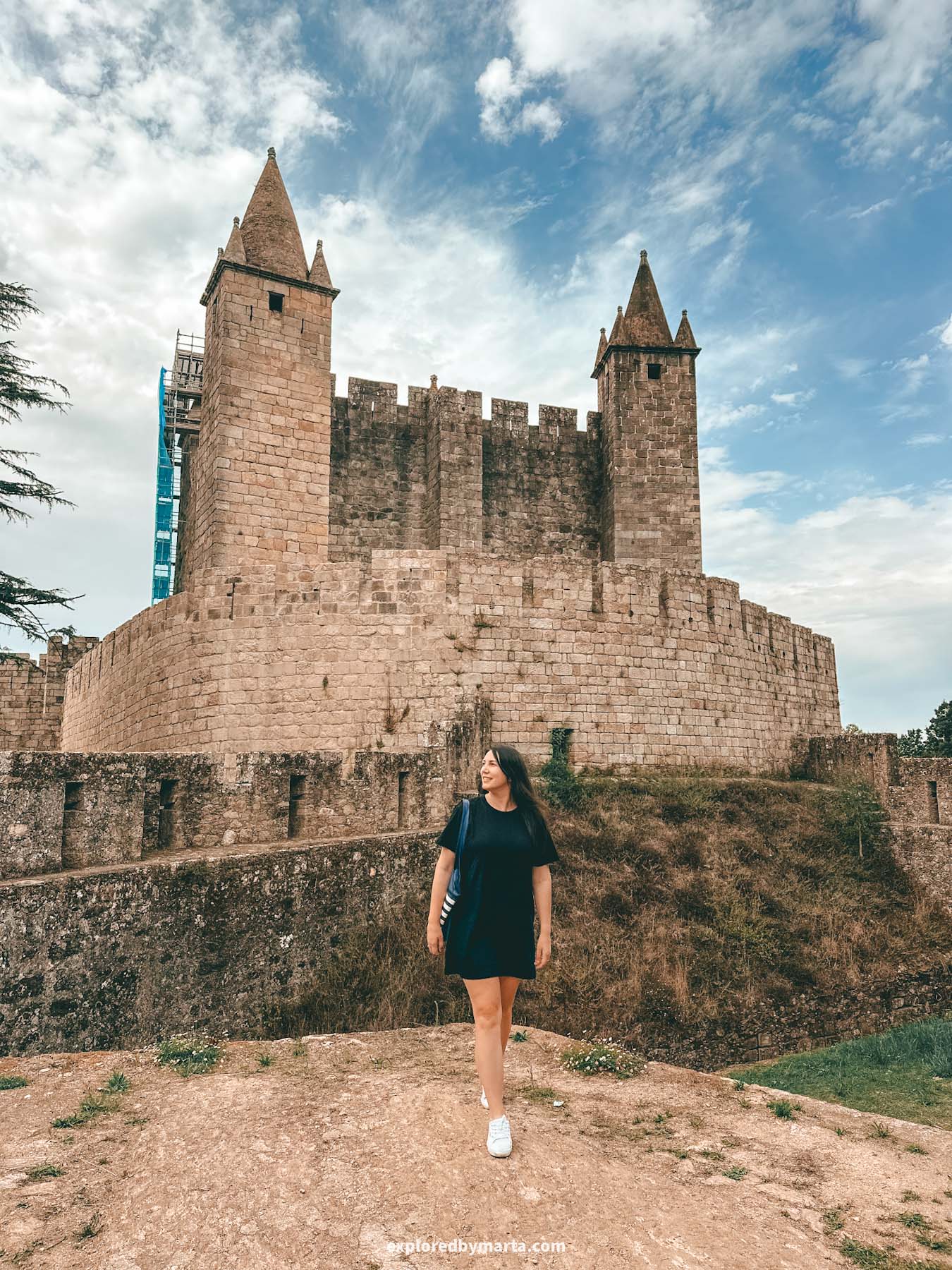
Although there have been some military fortifications in this place since the 9th century, the Castle of Santa Maria da Feira dates back to the 11th century and played a key role in defending the region and the newly created country of Portugal.
It is located in the heart of the town of Santa Maria da Feira, known for its lively festival Viagem Medieval – one of the largest medieval fairs in Europe that takes place here every summer.
During the event, the whole area around the castle transforms into a living medieval village. People walk around with medieval costumes, and there are different performers, artisans, and traditional food stalls.

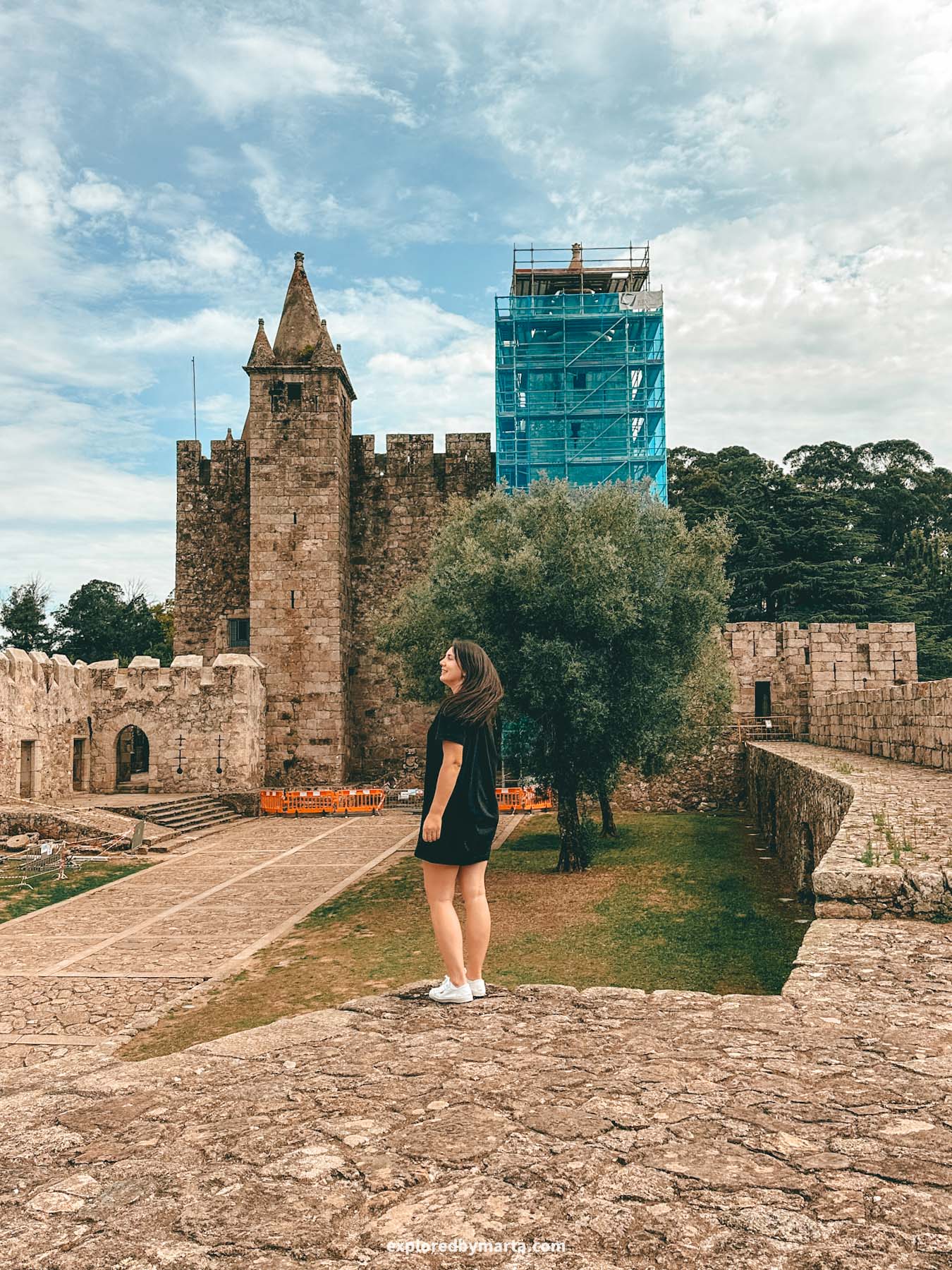
We weren’t here during the festival, and only explored the castle.
However, I very much liked its fairy-tale towers (although they renovated one of them during our visit), battlements, and stone walls with towers that overlook the whole town and the surrounding area.
We also got to explore some of the rooms inside and walk down through a tunnel to the lower floors. Even outside festival season, the Castle of Santa Maria da Feira is a beautiful spot to visit as a day trip from Porto. Truly feels like stepping back in time!
Location: Castle of Santa Maria da Feira
14. Portugal’s most colorful church: Igreja Matriz de Válega
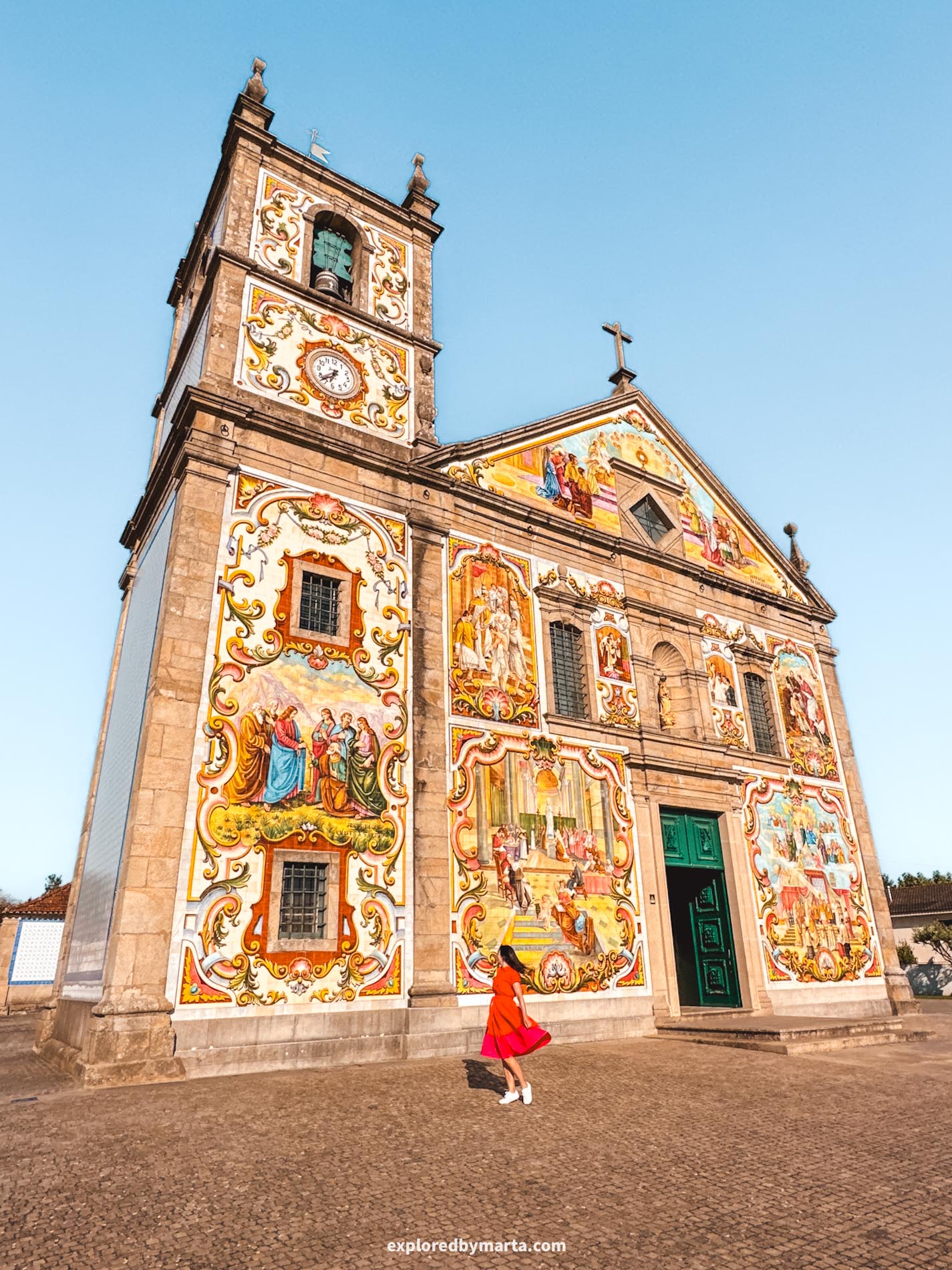
Just a stone’s throw from the Castle of Santa Maria da Feira, you’ll find the most colorful church you’ll ever see – Igreja Matriz de Válega.
I always prefer traveling by car, because it gives me the freedom to plan my own route and gives me the opportunity to visit such hidden gems as this church.
Honestly, Igreja Matriz de Válega is not only the most colorful church I’ve seen in Portugal, but it is the most colorful church I have seen in the world. And I’ve seen a considerable number of churches while traveling around the world!
Both the exterior and interior of this church are covered with colorful tiles depicting different biblical illustrations. The best part? You can visit this absolute marvel for free!
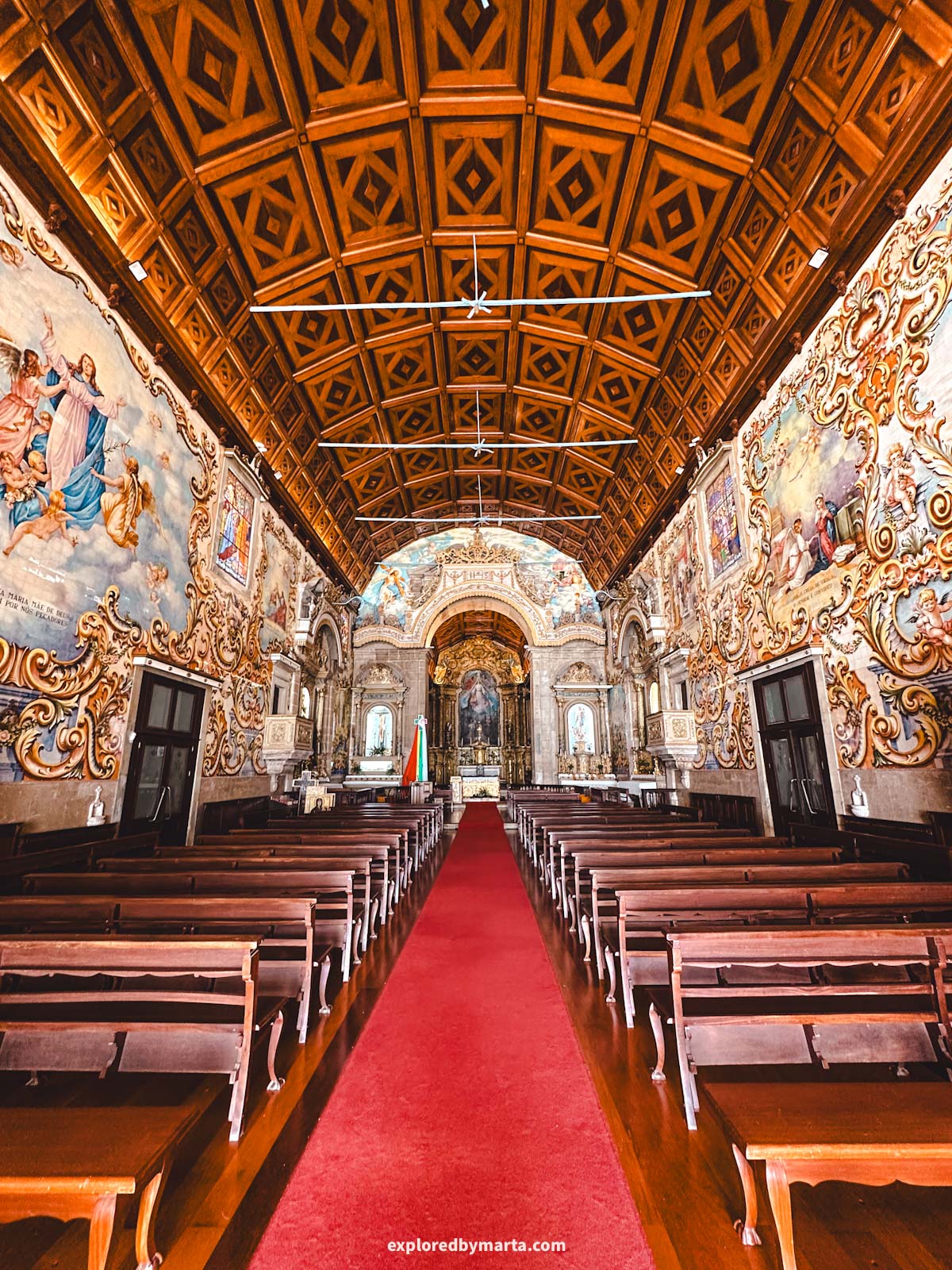
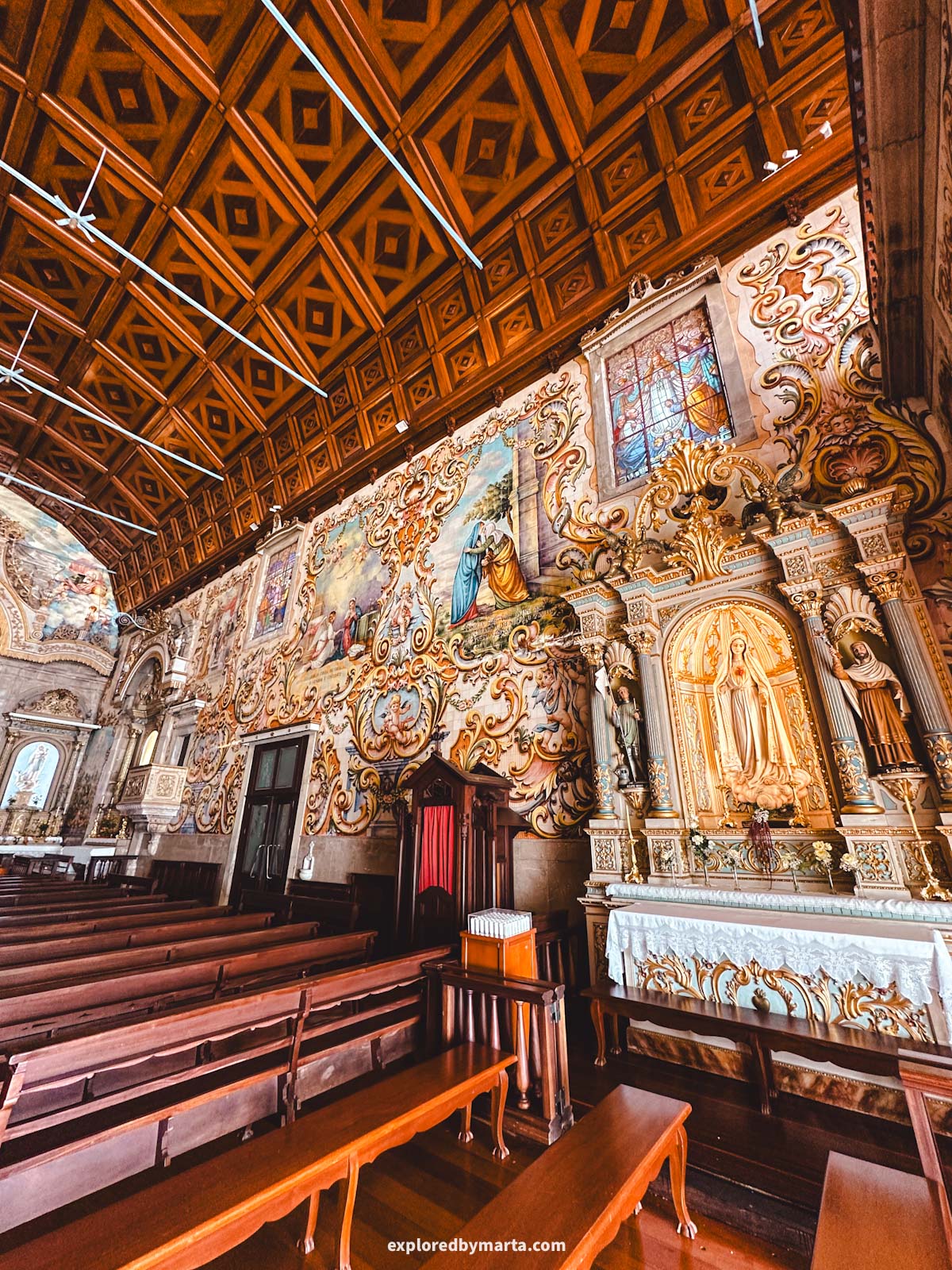
The church is located in Válega, a small town in the Aveiro district that isn’t really known to most travelers. It’s only a 40-minute drive south from Porto – the perfect place to include in the itinerary of one of your day trips from Porto.
While this church dates back a thousand years, the construction of Igreja Matriz de Válega, as we see it today, started in the middle of the 18th century and lasted for a hundred years.
However, the colorful tiles were added back in the middle of the 20th century.
The tiles cover the whole church, but the colorful part is on the main facade as well as inside. The church is freely accessible, and you can even visit the interior during its working hours. But even seeing it from the outside is a unique experience!
Location: Igreja Matriz de Válega
15. The blue church of Igreja Paroquial de Cortegaça
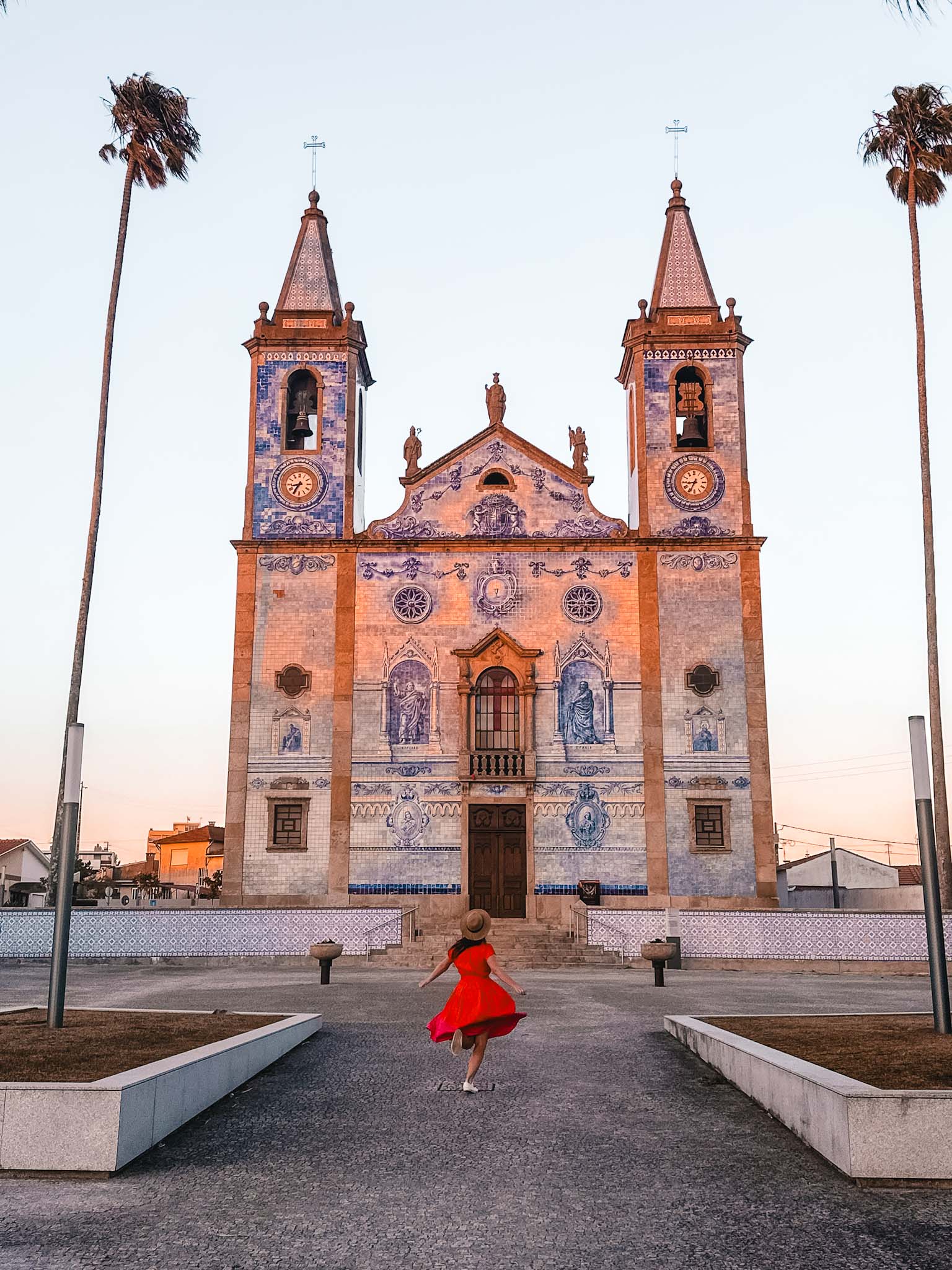
If you are into unique churches, you might as well stop by another masterpiece – Igreja Paroquial de Cortegaça. Located in the Cortegaça village in the Aveiro district, this wonderful church is among the most beautiful churches you will find in Portugal!
The building that we see today was completed in 1918 and was built to replace the old temple, dating back to the middle of the 12th century.
But, really, if you build new places on top of old buildings, they should look just as impressive and unique as this church turned out, am I right?


This striking church is located in a square at the end of an alley of palm trees. The incredible facade was covered with tiles between 1921 and 1923 and depicts religious figures.
The church also has two flanking towers topped with spires. I love the creativity that went into this church! I could only silently admire everything I saw here – it was magical!
This church is definitely one of the most exquisite examples of Portuguese tile artworks and one of the most beautiful churches in Portugal. If you have a rental car, try to include this stop in your itinerary!
Location: Igreja Paroquial de Cortegaça
16. Palace Hotel of Buçaco in the secret forest
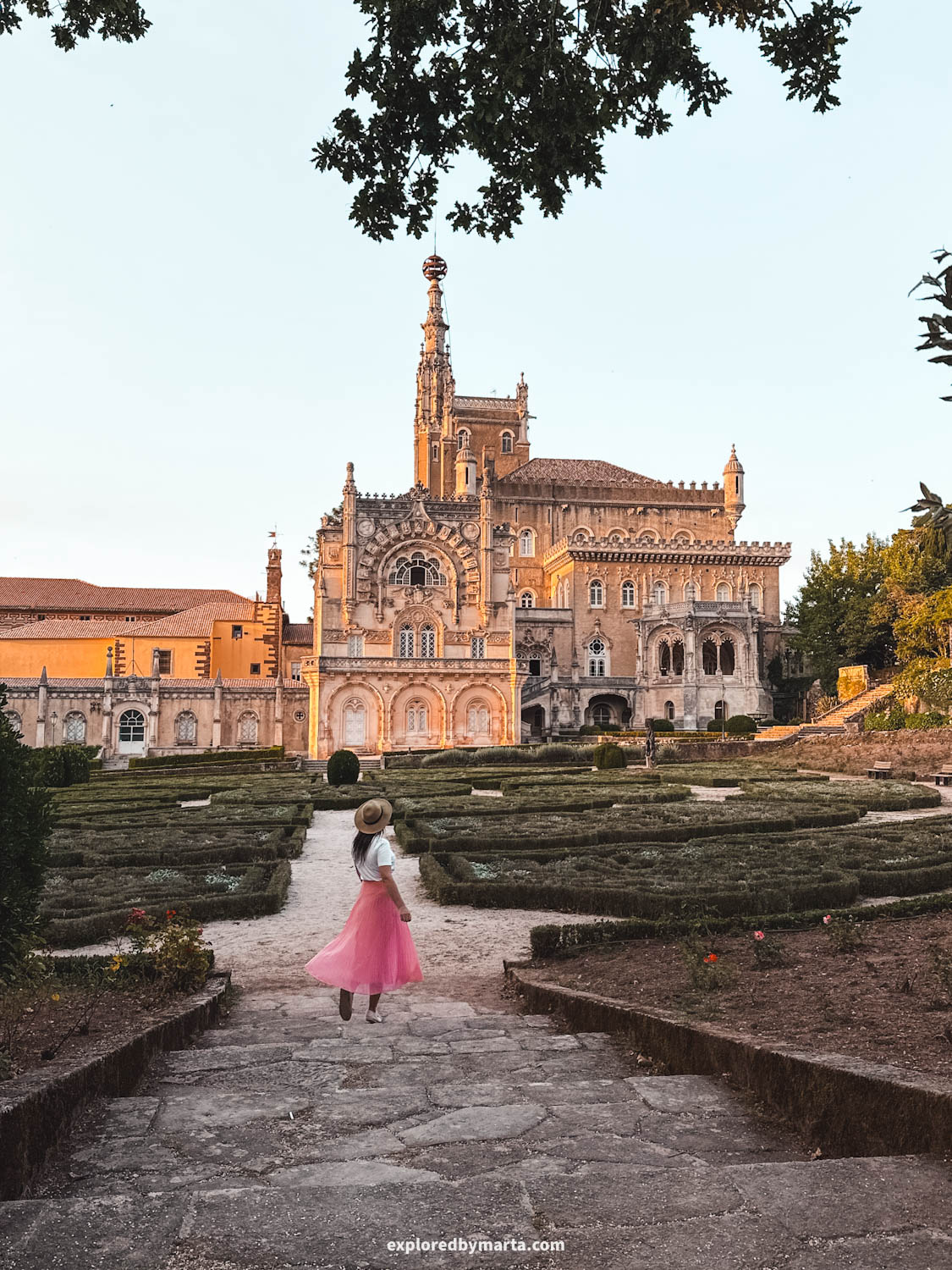
The Palace Hotel of Buçaco in the secret forest was one of my favorite hidden gems and one of my favorite palaces in Portugal. And, yes, it is actually hidden!
This wonderful gem is located in an old, lush forest, the Buçaco National Forest. While it looks like a palace, it actually is a former convent, and today it houses a luxury hotel.
However, in order to visit the palace, you don’t have to book a stay there – the property is accessible to the public for free, and we used this opportunity to explore this architectural marvel in the Aveiro district.


This secret convent, along with the luxurious garden with countless species of trees, was built in the 17th century. Part of that convent, as well as a church, is still preserved beside the palace to this day, but much of it was rebuilt.
The Palace Hotel of Buçaco, as we see it today, was finished in 1907. The palace proudly boasts a Neo-Manueline architectural style (a style born in Portugal). It is definitely one of the most beautiful buildings in Portugal!


You can freely walk around the surroundings of the palace, the spectacular garden, and the forest with its 250 plant species. It is also possible to peek inside the palace, however, we did not have time to do that.
Adding to a long list of iconic staircases in Portugal, Buçaco National Forest also hosts a 19th-century stairway right by the Fonte Fria cold water fountain. By the way, this area also sources my favorite water brand in Portugal – Luso (Luso town is next to this forest).
I loved exploring this place! The ancient arboretum, with its thick vegetation, pathways, stairs, and fountains, only added to the beauty of the palace hotel. If you are in the area, definitely stop by this wonderful place!
Location: Buçaco Palace – Fonte Fria fountain
17. Águeda, the City of Umbrellas
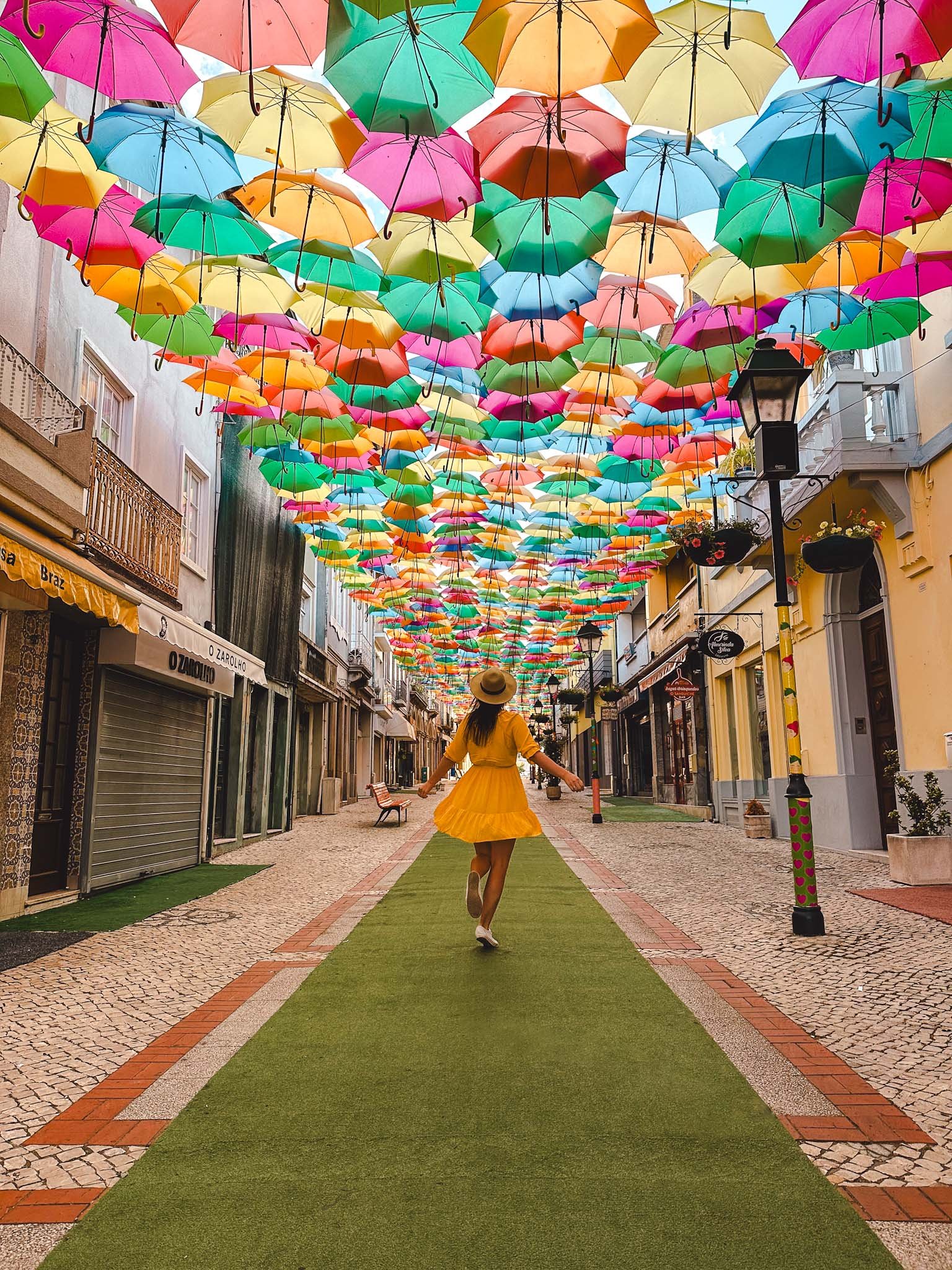
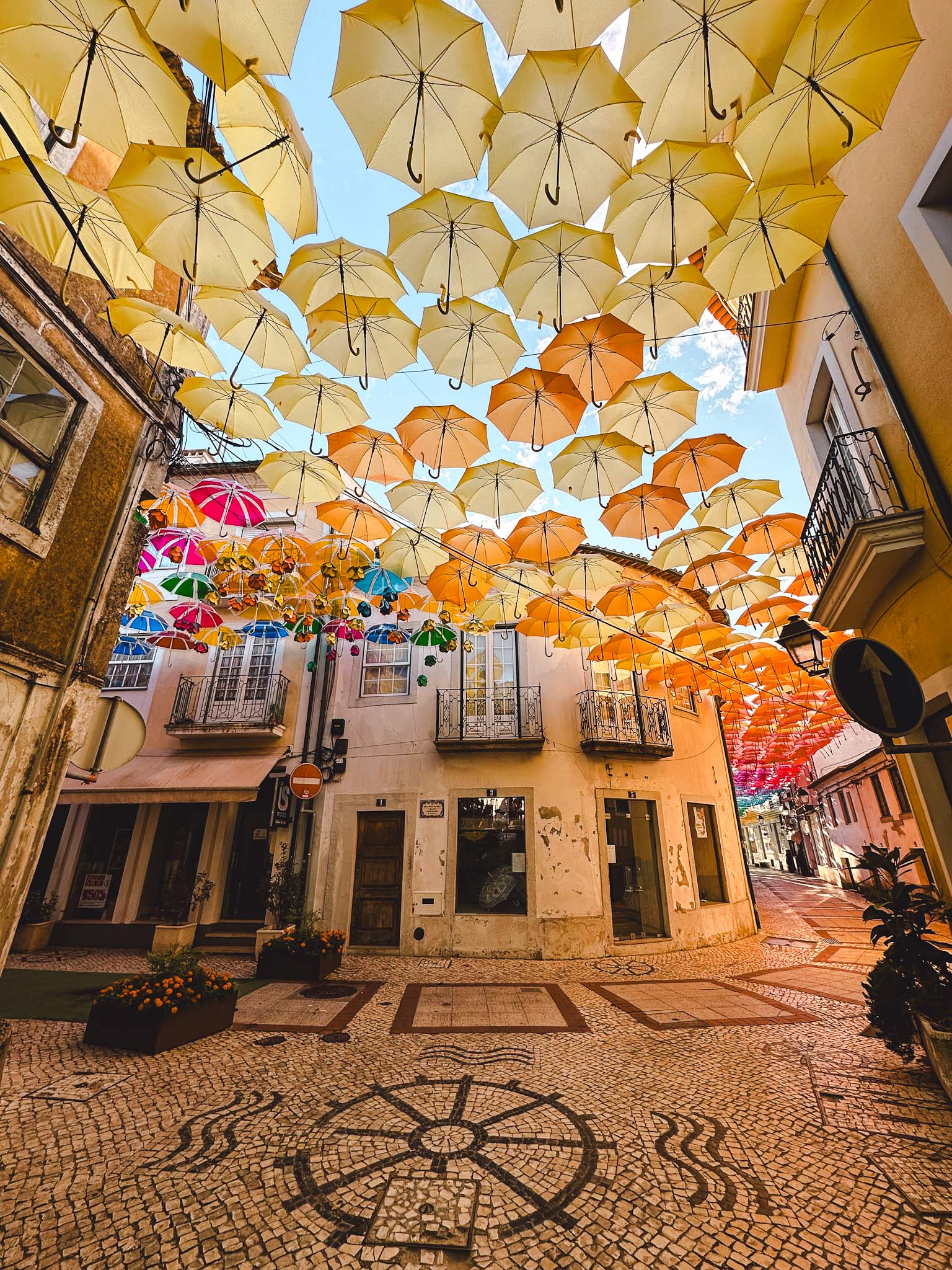
Located about 80 kilometers south of Porto, Águeda is one of those hidden gems in Portugal that surprises you in a positive way.
It is a small yet colorful town famous for its annual festival, when the streets are filled with floating umbrellas that turn the whole town into an open-air art gallery each summer.
If you happen to be traveling around Portugal from July to September, definitely consider stopping by this unique town! It is one of the most unique places to visit in Northern Portugal!


It’s a whole spectacle when the streets are decorated with thousands of colorful umbrellas as part of the globally famous Umbrella Sky Project.
When we visited, I counted about five streets that were covered with colorful umbrellas and other decorations. Not only streets, but some houses and shops also had umbrellas on them.
There were colorful benches, even a decorative car on one of the streets, as well as other colorful decorations. Luckily, I found out about Águeda at the end of August, so everything was in full swing when we stopped by.
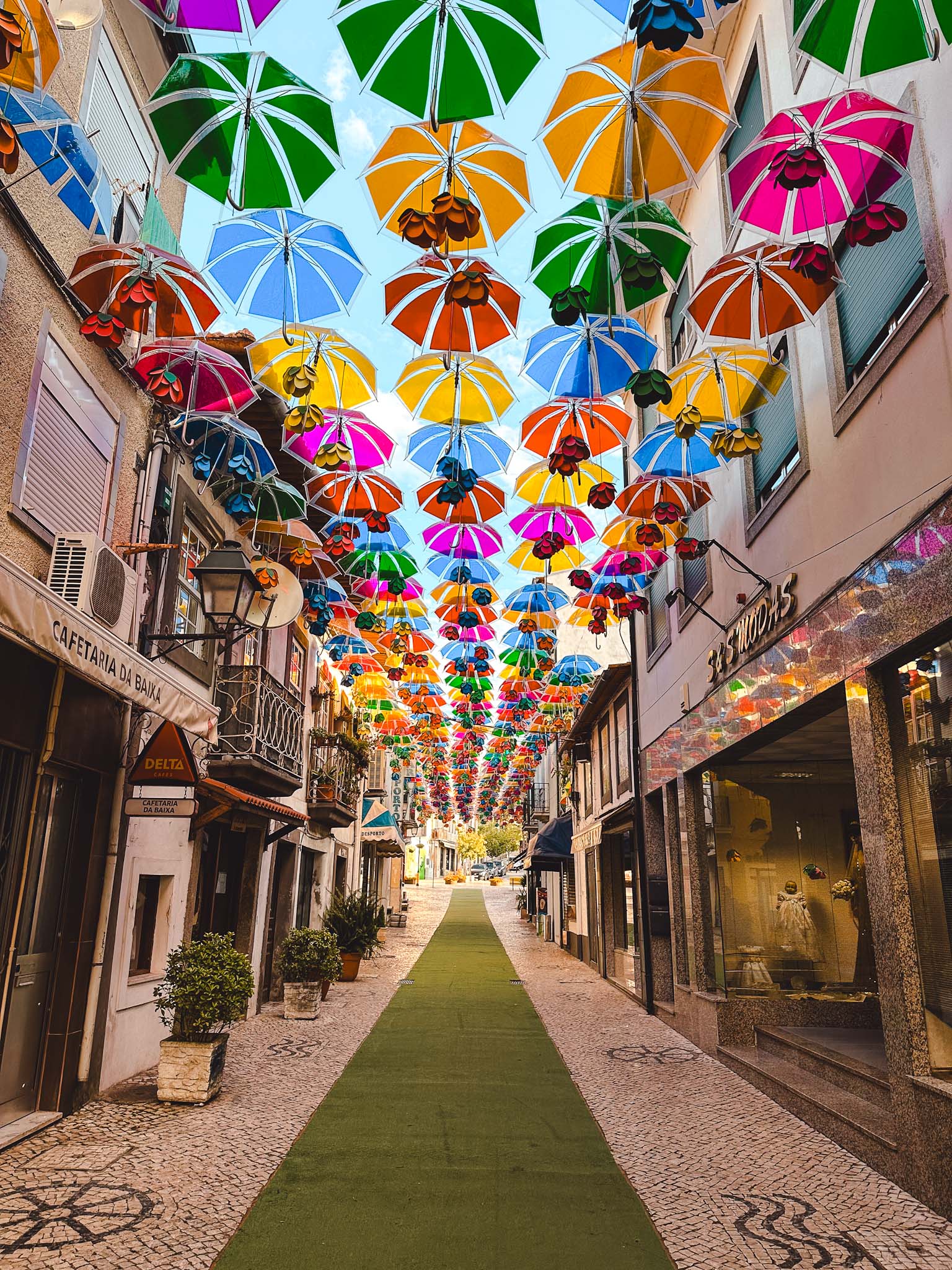
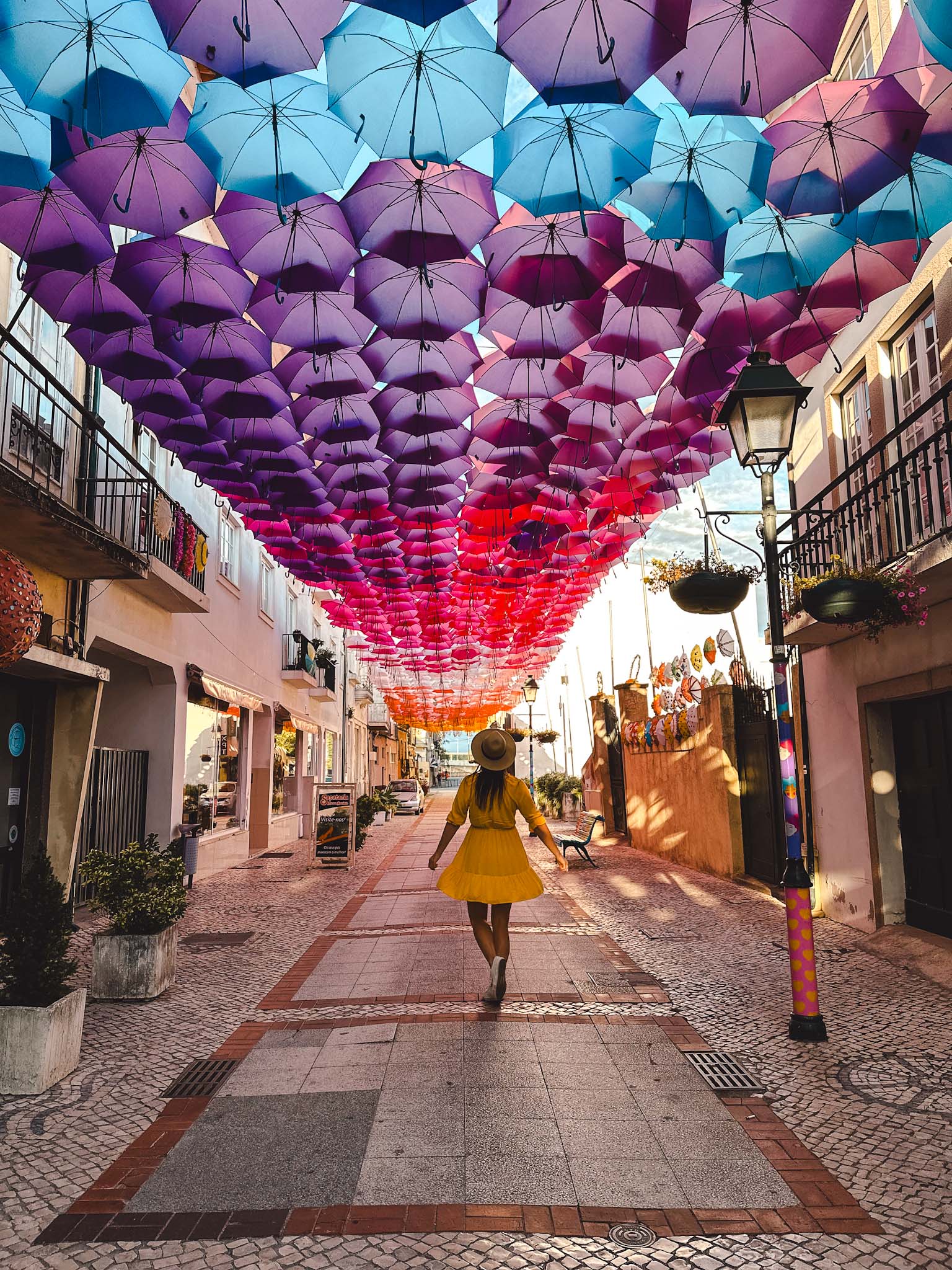
The best streets to go to see the umbrellas are Rua Luís Camões, Rua José Maria Veloso, Rua Jornal Soberania do Povo, and Rua Vasco da Gama. I also saw colorful decorations on Rua São Bento street.
Besides the umbrella art, Águeda also has plenty of street murals, painted benches, and creative installations scattered all around the town. It’s the kind of place where you just want to wander around and take pictures all the time, haha.
As far as I know, they also create a special Christmas project that you can visit during December when the umbrellas are decorated with Christmas lights. If you want to be sure before you go, I recommend contacting Umbrella Sky Project on Instagram.
Location: Umbrella Sky Project in Águeda
18. Serra da Estrela, the highest point in mainland Portugal

If you are ready for a bit of a longer drive from Porto, I recommend considering Serra da Estrela as one of your day trips from Porto!
The Serra da Estrela mountain range is the highest point in continental Portugal, reaching 1993 meters above sea level at the highest point named ‘Torre’. It is not a distinct mountain but rather the highest place on a large plateau.
Driving up to Serra da Estrela mountain is a bucket list thing to do in Portugal.
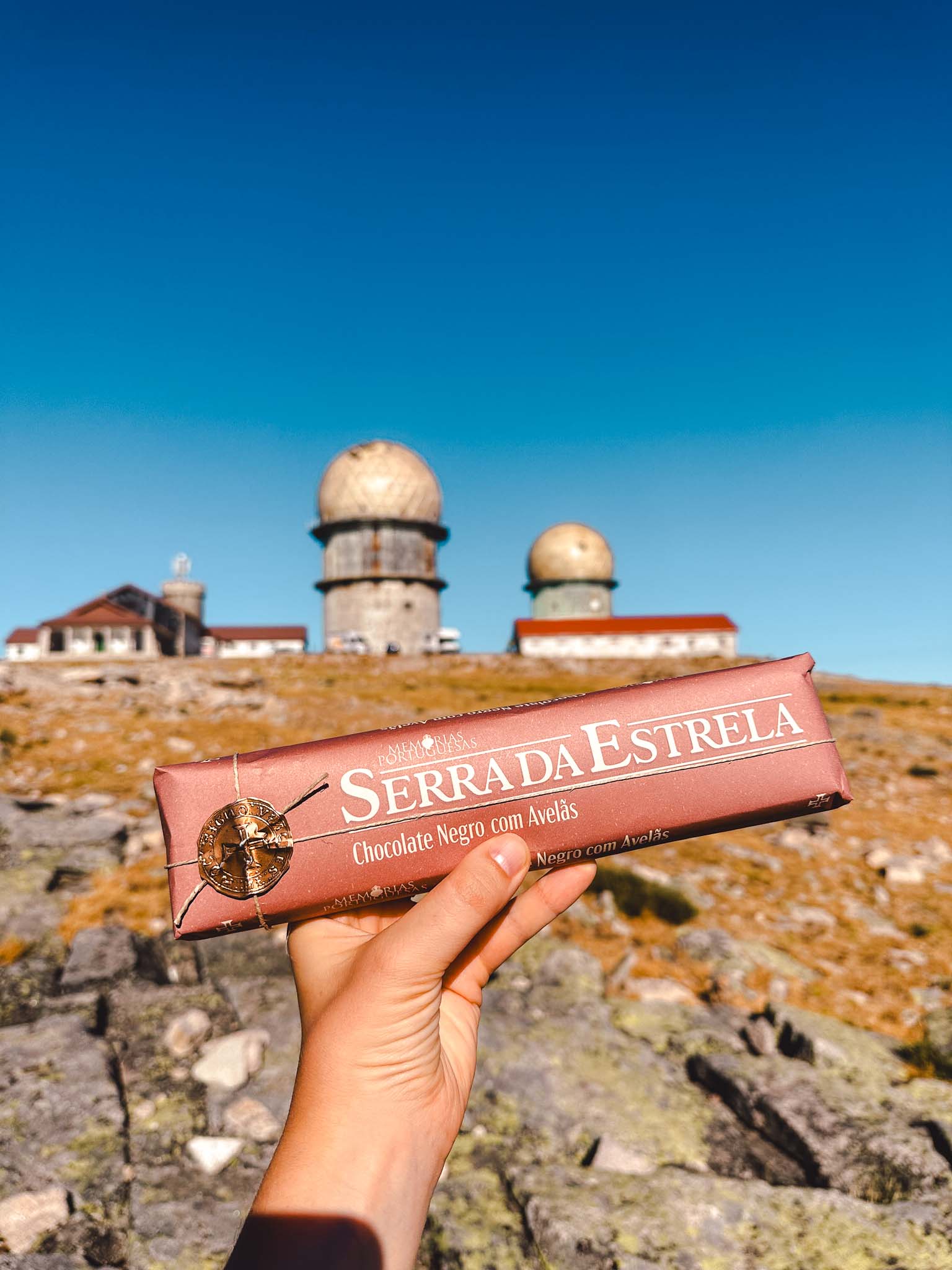
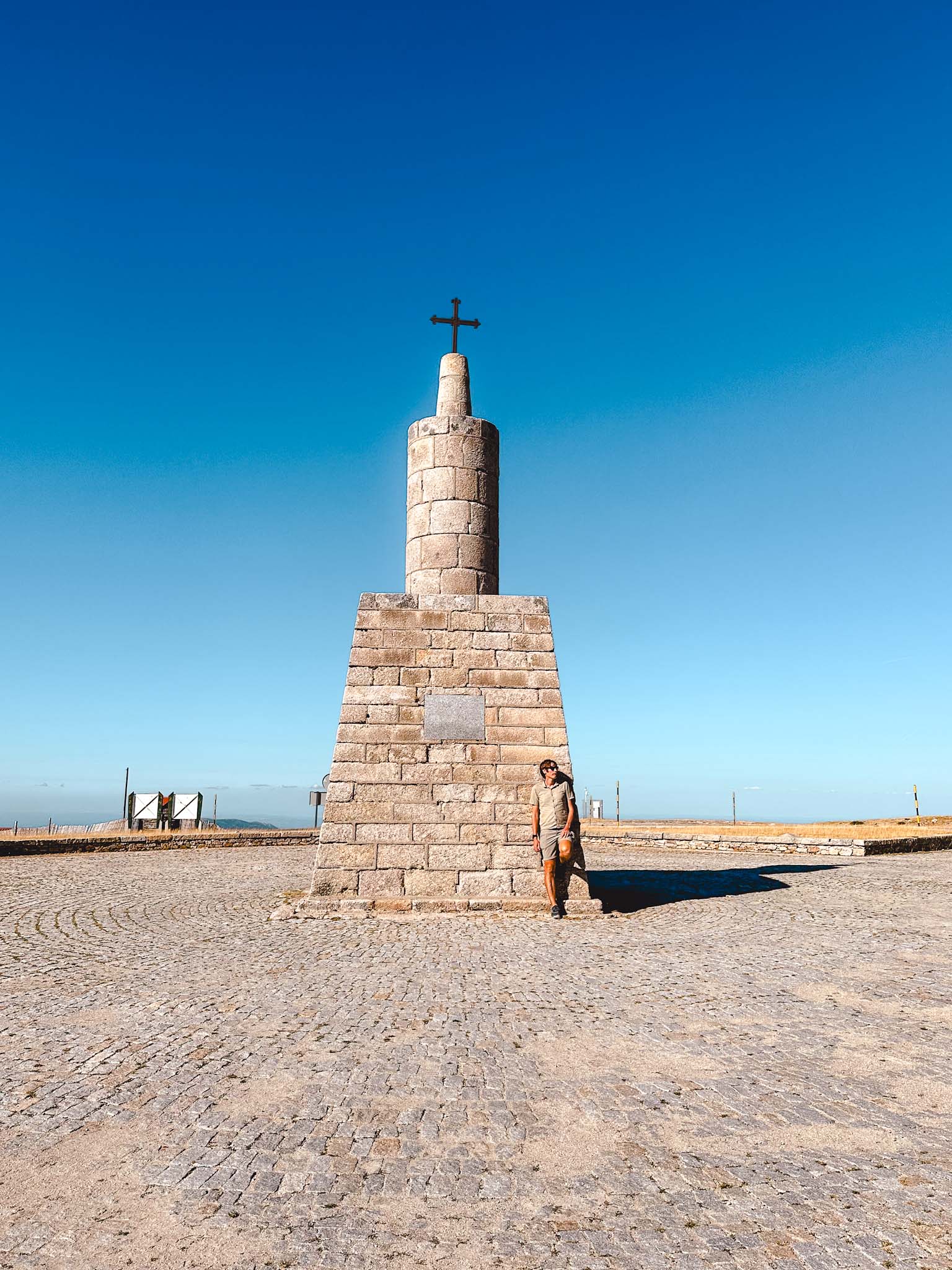
Especially because you can drive to the very top of the country by car – there is a paved road that goes through the mountains, including over the highest point.
At the top, you will see a tower with a cross on top – the highest point in Portugal. There are also a couple of restaurants and souvenir shops where you can have a meal or buy some souvenirs.
We bought some Serra da Estrela chocolate as well as the famous Serra da Estrela cheese! Its recipe is more than 2,000 years old, so definitely try it! It is soft and gooey and has a strong and interesting flavor (but in a good sense!).
Location: Serra da Estrela
19. Monsanto, the most Portuguese village in Portugal
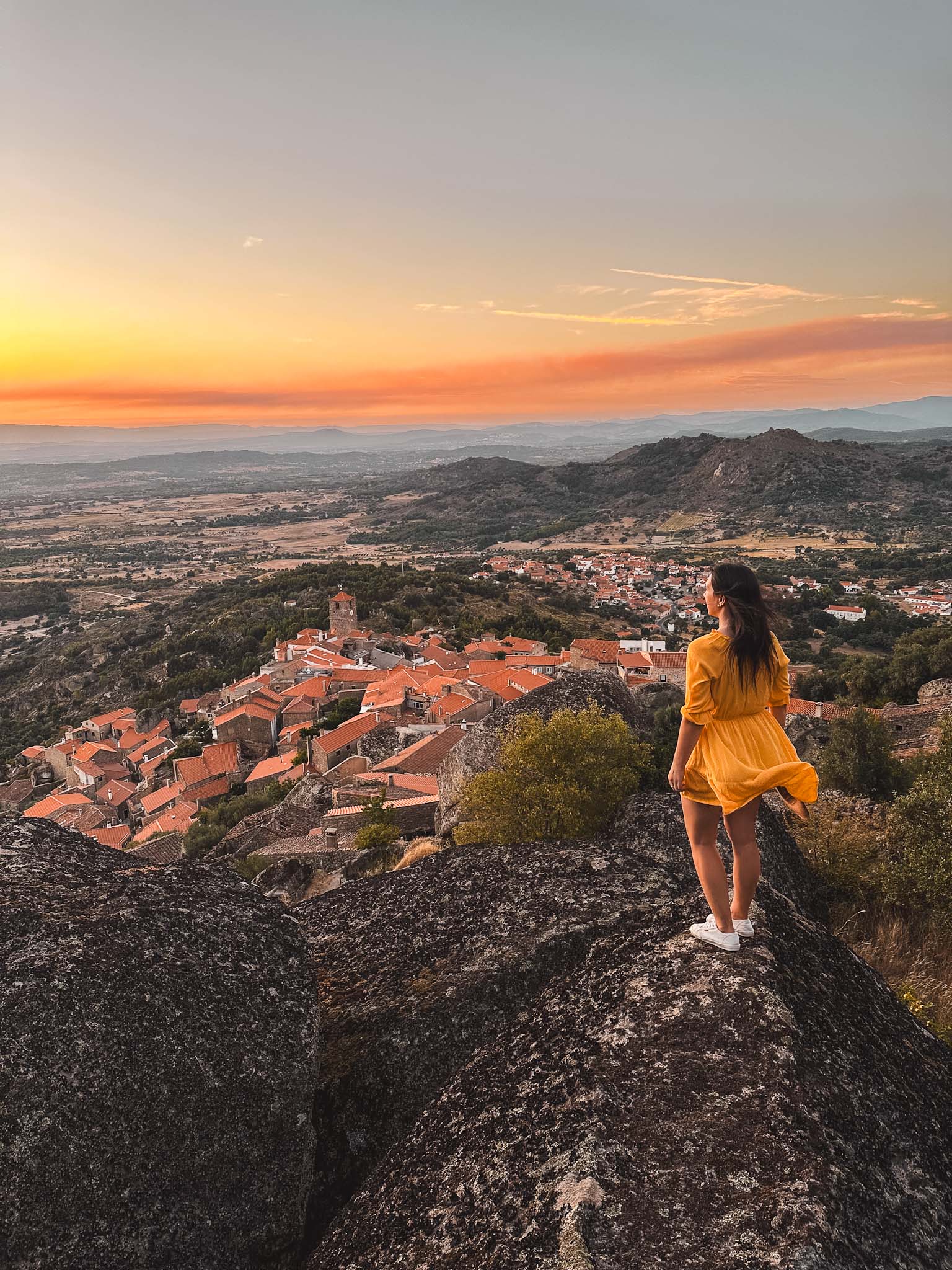
If you really decide to visit Serra da Estrela, it’d make sense to add some more destinations to your Poro road trip itinerary. And what better place to add than Monsanto, the most Portuguese village in Portugal!?
Stone caves and houses built above or under big boulders – this is the mysterious stone village of Monsanto! Voted as the most Portuguese village in Portugal, this ancient village attracts plenty of visitors who crave a feeling of stepping back in time.
Some of the best things to do in Monsanto village include climbing up to the 12th-century Castle of Monsanto, visiting boulder caves and boulder houses, as well as trying the famous cherry pastel de nata – pastel de cereja.
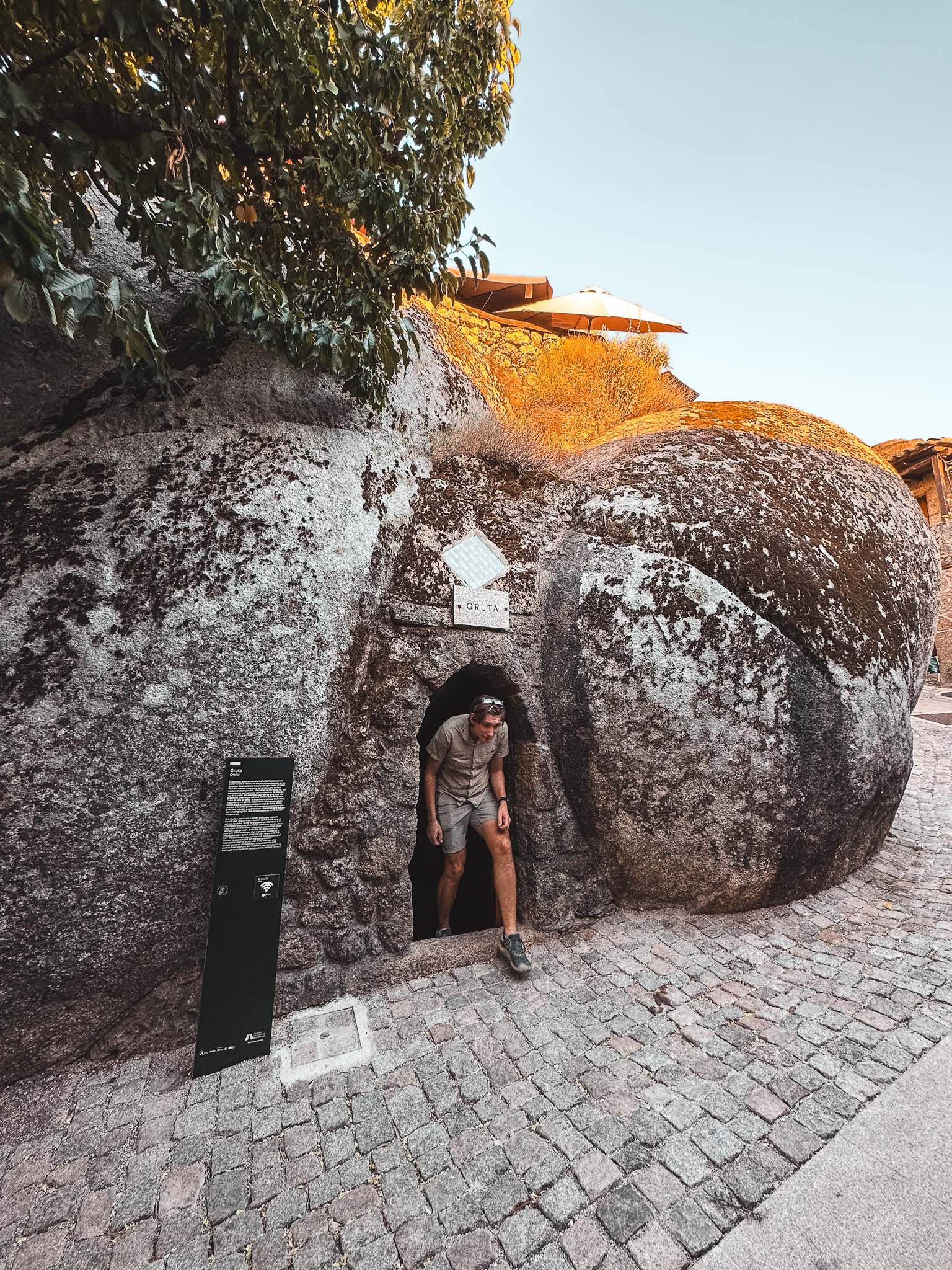

The village got extra fame after the well-known TV series House of the Dragon filmed a couple of scenes right in this village. Namely, they filmed Daemon and Rhaenyra’s wedding here on a foggy day, as well as Rhaenyra’s coronation.
However, probably my favorite thing to do in Monsanto was hunting for the best viewpoints. The village sits on a hilltop 763 meters (2,503 ft) above sea level, offering spectacular views over the surrounding area.
We saw the most beautiful sunset there!

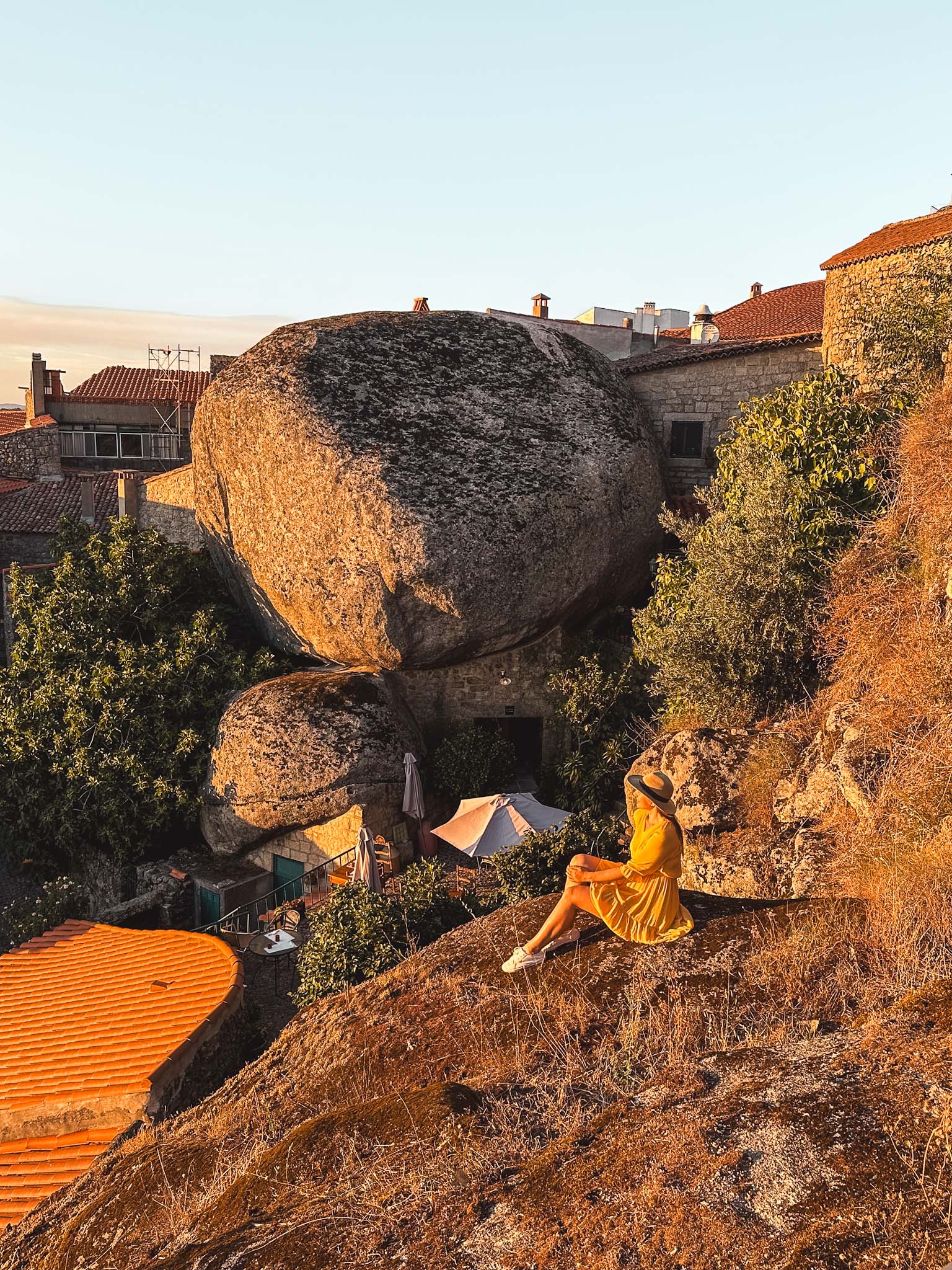
Monsanto is located deep in mainland Portugal, about a 3-hour drive from Porto. It is not an easy destination to reach, but it is very much worth it if you enjoy hidden gems and ancient places.
Monsanto is small and gets very busy during the day, so I would recommend arriving here in the evening, staying the night there (this is where we stayed), and then exploring the village the next morning before the tourist buses arrive!
This way, you’ll be able to see the sunset as well as the sunrise. They are quite magical around here.
Location: Monsanto
20. Piódão, one of the Historical Villages of Portugal
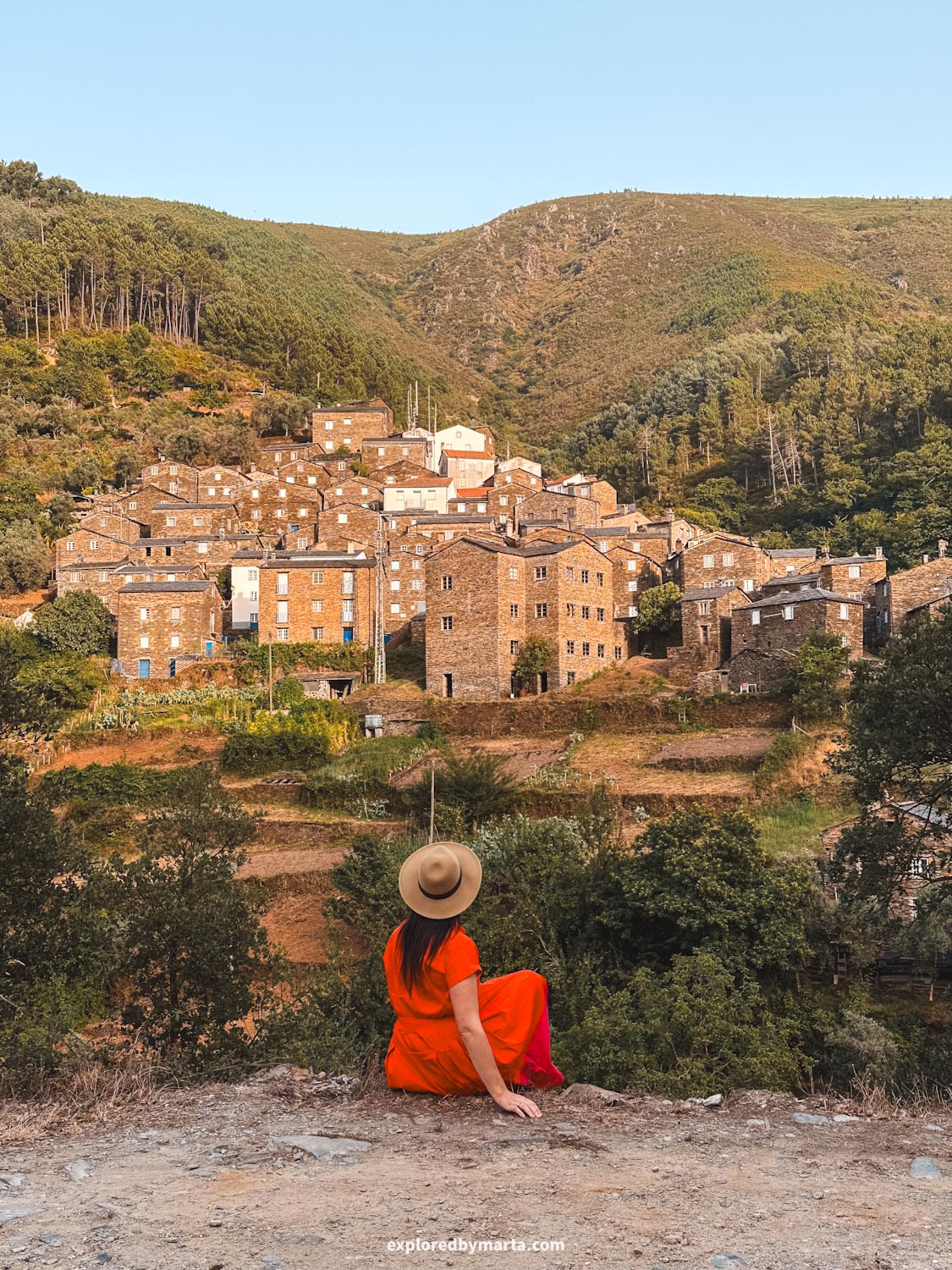
Talking about unique villages hidden deep in Portugal…have you ever heard of Piódão?
Piódão is a small village (there are 120 permanent residents in the village) hidden in the Serra do Açor mountains in Portugal, and one of the most beautiful villages we visited in Portugal.
Piódão is labeled as one of the historic villages in Portugal, which are unique ancient urban areas that were founded before the Portuguese nation itself. Needless to say, this village has experienced a lot over the centuries.


Piódão is also known as one of the schist villages in Portugal. Schist is a form of metamorphic rock typical of the Serra do Açor mountains. Every house, every wall, and every narrow street in this mountain village is made of small pieces of schist! So unique!
There are a couple of schist villages in Portugal in this area, but Piódão is probably the most famous one of all. Schist was used as it was a cheap option – the abundance of this material that was available for free was enough of a reason to use it everywhere!
Piódão is very small and you only need an hour to see everything this place has to offer. It is perfect for nature lovers as its scenic access roads lead through the mountains. If you seek lost places and unique experiences, this is the place for you. We loved it!
Location: Historical Village of Piódão
21. Castelo de Bragança
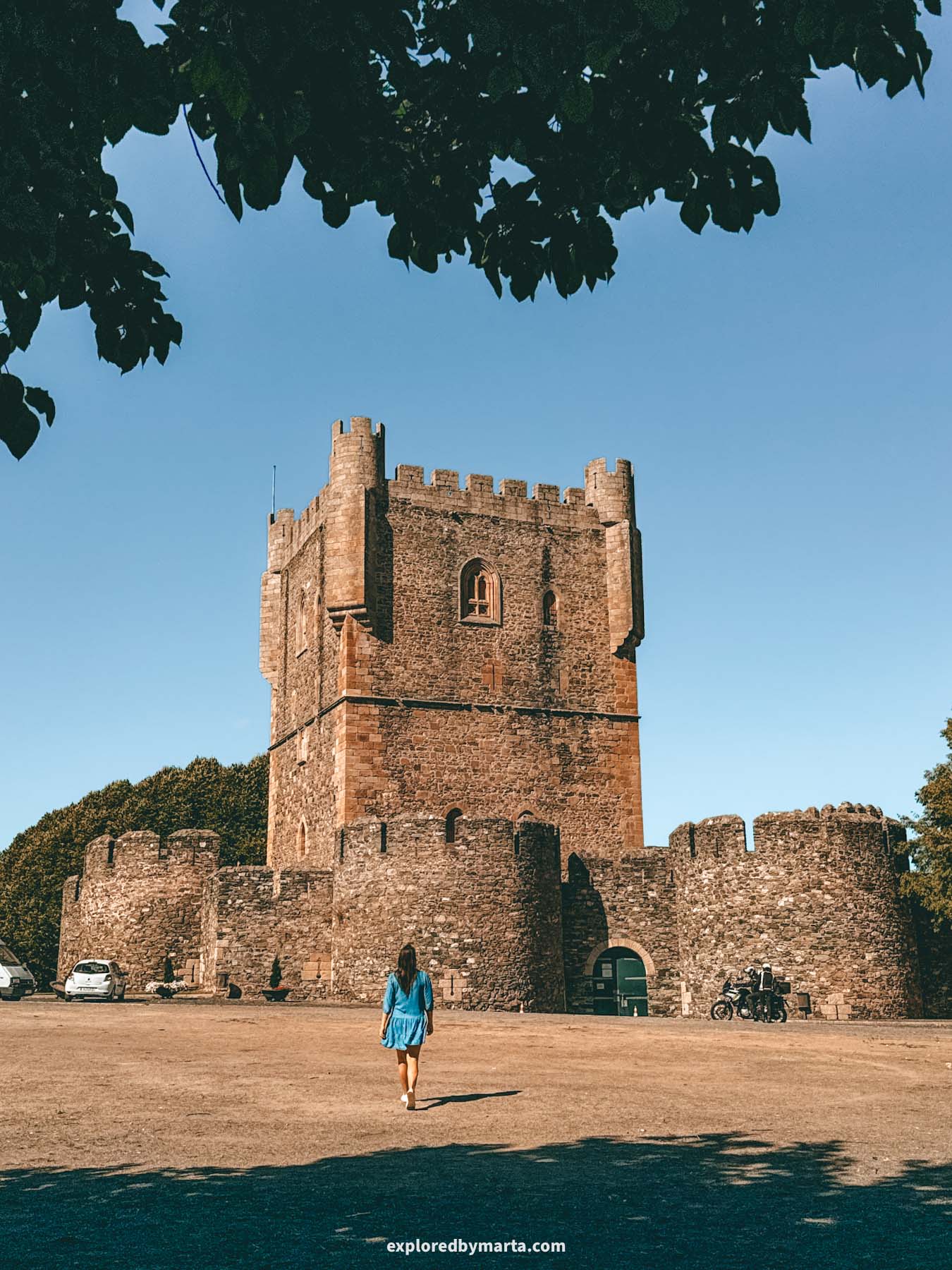
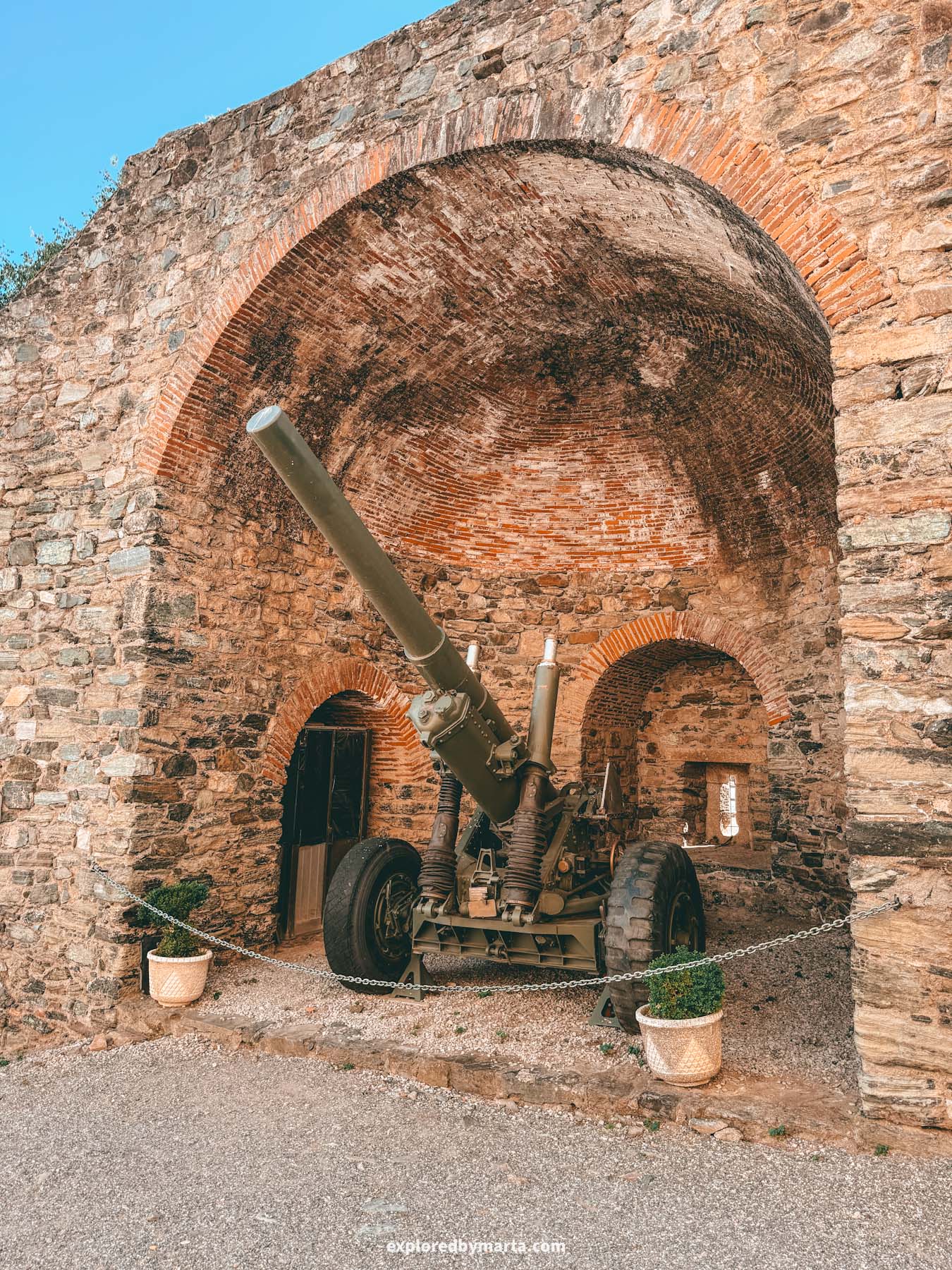
Another worthwhile destination, a bit further away from Porto, is Bragança.
Located close to the Spanish border, this small city is the capital of the Trás-os-Montes region, one of Portugal’s most remote and authentic areas. If you’re looking for a destination that feels off the beaten path, Bragança is a great choice for a day trip from Porto.
The highlight of Bragança is its impressive medieval castle, Castelo de Bragança, which dominates the skyline. Built in the 12th century by King Sancho I, it is one of the best-preserved castles in Portugal.
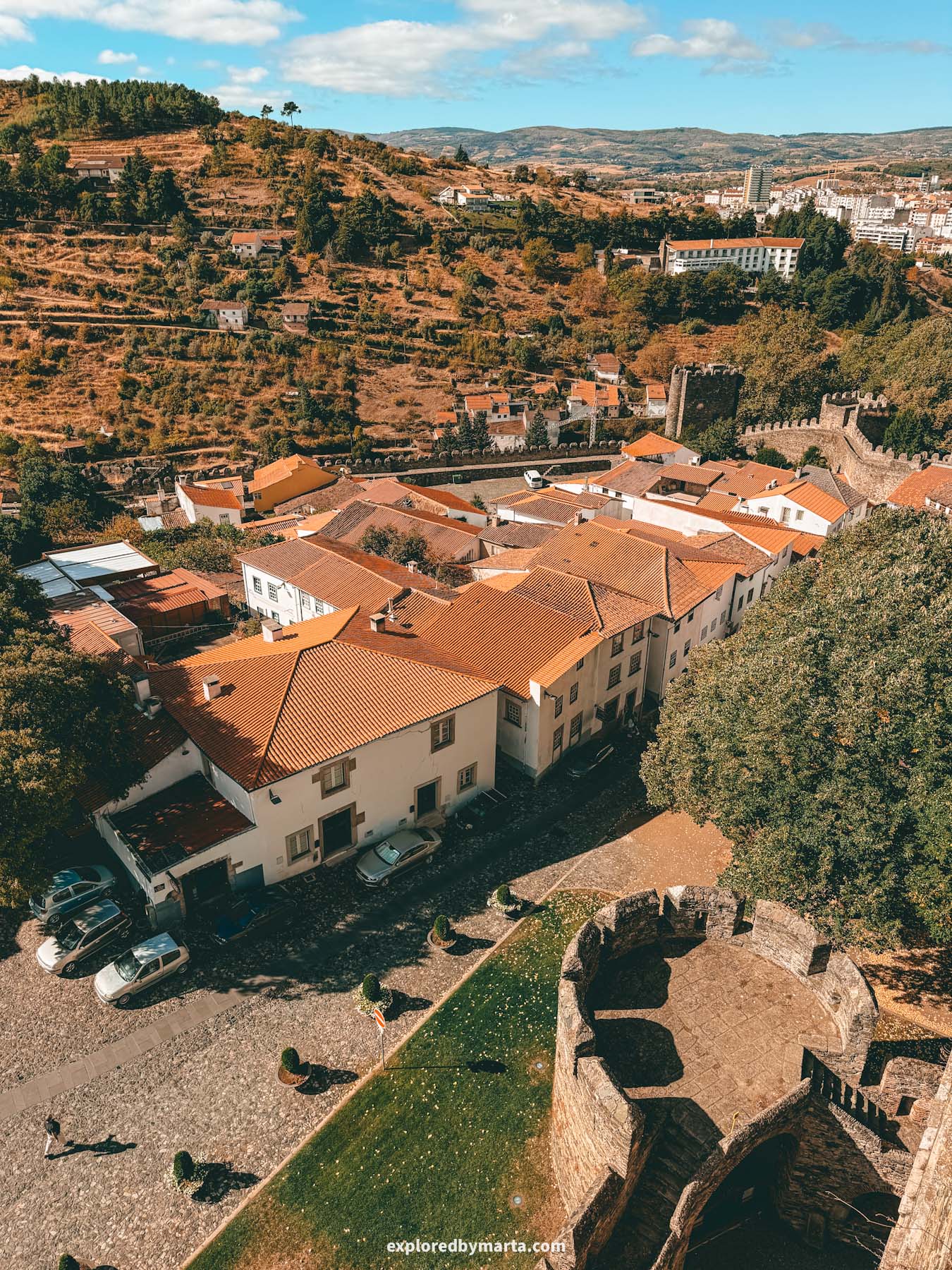

Inside the castle walls, you’ll find a small medieval village with cobblestone streets, traditional stone houses, and a charming church.
At first, I was actually quite skeptical about visiting this castle. We had to drive for hours to get there and then those same hours to get back to our apartment. However, it turned out to be one of my favorite medieval castles in Portugal.
For a small entrance fee (they asked for it in cash), you can not only explore the territory within the castle walls, but also climb the walls and the impressive, 33-meter castle tower for panoramic views of the city and the surrounding countryside.
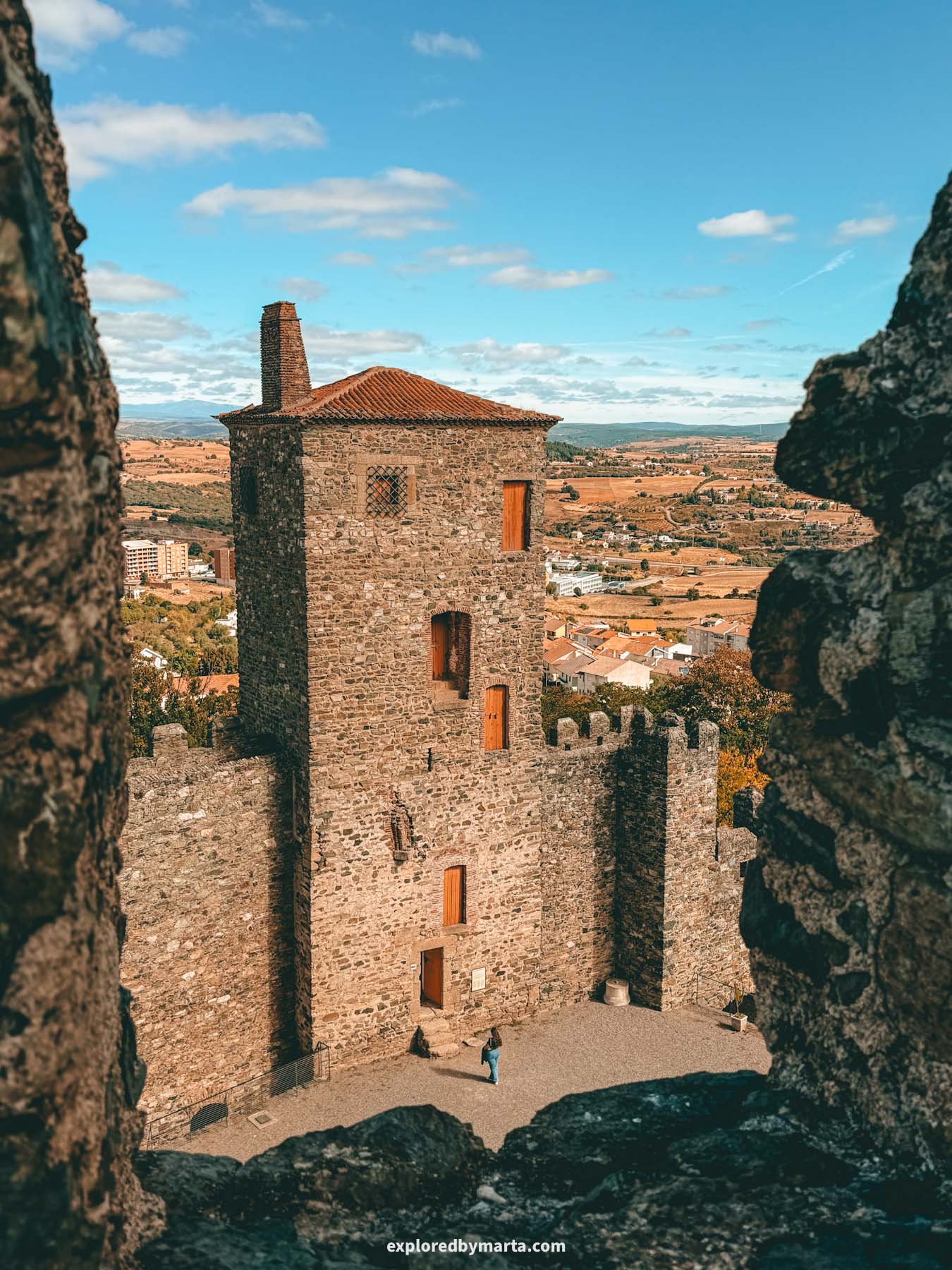
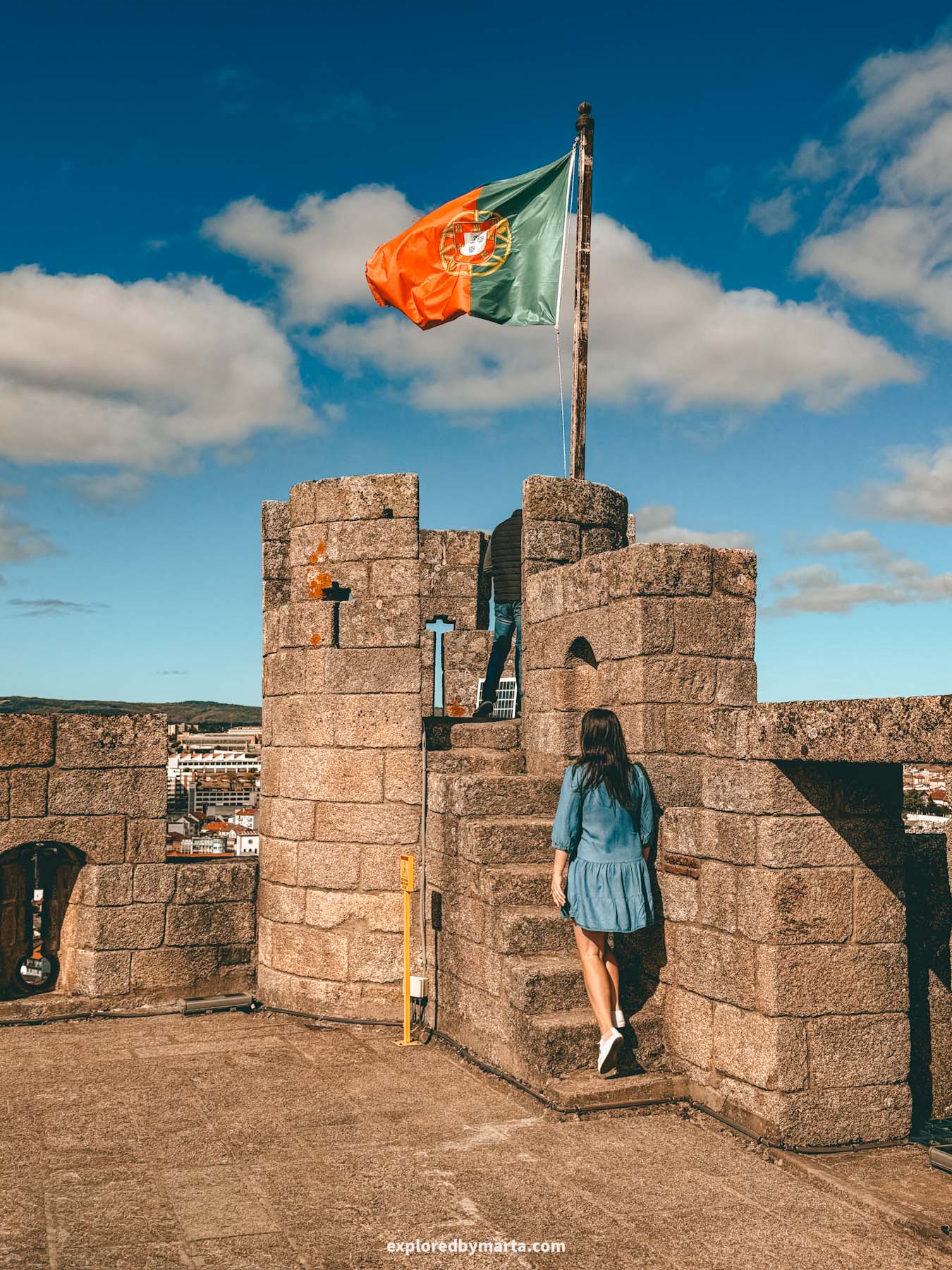
And not only that! The castle tower is actually a Military Museum, which houses a collection of ancient weapons, maps, flags, armor, and many more interesting artifacts from Portugal’s history. It was so cool and so interesting, we spent over an hour there!
Fun fact – the castle also gave its name to the House of Braganza, which is one of the most important royal dynasties in Portuguese history. They ruled over the country from the 17th to the 20th century and produced 15 Portuguese monarchs!
Bragança may not be as well-known as other cities in northern Portugal, but that’s part of its charm. It’s quiet, full of history, and gives you a real taste of traditional Portuguese life away from the crowds. If you happen to be nearby, do not hesitate to stop by this place!
Location: Castelo de Bragança
Happy exploring!
Porto is one of those cities that’s already amazing on its own, but what makes it even better is how many great destinations you can easily visit nearby. From historic towns and charming villages to stunning nature and iconic churches, there’s so much to explore!
We spent months living in Northern Portugal and exploring everything there was to see. Whether it was the medieval streets of Guimarães, water canals in Aveiro, or climbing the famous stairway to Bom Jesus do Monte in Braga, each place was something unique and memorable.
If you have a few extra days in Porto, definitely take the time to explore beyond the city. You’ll discover beautiful places, local traditions, and food. No matter which direction you go, every day trip from Porto will show you a new side of this incredible region. Happy travels!
PIN FOR LATER!
